


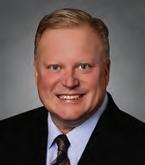









EDITOR’S NOTE
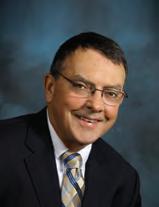
DAVE WHITE
Dave White is the editor of BoardRoom magazine. If you have comments on this article or suggestions for other topics, please send Dave an email to: dave@boardroommag.com.















DAVE WHITE
Dave White is the editor of BoardRoom magazine. If you have comments on this article or suggestions for other topics, please send Dave an email to: dave@boardroommag.com.
Undoubtedly, the 105th PGA Championship played at Oak Hill Country Club in Rochester, NY, recently scored a big hit for the PGA and sits as a highlight for John Lindert, who’s in the early stages of his two-year term as PGA President..
Lindert handed the Wanamaker Trophy to Bruce Koepka, whose steady performance earned him his third Championship, $3.15 million and fifth major title.
That’s just one of the many duties of Lindert as PGA President, who is the focus of our cover story in this issue of BoardRoom.
“As PGA Professionals, we wear many hats. From business operations to golf instruction to social media, people don’t realize how much a PGA Professional is involved in all aspects of the business,” Lindert asserted in his interview with BoardRoom
Lindert, a PGA member for over 35 years and Director of Golf at the Country Club of Lansing, suggests the role of the PGA member is constantly expanding and through continuing education, PGA Professionals can achieve their aspirations.
“We’ve divided our career paths into three categories: Executive Management, Golf Operations, and Teaching and Coaching. Just about any job responsibility you can think of falls under these three categories,” Lindert explained.
This offers PGA Professionals the opportunity to continue their career growth and education within their career choices.
As a sidelight to Koepka’s win, club pro Michael Block warmed the cockles of thousands of spectators with his outstanding performance, including a dazzling on-the-fly, holein-one on the 151yard, par 3, 15th hole.
Block earned the Low Club Professional honors, ending up one over for the Championship and tied for 15th and $288,000.
Block, whose day job is head golf professional at Arroyo Trabuco Golf Club in Mission Viejo, CA, now has a pass to the next PGA Championship at Valhalla Golf Club in Louisville, Kentucky, and likely more invites in between.
n n n
Many issues can lead to a dysfunctional board of directors as outlined in Publisher’s Perspective, Part I, Measuring the Cost of a Dysfunctional Board of Directors, published in our March/April BoardRoom
As outlined in Part I of this series, a dysfunctional board affects many aspects of a private club operation, including the member experience, employees, finances, strategic planning
and collaboration between the club’s senior management and the club’s board of directors. And there are many reasons for a dysfunctional board.
These reasons and possible solutions are the focus of Part II of Publisher’s Perspective in this issue. So, what is the road to a successful board? Strong leadership, an agreed-upon vision, accountability, strong leaders and a diverse board, among others.
And as our publisher, John Fornaro, suggests, a firm definition of roles, a clear strategic vision and a commitment to effective decision-making help ensure a club’s long-term success and protect its reputation and financial well-being.
n n n
Booze in the BoardRoom has long been a touchy subject in the private club industry.
It’s all part of boardroom decorum and behavior. In his article on this issue, Gordon Welch, president of the Association of Private Club Directors, suggests it’s everyone’s responsibility to set and enforce a business character. It’s a must-read... business meetings are the ‘business of the club’ and should be done in a business atmosphere, just like any other company.
n n n
Congratulations to Craig Marshall, known as “The Monk” and Randy Doerr, principal with Strategic Club Solutions, on being recognized as recipients of the Gary Player Educators of the Year for 2023.
Rick Ladendorf joined forces with Marshall about six years ago to develop a revolutionary leadership development program based on Craig’s 35 years as a yoga monk. Together they created “Mindful U”, a program that promotes mental health and well-being through mindfulness, self-reflection, learning and unlearning. As Craig says in this article written by Ladendorf, “the impact of Craig’s teachings is evident in the testimonials of those who have participated in Mindful U.”
Jim Cardemone, CCM, CCE, general manager/COO at Glen Oak Country Club, Glen Ellyn, IL, says Randy Doerr, who has spent over 25 years in the industry, is passionate about developing and educating others to help them grow and succeed.
After being certified as a business coach, Doerr founded Strategic Club Solutions to develop and deliver solutions and educational resources and programs to board and club managers.
“It’s a well-deserved award for a wonderful leader in the club industry,” Cardemone noted. Congratulations to both! BR
Publisher/CEO
John G. Fornaro
Editor
Dave White
Chief Creative Officer
Heather Arias de Cordoba
Copy Editor
Chryssoula Filippakopoulos
Innovative Ideas Editor
Heather Arias de Cordoba
APCD Executive Director
Bill Thomas
Editorial & Marketing Director
Dee Kaplan
Business Development
Joshua Nuzzi
Operations Director/Subscriptions
Krystal Santoro
Contact Information www.BoardRoomMagazine.com www.apcd.com (949) 376-8889
Featured Columnists
Henry DeLozier
John G. Fornaro
Philip J. Harvey
Chief
Co-Founder/CEO
Bonnie J. Knutson
Richard Kopplin
Kurt Kuebler
Contributing Writers
Ron Banaszak
Rita Barreto
Bruce Barilla
Nancy Berkley
Jim Cardemone
Michael Crandal
Paul Dank
Henry DeLozier
Dave Doherty
Ed Doyle
Steve Mona
Tom Wallace
Todd Dufek
John Embree
Chryssoula Filippakopoulos
Michael Gutenplan
Julie Hawbaker
Jason Herring
Larry Hirsh
Paul Jacobs
Christine Kane
Rick Ladendorf
Strategic Partners and Allied Associations





Jeff Briggs
Executive Director
Bill Thomas
Executive Assistant/ Director of Support
Joshua Nuzzi

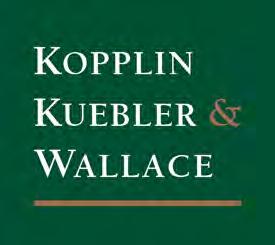
Lynne
Pamela Radcliff
Corey Saban
Emad Saedi
Larry Savvides
Robyn Stowell
Yelena G. Vilk
Kevin Walls
Gordon Welch












PUBLISHER’S PERSPECTIVE | 10

JOHN G. FORNARO
The cost of a dysfunctional board of a private club can be significant. Poor decision-making, high staff turnover rates, declining member satisfaction, poor financial performance and damage to the club’s reputation are all potential consequences of a dysfunctional board. What happens when a private club ends up with a dysfunctional board?

STEVE MONA
“What issues are other clubs dealing with right now?” That’s a question that almost always comes up in my meetings with boards and GMs about matters related to governance and leadership. I’ve compiled the issues I have heard most frequently in recent months, along with solutions to those issues from some of the clubs that are experiencing them.

BONNIE J. KNUTSON
From the time I was in kindergarten, I could not wait for report card day. Part of my excitement probably stemmed from my parents’ high expectations and the importance they placed on learning, which they instilled in me; I wanted them to be proud. However, part of it also probably stemmed from my naturally competitive nature.


HENRY DELOZIER
Private club board members are desperate to know more about what their fellow members want. The catch is that many boards do not know how to collect and interpret members’ attitudes. Member surveys seem simple until one gets into the midst of them. Keeping one’s finger on the pulse of members’ attitudes is a universal challenge in private clubs.


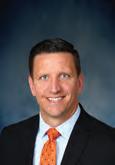
RICHARD KOPPLIN, KURT KUEBLER, TOM WALLACE
Transitioning between club managers can be challenging and stressful for boards, employees and even members because of the delicate balance necessary as the new leader becomes acquainted with all things club yet eases into making changes or improvements. Therefore, it’s essential that clubs prepare and plan for this transition.

NANCY M. LEVENBURG
They say it’s the little things in life that matter. People appreciate it when others notice them and say or do something to make their life a little simpler or happier. Deliver service that’s above and beyond what’s expected?


DR. RONALD F. CICHY AND DR. JACK D. CICHY
“When it rains, it pours” was the Morton Salt Company slogan when we were growing up in Manistee, MI, during the last century. The slogan meant the salt was free-flowing. Leaders in private clubs know that salt, when used properly, enhances the flavor of food. But how many of us have thought about how SALT may serve as a way to enhance our leadership practices?


PHILIP J. HARVEY
How can the club industry prepare for the resultant risk of climate change? Today, we are experiencing firsthand a world of change. The last quarter of 2022 and the first quarter of 2023 stood for the largest dollar loss experienced by primary and reinsurance ability than any quarter in history because of weather extremes.

Managers ask about titles—lots. What title should I put on my business card that’ll let others know who I am and what I do? What title would provide a deeper understanding of the hats I wear—and stimulate a discussion to explain what I do? What badge could be worn, what title could be used that announces to the membership, the staff, the board and the world that this is my job, I wear lots of hats and my job is a biggie? What title should be used to educate the unknowing?

By Michael Crandal
— Part III By Robyn
Stowell
DISTINGUISHED GOLF DESTINATIONS 82
Red Rock Country Club and Arroyo Golf Club By
Ron Banaszak
DISTINGUISHED CLUB SHOWCASE 83
This Paradise Has an Address Cat Cay Island By Ron Banaszak
ON THE FRONTLINES
84 Why Rebrand By
Larry Savvides
EXCELLENCE IN CLUB GOVERNANCE . 86 What Governance Trends Can We Expect in 2023?
Governing Better By Henry DeLozier
INTELLIGENCE GATHERING 87 Membership Applicant Vetting and Duty of Care By Paul Dank
NANCY’S CORNER 92 Personal Sustainability The Most Memorable Skill in Golf By Nancy Berkley
HEALTH & WELLNESS SHOWCASE . . 94
Making the Invisible, Visible Peak Health Advantage
CLUB
Create an Inviting Environment for Members and Guests
Proform Matting
INNOVATIVE IDEAS 96-97
Sparks Fly at Creative Summit Mixologists at El Niguel Country Club By Chryssoula Filippakopoulos
THIS MUCH I KNOW FOR SIRE 110 The Fired Caddie: Perhaps My Worst Decision Ever! By Dick Kopplin




Gordon Welch



PUBLISHER’S PERSPECTIVE

John G. Fornaro is the publisher/CEO of BoardRoom magazine, co-founder/CEO of Distinguished Clubs and the CEO of the Association of Private Club Directors (APCD). If you have comments on this article or suggestions for other topics, please contact John Fornaro at (949) 376-8889 or via email: johnf@apcd.com
Well-performing boards are critical to the success of a private club.
So, what happens when a private club ends up with a dysfunctional board? It can be disastrous for the club’s member experience, for employees and a successful operation.
As outlined in Part I of this series, a dysfunctional board affects many aspects of a private club operation, including the member experience, employees, finances, strategic planning and collaboration between the club’s senior management and the club’s board of directors.,
And, for our contributors to this piece, there’s one issue more than others that can lead to a dysfunctional board. But opinions are varied!
“Lack of communication, including lack of knowledge of the club’s mission and long-term strategic plan, causes everyone to have a different agenda and goal instead of a common mission. This communication originates with a strong general manager who needs to serve as the conductor of the management team and board,” said Houston Country Club’s General Manager Mark Bado.
“As a board member, you have to do what’s best for the club. If boards are fearful of asking their peers for the money needed to run the club at a high level, that indicates dysfunction,” Wallace added.
KK&W also has a checklist that helps detect and determine the level of dysfunction.
“We ask to see the strategic plan, the board policy manual, master goals and the minutes from the recent board and committee meetings. When any one of these pieces is missing, there is general dysfunction. If several of these elements are missing, you see a very dysfunctional board,” Wallace opined.
“Employee and member surveys conducted regularly will quickly reveal board dysfunction,” commented Jim Butler, CEO of Club Benchmarking, one of the industry’s premier consulting firms.
“ Ultimately, the board’s leadership results in experiences that can be measured both qualitatively and quantitatively. The goal of these surveys is to use the information gleaned as a foundation for continuous improvement plans that align board actions with results.
The cost of a dysfunctional board of directors of a private club can be significant. Poor decision-making, high staff turnover rates, declining member satisfaction, poor financial performance and damage to the club’s reputation are all potential consequences of a dysfunctional board.
“For me, it’s lack of a strategic plan and a board member with a personal agenda,” added Ron Banaszak, BoardRoom’s Distinguished Clubs’ director of international development.
“One issue that almost always leads to a dysfunctional board is not using data to make decisions,” expressed KK&W principal Tom Wallace. “Boards that make decisions based on emotions and personal opinions tend to struggle.
“The other issue that almost always indicates a dysfunctional board arises when boards are hesitant to/or are against raising dues, initiation fees and membership costs because they don’t want to pass along these charges to their friends.

“By engaging in data collection and action steps, potential dysfunction issues can be addressed. For example, we see across the country that dysfunction results from boards working on initiatives that harm the member and employee culture instead of enhancing the experience of both groups.
“It’s crucial to use data to make these decisions because of the demographic diversity of clubs. Each club is composed of various groups, each with different perspectives on the direction of the club. Therefore, data can be lever-

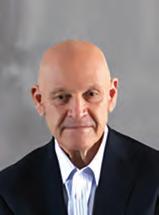
HENRY DELOZIER
Henry DeLozier is a partner at GGA Partners. He can be reached via email: henry.delozier@ggapartners.com
Private club board members are desperate to know more about what their fellow members want.
The catch is that many boards do not know how to collect and interpret members’ attitudes. Member surveys seem simple until one gets into the midst of them.
Keeping one’s finger on the pulse of members’ attitudes is a universal challenge in private clubs. Well-intentioned servant leaders and club managers want and need a better and more defensible understanding of members’ wants, needs and expectations. One need not be Yoda to understand the mysteries of club members. One need only ask them.
The keys are gathering the demographic data, knowing how to survey and what to do with the information you collect.
Today’s club leaders have unprecedented access to sophisticated tools that enable greater insight to guide their decision-making. Eric Brey, PhD, is a researcher and professor at the University of Wisconsin-Stout, School of Hospitality Leadership, where his work focuses on leveraging analytics to guide the implementation of consumer-centric strategy.
Dr. Brey cites his research on behalf of GGA Partners, the Toronto-based advisory firm serving private clubs, as he observes, “Most clubs want to make their quantitative knowledge ‘personal,’ identifying demographic personas among their club’s members. We accomplish that step in the focus group process.”
For most private clubs, there is a reliable multi-step process:
• Encourage participation – Member survey success is driven by participation – with high response rates comes greater value for clubs. The driving response is as simple as clearly communicating to membership and ensuring surveys can be taken on mobile devices to, more importantly, ensuring that when you survey members, you use the results to help make decisions. Members want to make sure that their opinions matter, and there is nothing worse than asking for ideas and not using the information to help inform decisions.
• Keep the survey unbiased – Survey questions should not lead members to the answers a board wants. Explanations, images and other materials can be used to help inform throughout the survey, but the questions should be focused on getting information that is not already biased before it is collected. Some answers may not be what you want to hear, but this is better than having a membership that doesn’t trust the results.
• Use demographic filters – Collect demographic information that leads to deeper insights. Gender, member categorization and age are all great for understanding basic differences. Many clubs are becoming more family-centric. Children, employment and club usage as a means to segment your membership have become increasingly important to understanding where your membership is and what it is thinking.
When it comes to areas of caution, Dr. Brey offers four bits of advice concerning member surveys:
• Establish the purpose of the survey – Spend time creating a survey that meets the needs of what you hope to accomplish. Too often, clubs create surveys that include club satisfaction, future direction/strategy, and other areas of interest to the leadership. Surveys should be focused and designed to accomplish a specific outcome to support the club, and if there are multiple needs addressed in one survey, results will not be as targeted and outcomes will not be as effective as you hope.
• Understand the science of member surveying – Dr. Brey observes, “You can look beyond satisfaction data to explore what your members want. Asking for satisfaction is a great starting point, but comparative methods, such as the net promoter score and ease of use, are more advanced questions that yield more significant insights into your members.”
• Listen to the members – Don’t collect the data unless you will use it to help inform the next steps or decisions for the club. When members know that their opinions aren’t listened to, they don’t participate, which can minimize their overall effectiveness.
• Keep the survey focused on primary needs – Don’t expect members to spend more than 20 minutes on a survey. Stay focused on the core questions you need answers to, and the shorter the survey, the better.
In the wake of the novel COVID-19 pandemic, which caused massive change within private clubs worldwide, club leaders do well to refresh their understanding of their members’ wants, needs and expectations. Using survey insights and sharing insights with members is a “must-have” completion of the survey. BR


Nancy Levenburg, PhD, is professor emerita in management from the Seidman College of Business at Grand Valley State University in Grand Rapids, MI. She has published hundreds of articles in business and professional journals, and has assisted over 200 organizations with strategic planning, marketing strategy and improving operations. She is the president of Edgewater Consulting and is a member of Spring Lake Country Club in Spring Lake, MI. For more information, contact her at: levenbun@gvsu.edu or (616) 821-5678.
“IF YOU DO BUILD A GREAT EXPERIENCE, CUSTOMERS TELL EACH OTHER ABOUT THAT. WORD OF MOUTH IS VERY POWERFUL.”
– JEFF BEZOS, FOUNDER & CEO OF AMAZON
There’s a stereotype that says chefs have big egos. My son has told me that this is often true. And he ought to know. He’s a former country club chef.
And apparently, it’s not just a prevailing perception. It appears to be a fact. Any restaurateur will tell you the same. In fact, according to Restaurant Business, “A new ranking of jobs by the self-assessed skill level of the holder confirms what restaurateurs have known since the invention of fire: The biggest egos under their roof tend to be the ones in the kitchen.”
Why? As one chef posted in the Chef Talk online forum for professional chefs, “To be a chef, one must have a certain amount of ego or more appropriately, an unwavering confidence in one’s ability to lead while simultaneously being creative. This can sometimes be mistaken for ego.”
Another individual commented, “These (chefs) are people that work long hours in very hot environments with sharp knives … get to the point quickly.” How true, I thought.
And yet one more chef (chefbillyb) remarked, “I always walked my dining room; one day my hostess asked me, do I walk the dining room so I can get all the compliments? I told her no; I make sure there are no complaints. I can’t correct a problem unless my customer knows I am out for their best interests and approachable to correct their concerns.”

What chefbillyb said reminds me of what my son used to tell me – that an important part of his job every day was to stroll through the dining room and talk with the club’s members. In addition to being chef in chief, he was tasked with being schmoozer in chief; fortunately, he’s an excellent schmoozer.
So, it shouldn’t be a surprise to see the executive chef, sous chef or other back-of-house staff member strolling through the dining room in their toque
blanche. It’s become somewhat of an expectation – not only among club employees but also among members.
A close friend of mine told me that he’d recently arrived early for a 9 a.m. committee meeting at his private club and decided to bide his time in the club’s otherwise-deserted casual dining venue. (At 9 a.m. on a cold winter morning in Michigan, absolutely nothing is happening.)
While my friend was sitting – and gazing at the news broadcasts on the venue’s giant TV screens – the executive chef happened to stroll through the room. Spotting my friend silently sitting there, he spun around and asked him, “Is there something I can get for you? Coffee?
Something to eat?”
My friend thanked him profusely and declined since his meeting would be starting shortly. But what was particularly memorable for him that morning was that with his simple question, the exec chef had done something totally unexpected –he’d expressed an awareness and interest in my friend’s well-being, beyond designated on-duty/regular dining room hours and the “requirements” of his job. In that simple exchange, he’d totally dispelled the myth of the egocentric chef.
He was going the extra mile. And when you think about it, isn’t that what delivering excellent customer service means?
Delivering service that’s above and beyond what’s expected?
They say it’s the little things in life that matter. People appreciate it when others notice them and say or do something to make their life a little simpler or happier. In this case, it didn’t cost a single penny. And it usually doesn’t require moving heaven and earth. All you need to do is show that you care. BR

From pre-hire to retire, ClubPay streamlines operations with a custom suite of outsourced Payroll and HR solutions to meet your club management needs.

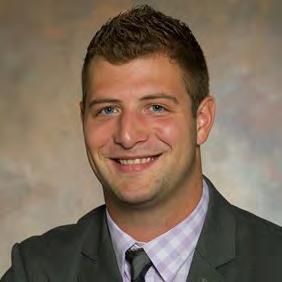

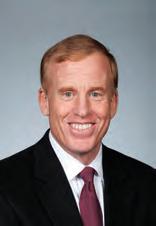
STEVE MONA
Steve Mona is director of governance and leadership for Club Benchmarking. He can be reached at smona@clubbenchmarking.com
“What issues are other clubs dealing with right now?” That’s a question that almost always comes up in my meetings with boards and general managers about matters related to governance and leadership.
Listed below, in no particular order of importance, are the issues I have heard most frequently in recent months, along with solutions to those issues from some of the clubs that are experiencing them:
Issue: “Some of our board members comment on virtually every agenda item and take a substantial amount of time expressing their point of view.”
Solution: One club solved the issue with an egg timer,
Issue: “We are experiencing significant change in the demographics of our members. How do we include those people in the governance of the club? How do we make sure we are meeting their needs?”
Solution: One club offers new members who are generally younger and busy with young families the opportunity to participate on committees to get them involved in club governance. While many new members in this demographic aren’t able to carve out the time, others have agreed to do so as long as the time commitment is manageable and the work is meaningful. In addition, many clubs conduct member satisfaction surveys to determine usage patterns and the level of satisfaction with current amenities. Others conduct cap














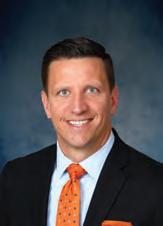
At a club, the general manager/chief operating officer position is the most vital for achieving and sustaining a healthy and successful club.
The role responsibilities require a centralized, consistent professional with experience, training and knowledge of the private club model.
Transitioning between club managers can be challenging and stressful for boards, employees and even members because of the delicate balance necessary as the new leader becomes acquainted with all things club yet eases into making changes or improvements. Therefore, it’s essential that clubs prepare and plan for this transition.
Based on our wide range of experience working with boards and professionals during this sensitive time, we have put together the following best practices to help ensure successful departures and acclimations.
Before the new general manager/chief operating officer’s first day, several things should happen. First, club documents should be shared so that the new general manager/ chief operating officer can review and study them in the weeks before starting at the club.
Items such as the board policy manual, employee handbook, financials and other documents advising on process and procedure should be provided well in advance to give the new general manager/chief operating officer a greater understanding of club operations and culture.
Sample checklist for advance review:
• History of the club and map of the property
• Club policies/procedures/bylaws
• Talent strategy materials (new employee orientation, employee handbook, employee benefits, organizational charts, training manuals, job descriptions, human capital plan, monthly reports, team bios, etc.)
• Calendars (club events, board/committee meetings, team meetings, etc.)
• Collateral, member marketing materials, new member orientation correspondences
• Recent club newsletters/communications
• List of board/committee members, board bios, board policy manual, board and committee orientation manuals, committee charters and annual priorities for
board and committees, along with the last 12 months of meeting minutes
• Recent risk management assessment, club business analytics, capital reserve study
• List of vendors and service providers
• Strategic plan and property master plan
• Most recent audited financial statements or financial summary/overview
• Guest username and password to the website
• Recent membership/staff satisfaction surveys that include all club operations
• Union contracts (if applicable).
Second, orchestrate and schedule opportunities for the new general manager/chief operating officer to meet with key club constituencies at a comfortable time and place. Set ting these meetings in advance allows the general manager/ chief operating officer to meet and connect with key groups, such as the Thursday Tennis Group or the Ladies’ Golf Asso ciation, in the new general manager/chief operating officer’s first 30 days.
This ensures that these groups feel seen, heard and val ued. It also gives the new leader a feel for the groups, their spokespeople, their priorities and their needs, which helps the general manager/chief operating officer start off on the right foot with these constituencies.
Third, the board of directors should determine ahead of time what the new general manager/chief operating officer’s top three or four priorities will be in the first year. The board should discuss and decide on the areas of focus with the new leader and then communicate the priorities to everyone, including the staff and the membership.

The general manager/chief operating officer then has direction and knows what the board wants in the first year. Having this focus helps ensure the new general manager/ chief operating officer doesn’t get different directives from members and is not confused about where to start.
With board-approved priorities presented, the new general manager/chief operating officer can listen to the rest of the members but not necessarily act on their recommenda-


BY DAVE WHITE
“The role of the PGA Member is continuously expanding, along with their capabilities. Through continued education, our PGA Professionals are equipped to handle whatever comes their way, but more importantly, whatever they are passionate about.”
That, in a nutshell, describes how PGA President John Lindert views the future for PGA Professionals.
Lindert, PGA, was elected the PGA 43rd President at the association’s 106th annual meeting held recently. A member of the Michigan PGA Section, Lindert is the PGA Director of Golf at the Country Club of Lansing. He succeeds Jim Richerson, who completed his two-year term.
Lindert, a PGA member for over 35 years, was elected after two years each as PGA Secretary and Vice President.
“As PGA Professionals, we wear many hats. From business operations to golf instruction to social media, people don’t realize how much a PGA Professional is involved in all aspects of the business. We’ve divided our career paths into three different categories: Executive Management, Golf Operations, and Teaching and Coaching. Just about any job responsibility you can think of falls under these three categories,” Lindert explained.
“The beauty of our certification programs is that all our Professionals have an opportunity to continue their growth and education within the realm of their career choice.

“If you love to teach, you can be at a private facility, public facility, an indoor golf center or on professional tours - teaching the best in the game. But being a PGA Professional no longer exclusively means working at a green grass facility.
“For example, we have PGA Professionals at the PGA of America’s new home in Frisco, Texas running our charitable programs, teaching new Associate Members in our professional development department and working in just about every other department in our association.”
So, considering the influences of COVID-19, what is the state of the industry today, a) generally and 2) for private clubs?
“We’ve seen growth rates at the beginning of this decade comparable to when Tiger Woods entered the professional game, and trends remain positive in many parts of the country. Golf has greatly benefited from a reset and a surge of popularity,” Lindert added.
“Still, the pandemic has been incredibly challenging for everyone. We are gratified by the leading role that PGA Professionals played to provide a safe, healthy outlet through golf for thousands in the nation during a time when many were greatly impacted in every aspect of their lives.
“The PGA of America and our nearly 28,000 PGA Professionals led the industry through COVID with

the “Back2Golf” initiative. As a result, golf has expanded with 13 million non-green grass participants. Now, the challenge is converting those individuals into the next generation of club members and visiting our golf courses regularly. It’s our responsibility to protect and sustain this spike in interest for the game,” he stressed.
“We always focus on growing the game. As PGA Professionals, that’s our passion. Now our focus is on how we support the game’s growth. We’ve gone from country club members considering selling their memberships to waiting lists to join a club. We have the right people in the right places to be the driving force of golf and take advantage of the game’s popularity,” Lindert remarked.
What’s your vision for the PGA of America in the coming years?
“My priority is taking care of and supporting the PGA Professionals across the country. The effort they put into the game, day in and day out, is remarkable. Our PGA Members dedicate their lives to helping people reap the benefits of golf. My role as president, along with our officers and board of directors, is to ensure they have the programs, resources and support to be successful.
“If I’ve learned anything during my time as PGA Secretary and Vice President, it’s that golf not only improves lives but also saves lives. The impact PGA REACH, the PGA’s charitable foundation, has had, primarily through PGA HOPE (Helping Our Patriots Everywhere), with veterans in our country is incredibly inspiring. We want to reach as many veterans through golf as possible to continue introducing the game to people who need it most.
“We’ll also seek to host and operate world-class major championships in golf through the Ryder Cup, PGA Championship, KPMG Women’s PGA Championship and the KitchenAid Senior PGA Championship. Those events always produce excitement, but perhaps more importantly, they continue to promote the game to a larger audience,” Lindert opined.
What are your specific goals during your term as President?
“Our national programs do incredible things for individuals and local communities, thanks to those working daily to make these dreams happen and to our 41 PGA Sections implementing them in their day-to-day operations and facilities.
“We want to diversify the golf industry even more through our PGA WORKS program and continue to inspire people to choose a career in golf. We want to reach even more veterans through PGA HOPE. And even after having a record of more than 71,000 registrations for girls and boys in 2022, we want to increase the number of juniors in our PGA Jr. League programs across the country this year,” he added.





What challenges are PGA Professionals facing in the coming years?
“The PGA of America is comprised of 41 Sections across the country. Within these Sections are a collection of small businesses that, in many cases, are the community center for cities. Whether a private club or a public facility, legislative issues and rising costs threaten golf as a small business, just like any other business. We continually focus on our education and training needs to remain relevant and current. We then enable our sections to provide these resources to our members. This ensures that our PGA Professionals are the bestequipped people to have in leadership positions and operating golf facilities. Golf is diversifying both in where to play and how to play. People visit their local courses and country clubs every day. At the receiving end of these visits is a PGA Professional, and just like in every other industry, there’s a shortage of employees, which puts a heavy weight on their shoulders.”
What challenges are PGA Professionals facing in the coming years?
“The PGA of America is comprised of 41 Sections across the country. Within these Sections are a collection of small businesses that, in many cases, are the community center for cities. Whether a private club or a public facility, legislative issues and rising costs threaten golf as a small business, just like any other business.
“We continually focus on our education and training needs to remain relevant and current. We then enable our sections to provide these resources to our members. This ensures that our PGA Professionals are the best-equipped people to have in leadership positions and operating golf facilities,” Lindert maintained.
“Golf is diversifying both in where to play and how to play. People visit their local courses and country clubs every day. At the receiving end of these visits is a PGA Professional, and just like in every other industry, there’s a shortage of employees, which puts a heavy weight on their shoulders.
“That’s why we are focusing on the recruiting and retention of PGA Members. The game’s growth was amazing and welcomed, but we need the growth of new PGA Professionals to keep pace. Directors of golf and head professionals everywhere are doing all they can to keep up. They are doing an amazing job, but they need more help,” Lindert explained.
“As for participation, PGA Jr. League is bringing kids into the game and getting their families more involved at clubs and courses everywhere. Introducing the game as a team sport with team jerseys and names is a great way to help these juniors love the game.
“Whether it’s PGA Jr. League for kids, the PGA Club Championship for amateur golfers or evening leagues for women and couples - golf can relate to all interests in life. And our Members are doing an excellent job in creating and sharing these fun programs in their communities. So, the game has certainly changed, and for the better,” he said enthusiastically.
What can private clubs do to help with the challenges the PGA Professionals face?
“Support your PGA Professionals. If your PGA Professional feels supported financially and socially, they are more likely to stay for a long time. Make them feel a part of the family and the club. They will provide substantial growth for your club.
“If you want long-term impact and results, make sure your PGA Professional is compensated fairly and that their accomplishments in your club’s success are recognized. And then, further support their team—the Assistant Professionals and those going through the PGA Professional Golf Management Program while working at your club,” Lindert stressed.
“Make sure your club has a staffing model that’s sustainable for the long run. You can contact the PGA Career Services team to fill any openings and needs with qualified candidates across the country, from PGA General Manager to Director of Golf to Head Professional to Assistant Professional and more.
“This investment in your PGA Professional team will pay great dividends for your club’s future growth and success, as well as developing loyalty and retention for your club’s membership and workforce.
“That’s a win for everyone,” Lindert concluded. BR



“We onboard several hundred seasonal workers every year. The Cobalt POS is so easy for new staff to learn that they pick it up quickly and enjoy using it. Cobalt saves us hundreds of hours in training time each year.”
“The F&B POS took my breath away! It’s so beautiful and intuitive.”
“Cobalt created the best F&B POS and Table Management system available for clubs. It improves upon functionality available in the hospitality and restaurant systems and combines it with our member data. It’s phenomenal.”



RITA BARRETO
Rita Barreto is an engaging, motivational speaker on the national stage. She also has 30-plus years as an award-winning human resource executive for a Fortune 500 company. She offers customized, industry-specific consulting services to navigate change and build an agile and thriving company culture. Don’t hesitate to visit toptierleadership.com and call Rita to book a free 20-minute consultation.
Creating a highly functioning and active board of directors is something I get asked to help with frequently.
It sounds simple, yet it is rather complex. Board members are made up of individuals, each person bringing unique skill sets and personalities to the table. Blending them purposefully to create a diverse yet highly effective board of directors is often challenging.
The reality is that many boards have just a handful of active participants. Also, some board members get too close to staff and become friends and may forgo asking tough questions. This can lead to the detriment of the club.
On other occasions, board members have meddled in staff business, micromanaging them to a point that drove the employee(s) to quit. The result is discomfort and strife within the club, even if the board member has good intent.
What should board members do to lead and ensure longterm viability effectively?
First, having the right blend of people on the board of directors is a must. Ideally, there will be a good mix of leaders with experience and knowledge while also having integrity, a strong ethical foundation and the confidence of their colleagues. It may sound like a tall order, but there are several other characteristics of an effective board of directors.
1. A great leadership chair. Whether this person is a chairman or chairwoman, the qualities of this person must exemplify those of a great leader. Ideally, this person can help crystallize a vision for the club, identify key strategies, ensure oversight, and build engagement and excitement about a shared vision. In addition, they will set a positive tone in which all voices can be heard collaboratively while serving as a wise communicator. The chair should also have a knack for tackling difficult questions and subjects while being committed to finding innovative and profitable solutions.
2. Diverse perspectives. While diversity is not merely a fancy buzzword of the day, studies have shown the benefits of having a diverse board. It’s important to note that diversity goes beyond race and gender and extends to all differences, including but not limited to diverse skill sets, contacts and life experiences. Doing so gives a broad range of viewpoints, making members less apt to participate in “group think.”
3. Meeting attendance. Through regular attendance, the board of directors can accomplish maximum results. When members regularly miss meetings, their input can be ineffective. Board members must remember that they are governing on behalf of members. Therefore, active participation is a must.
4. Meeting management. For a meeting to be substantive, board members require highlights of the upcoming topics to be given to the members up to a week prior. Reminders should also be given to members about bringing useful information and/or materials. Preparation tasks must be completed in advance.
5. Trustworthiness. The purpose of the board of directors is to make important decisions; therefore, it must be clear to everyone that confidential information is not shared with staff and family or leaked outside of the club. Doing so may be hazardous to the overall brand of the club and the goals set forth by the board.
6. Good governance practices. The size of the organization should also reflect the number of board members. The group needs to have mutual respect, chemistry and competence. Make sure there are no members who have glaring conflicts of interest – or ulterior motives – as this can lead to unwise practices. Prepare job descriptions, committee charters and ensure all board members clearly understand their roles and responsibilities.
7. Regular assessments and benchmarks. Depending on the role of the board of directors and its goals, the chairperson should conduct regular assessments and benchmarks to ensure the completion of targeted goals. For example, it’s been my experience that it is common to find a handful of active members. Therefore, conducting a self-assessment and having challenging conversations about the need for 100 percent board member participation is crucial.
The outcome of a successful board takes time and refinements. Personalities, knowledge and dedication predicate whether a board of directors will be a positive influence on the organization or whether it will flounder. After all, an “organization” is called that for a reason, because of the need to be organized for optimal results. BR



















Lynne LaFond DeLuca, executive director of the Association of Club Catering Professionals (ACCP). The Association of Club Catering Professionals National Conference will be held September 10-12 at the Union League in Chicago, IL. Register at www.TheACCP.com. You can also contact Lynne at Lynne@TheACCP.com
I recently hosted a webinar with Shanna Bright of Private Clubs Online titled “Trending Now … Our Favorite Ideas for Member Events & Engagement.”
We shared fabulous ideas for new member events, elevating your member events and adding special moments at multiple touchpoints during an event to emphasize the “wow” and “surprise and delight” elements that make an event so memorable.
During the webinar, the chat box exploded as attendees shared ideas and asked questions. One question was about pricing an event and that their members are hesitant to pay higher prices for events such as wine dinners; everyone jumped on the bandwagon to agree it was a struggle in their club as well.
So, here I’ll address two topics. Adding special moments and elevating an event is a game changer for member experience. How much are members willing to pay for that, and how do you decide what to charge for an event to get the attendees you need or want?
CREATING “MOMENTS”
Let’s address the first topic – elements that provide “surprise and delight” moments and wow factors. As you have probably heard me say before, “Never do the same event the exact same way twice!” Members love traditions and events that happen on a repeat basis, but that doesn’t mean they should expect the same thing each time.
If we meet member expectations, we missed blowing them away with an experience that would exceed their expectations. And, the good news: It just takes one tweak. This can come in the way of unexpected décor, lighting, surprise entertainment, a fond farewell gift at the end of the night, custom-themed cocktails and mocktails, or interactive and experiential elements.
I recently started following Jesse Cole, founder of the Savannah Bananas baseball team. If you don’t already follow him, start today on LinkedIn and Instagram. His “Fans First” philosophy reminded me so much of our private club industry and our members. Cole brings unprecedented fun, surprise and delight to every fan at every game. Small moments matter.
When he and his team are trying to create new ideas for wacky, out-of-the-box things they can do, show, eat and drink at baseball games, they come up with some pretty crazy stuff. But if they ever doubt an idea or think that it just might be too crazy, they think … “What if it does
work?” Think about that. Sometimes we scrap ideas based on the worst possible scenario, but what is the best possible scenario?
There are so many reasons why an event won’t work, but if it does, would it be magical? Why can’t we do things that have never been done at a private club? We can and we should.
Also, empowering employees to listen to your members for ideas of how they can create magic/surprises and then allowing your employees to make it happen on the spot is another way to change the club one moment and member at a time right there in the event or club as it is happening.
So, if you take a temperature read on the energy level in your club and what members might feel when they walk in your doors and decide that you need to add some element of fun and surprise, challenge your team to think about the craziest ideas possible and the magic that can happen when crazy ideas do work.
The second question: “Will your members pay for these events when the experience level is high?” If you are struggling with attendance at higher-priced events, think about two things – are you trying to appeal to all member types for every event? (Stop doing this). And, what number of attendees equates to a successful event for you?
A high-attendance event is not necessarily a successful event. If you plan an event for 150 people and 25 members RSVP, you will consider it unsuccessful. However, rather than eliminate the higher priced, lower attended events, create an event for 25 with a lot of bells and whistles and experiences, and when you sell out at 25, it will be a huge success.
Appealing to different interests and age groups in our clubs can be one of the best things we do, but every event and age group will have a different success marker. I love a high-end, intimate, small event that is over the top and well done. I also love a casual music, food and wine festival with hundreds of raving fan members enjoying the day with their families and friends.
It works as long as each event is sprinkled with magic moments and memorable experiences. And that is what members will pay for. BR
Want to view the webinar titled “Trending Now … Our Favorite Ideas for Member Events & Engagement?” I am making it available and complimentary on the ACCP website. www.TheACCP.com/webinars



COREY SABAN
Corey Saban helps clubs craft their story and protect their brand with crisis management tips and public speaking initiatives. An Emmy-nominated and former award-winning journalist, he is a proud member of the Club Leadership Alliance and a presenter at BMI. He can be reached via email: Csaban4709@gmail.com
Storytelling is an art passed down through generations and is fundamental to human communication.
It’s a way of sharing experiences, passing on knowledge and connecting with others. From bedtime stories to ancient myths, storytelling has played a vital role in shaping our culture and society.
For country clubs, storytelling is essential to connecting to your lifestyle, creating intrigue and member engagement. It’s a powerful tool for engaging prospects, inspiring action and making emotional connections.
Here are a few reasons storytelling is an effective communication strategy:
1. Stories are memorable: Stories stick in our minds long after we’ve heard them. They engage our emotions, activate our imagination and leave a lasting impression. When information is presented in a story format, it’s more likely to be remembered and retained. But, so often, clubs rely on facts. Facts tell, stories sell. Highlight what makes you unique and why your club or the event you’re hosting is memorable.
2. Stories connect people: Storytelling is a way to connect with others on a deeper level. Look at your website. Many clubs will share pictures of their empty dining rooms and fitness centers. Where did all the people go? Stories have characters that people identify with, so reconsider your approach. Show your members. If you are using testimonial videos or videos on your homepage, have members share their stories about what makes the club unique. This adds a layer of trust for the end user and allows for a deeper understanding. It creates a sense of empathy and commonality that can break down barriers and bring people together.
3. Stories inspire action: Stories can motivate and drive results. If you want people to attend a themed dinner or event, you need more than the who, what, where, when and why. Start with the why, as it stimulates us and allows us to use our imagination about what we can expect. Stories are also great for pushing across a capital project. Showcase
what makes the project necessary by sharing what’s in it for the member instead of how many square feet something will be. Save that part for later, after they’ve bought into the concept. Remind the member of the value and how it will improve their life or increase their property value.
4. Stories build trust: When someone shares a story with us, it creates a sense of vulnerability and authenticity. It’s an opportunity to connect with others on a personal level. Consider training your staff on what makes the club extraordinary and craft stories around those feelings that everyone, in their own way, feels comfortable sharing. It is a worthwhile exercise so they can deliver their elevator pitch when in the community or when sharing with local leaders.
Here’s how to start telling your story:
1. Identify your audience, members and prospects and tailor your story to their perspective. Ask yourself: Why do they belong to your club? Why should someone join?
2. Ensure the message is clear and create emotion that moves us to action.
3. Use descriptive language. A good example is think versus imagine. Think about living in paradise. Or imagine living in paradise. The second example transports you elsewhere.
4. Keep it simple. No unnecessary jargon, just straightforward words that are easy to digest. Try putting them in your member communications or jazz up your newsletter and see the results for yourself.
You can also use these tips for your next town hall or board meeting to move the needle, create lasting impressions and build stronger relationships when public speaking. BR



ED DOYLE
Ed Doyle is president of RealFood, Hospitality, Strategy and Design, a Troon company. A graduate of the Culinary Institute of America, Ed has worked in some of the finest kitchens and foodservice operations across the industry, including a long list of award-winning hotels and restaurants. He can be reached at (617)876-2100 or via email:eddoyle@rfhsd.com
Menu engineering is an art … and a science. The science is that it’s a system.
The inputs consist of the energy and information that goes into the system to be processed; the output is what the system delivers. It’s a set of parts that work together to create a unified whole, a framework for the delivery of a restaurant’s output depending on its set of inputs.
A food service establishment’s menu is one of the most important expressions of its hospitality experience. In the age of the experience economy, next to the all-too-familiar obstacles of increased costs, decreased labor productivity and higher consumer expectations, menu development and delivery are challenging (especially when many of our members and guests are what we call “scratch eaters”).
The inputs in the system of menu engineering include:
• Staffing levels
• Skill sets of the team members
• Physical layout of the kitchen and bar
• Type and efficiency of equipment
• Ingredients and supplies.
Then, we apply the actions to the input—what you’re making (the recipes) and how you make it (the strategy). Our goal is to optimize productivity to optimize performance. And balance is the key driver to accomplishing consistent execution.
Inquire into the balance of your menu. A fruitful exercise is to identify everything on your menu that you use only in one place. The goal is to cross-utilize ingredients; you don’t want to be prepping or bringing in a product for a singular menu item unless that dedicated effort and expense yields a return on your investment.
And cross-utilization doesn’t have to be perceived by the guest. Think about how you use derivatives. Go back to the classical idea of “mother sauces”—how you can use base ingredients and components, and modify them to multiple uses. A simple example is to start with a quality mayonnaise that easily becomes a miso aioli, chipotle aioli or tartar sauce. Take items and build upon them in a way that cross-utilizes products and achieves diversity in your menu without making everything from scratch.
How does menu engineering present itself in menu language? Ensuring variety in menu language while streamlining production is key. A classic vinaigrette made with champagne
vinegar, herbs and Dijon can afford the flexibility to be menued as champagne vinaigrette, herb vinaigrette and Dijon vinaigrette, allowing it to be deployed in different ways to present menu diversity across a menu while being truthful and highly efficient.
Now, inquire into the balance of your team’s workload. A balanced line is a productive and fast line. Go through your menu and look at what’s coming off which stations, both in individual menu items and as compared to your sales mix. If you have 10 menu items, with one coming off the sauté station and nine coming off the grill, you might be out of balance.
Check this against your sales mix. If there’s a 2-1 ratio of a plate sold that’s executed on the sauté versus grill station, then you’re closer to being balanced, but the scales can be tipped more to favor working to balance the output. Adjust your menu to achieve a more equally distributed workload across your stations on the line.
The goal of menu engineering is to balance your team’s workload to optimize their productivity and, ultimately, the dining establishment’s performance, right?
So, if I’m not cooking or tending bar in a consistent work environment, I can’t deliver consistent execution. As leaders, we ensure our team works at a reasonable workload level, targeting 80 to 85 percent of capacity. This buffer leaves room for the unforeseen “extra” that makes our member and guest experiences more special. In our clubs, excellence is always excellent, and we can’t deliver excellence without the space to pivot, execute modifications, surprise and delight.
If balance and consistency are the science, then culinary creativity is the art. And so is the brand delivery. Our clubs aim to be the best version of ourselves. This is where brand storytelling comes in: menu composition, descriptions, graphic design and presentation. Each of these components should speak to the club’s identity. Food and beverage is a vital amenity that ultimately serves the club’s overall brand experience. F&B should support that brand expression in every way possible.
The intentional and balanced design of the hospitality experience—in this case, the menu—is the input. And the incredible is the output. BR


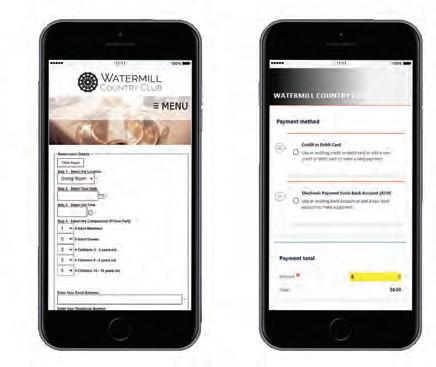




KEVIN WALLS
Kevin Walls is a career consultant for the PGA of America. He can be contacted at (662) 306-0719 or by email at kwalls@pgahq.com.
As PGA career consultants, we are involved in executive-level searches for general managers and head golf professionals.
Unfortunately, during the past several years, attracting top-level talent for these top positions has become increasingly difficult.
We see our PGA members not as flexible to pursue these great opportunities. In contrast, when we have an executive search for a top-level position at a historic facility, the interest level grows along with the quality of the candidates.
Although golf is an ancient and venerable game, the sport in the United States is still young relative to Scotland. It has been a little over a century since the first great golf boom in the US when courses were being built by highly skilled architects – now known as “the golden age of golf course architecture.”
Over the past two decades, golf has undergone what some might characterize as an awakening to this history.
For decades following the Great Depression, golf course architecture was an almost ignored craft. Golf courses that survived the ’30s and ’40s began to improve their turf and adopt new grasses rather than attempt to understand what the great architects of the golden age were thinking when they laid out their courses.
Architects such as Donald Ross, A.W. Tillinghast, Alexander Mackenzie, C.B. Macdonald and Seth Raynor put great thought into their designs, but the advent of new technologies such as steel shafts and improved balls had rendered some of their greatest designs less challenging. Also, the advances in agronomy led many to focus on “making their courses relevant to the modern game.” Elite courses were “renovated” during the four decades after World War II, and difficulty became the goal for many.
Many old courses lost their character because of renovations performed during the decades immediately following World War II. In the ’80s and ’90s, we witnessed the development of new, more challenging golf courses, with longer yardage and more severe slopes and bunkering to create a green oasis to sell real estate under the designs of Jack Nicklaus, Tom Fazio and Bob Cupp.
As the 21st century approached, a new appreciation for the design tenets of the golden age grew. The courses laid out by the earlier masters started to reclaim their designs. The movement was spearheaded by new “dead golf course architect societies,” led by the Donald Ross Society, founded in 1989. Soon almost all of the highly regarded architects of the golden age had a society promoting the restoration and preservation of their designs.
A new breed of golf course architects also began to appear, many of whom Pete Dye had trained to appreciate strategy more than just difficulty. Tom Doak, Gil Hanse, Ron Forse, Ron Prichard, Ron Prichard, Jim Urbina, Bill Coore, Ben Crenshaw and Brian Silva were among those to build reputations as experts in executing such plans.
The clubs that chose to restore rather than renovate their golden age courses found themselves attaining an even more elite status: clubs that possessed a “masterwork” that lovingly and faithfully embraced its original vision.
According to Doug Stein, golf course historian and cofounder of the Raynor Society, “The PGA professionals that are lucky enough to work at such clubs occupy some of the most coveted positions in golf. They carry an extra responsibility to shepherd, communicate and preserve the visions of the masterworks of golf course architecture. In a sense, these PGA professionals also become stewards of irreplaceable places in golf, especially golf in America.”
Those that take management positions at older clubs with courses designed by past masters have a responsibility to learn not only their craft as management professionals but to also become historians. BR

Bruce Barilla is the sole consultant of Locker Room Consulting and can be reached at (304) 536-9029 or via email: bruce@lrcgolf.com
Meet with the locker room manager and staff out of respect for their service to the club and ask them their concerns, ideas, suggestions and needs.
I’d be available to discuss the locker room operation, as Tom Goodman did when he was house committee chairman at Butler National Golf Club in Oak Brook, IL.
He understood employee concerns, having had general manager experience at local hotels such as Hyatt, The Drake and Hilton. House committee directors who show this type of interest will gain admiration, increase employee morale and improve the locker room.
Encourage and arrange for the staff to visit locker rooms at other clubs because seeing what other area clubs offer is educational, and they can compare and contrast amenities, layout and service standards and “take notes.”
Afterward, I would follow up with them to discuss any positive changes we as a team can incorporate at our club. Locker room employees share a common bond. They understand the pros and cons of the profession. Overwork fatigue is common during a busy season when working many hours with few days off.
Therefore, visits can be an uplifting time. Talking with someone who goes through the same daily experiences makes for good medicine and a time of refreshment and renewal.
Let them make simple decisions without being micromanaged, such as ordering supplies and doing amenity setups without having to get approval. I know of clubs where the director of golf and the clubhouse manager had final authority regarding what supplies to order after the locker room manager or attendant gave them a list of items needed.
This shows distrust and lack of confidence in the locker room staff, whether realized or not by the overseer. It is discouraging and, in ways, insulting, too, especially if the locker room manager has substantially more years of know-how compared to a DG or CM who is relatively new at the club and without any locker room experience.
Provide ways for the locker room staff to increase their knowledge by having them attend the local CMAA chapter education meetings and the local CMAA-sponsored vendor expo
if you have one. If not, I suggest that our club host a vendor expo covering all departments and invite locker room-related companies.
Another important aspect of locker room management is having the staff compare products, cost and services from Body One Products, Duffy’s Tri-C Club Supply, Fore Supply, Ready Care and Textile Management Service.
They would call the owners of companies they are not doing business with to ask what they offer and why they should purchase from them. They would report their findings to me, how they were treated and which company they prefer to do business with. They would be sure to have a catalog from each supplier.
I would give them a laptop to research all aspects of the locker room operation and encourage them to visit the Locker Room Consulting website (www.lrcgolf.com) and the Locker Room Managers Association website (www.yourlrma.com).
The club would also host an annual locker room seminar and invite locker room managers and staff from around the country via a coordinated effort. It would include educational session speakers, Q&A, vendors, free giveaways, a display table of products, prizes, awards, lunch, golf and use of the locker room with each attendee’s name on a locker for the day with a welcome gift inside.
Show appreciation with perks, including comp meals, comp golf on certain days, employee golf outings, free uniforms, good compensation, years of service pins, photos of the staff by the locker room welcome counter and on the club’s website, business cards, flat screen TV in the shoe shine room along with a laptop and radio, yearly outings to professional sports events, occasional gift cards to local restaurants, reciprocity golf with other area clubs, permission to have guests and an invitation to attend board meetings.
This is what I would do. However, the main question is: “What would you do?” BR
Does it make a difference if you are a manager at a Distinguished Club?
Of course, it does! Both general managers and department heads of clubs who have earned Distinguished Club status are widely recognized by Kopplin Kuebler & Wallace and boards as leaders at providing a great Member Experience. It makes you a very strong candidate for leading clubs searching for top club management.
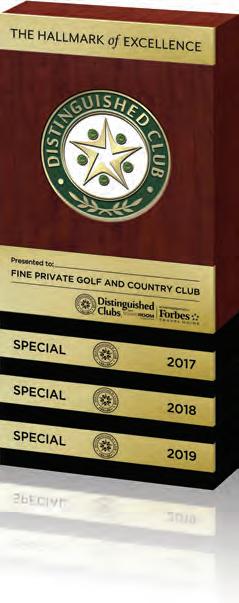

The only merit-based award program that recognizes private clubs and their management for outstanding delivery of exceptional Member Experience. www.distinguishedclubs.com

TODD DUFEK
Todd Dufek is the locker room manager at The Country Club at DC Ranch in Scottsdale, AZ. He is the president of the Locker Room Managers Association with a website at www.yourlrma.com. For a free trial membership and a free book on the secret to improving locker room services, contact Todd at yourlrma1999@gmail.com. Many thanks to Bruce Barilla for his assistance with this article.
I’ve been a locker room manager for 35-plus years and have been on a continuous quest to “wow” members and guests who enter my department.
Here’s a list of amenities and services that will surprise your members and guests from least to most. Please share this list with your locker room staff, make room for these items in your budget and be willing to pay for the training to make them happen. Your members will appreciate your efforts and will beat a path to your locker room doors.
Note: In most cases, there are several choices of products/ techniques that will allow you to “wow” members and guests in your locker rooms (1- 4). But in others, only one company makes the amenity your locker room staff will need to gobsmack your members (5 and 5 tie for the most “wow”).
Warning: If your locker room manager is not interested in upping service levels and creating a “wow factor,” he/she and his/her staff may want to consider a change of profession.
1. Several choices in each amenity category: Most clubs have a couple of shaving cream choices, for example. Most managers need to include shaving creams that are new on the market and those that have been around for decades. Most members and guests using your locker room wet areas will be surprised if you do this.
2. Shaving cream warmer (also known as a “hot lather machine”): For those old enough, it may evoke memories of the local barber giving you a haircut and a shave with a straight razor. There are dozens of shaving cream warmers. One many clubs use is the Wahl ’19 on amazon.com.
3. Steam showers: Some clubs have steam showers; other clubs add them after they renovate and get rid of the steam rooms altogether. The latest shower model has digital controls that allow the user to get steam flowing in minutes by pressing the controls twice. Another advantage: They require little cleaning compared to a steam room.
4. “Above and beyond” street and golf shoe care: While this is the expectation at most clubs, some are not up to par or even close. I’ve heard stories over the years about a locker room manager whose shoe skills were so bad none of the members took their footwear to him. Members may never know what it’s like to be “wowed” by terrific shoe care.
5. Shoe warmer/dryer (https://www.crescorsport.com/): There’s only one shoe warmer/dryer like this one on the market. And it will “wow” members and guests with warmed golf shoes before they play on a cold day. Or by drying footwear and other golf gear after a downpour. You’ll hear accolades like “Wow!” But also: “I can’t believe you warmed my shoes before I went out!” and “This place is first class!” And you’ll get even more “wow” responses after you warm, dry and hand back your members’ golf gear after a wet day on the links (members usually dry their clothes by draping them over their open locker doors, making the locker room look like a messy dry cleaner).
6. Staff blazers with embroidered club logo: (www.jacketsrequired.com): How would your members react if your locker room manager wore a blazer with the club logo for the annual member/guest tourney? Would your members be astounded by wearing an “official” jacket to club events with the club’s logo on the front and their name on the inside? I guarantee the reaction to both will be “Wow!!!”
Honorable mention: Chilled, dry bath towels by the steam room/sauna and/or whirlpool (placed in a tall glass-door refrigerator), heated bath towels by the showers, ice machine/ water dispenser with cups for ice, a barbershop and a massage therapist. BR



PAMELA RADCLIFF
Pamela Radcliff, SHRM-SCP, CAM is director of human resources at Hideaway Beach Association, Marco Island, FL, and can be reached at pradcliff@hideawaybeachclub.org.
Every April/May in southwest Florida, the “musical chairs” process begins. It’s the time of “people changes” among our 150plus private clubs.
For one reason or another, clubs are looking to freshen their rosters, and employees are looking for the next best opportunity. In this article, I’m going to let you in on the secret to clinching that new position – how to set yourself apart when all else is equal among candidates.
If you’re neck and neck with another candidate, how you close the interview and how you follow up could put you over the top – or it could sink you.
ASK EXCELLENT QUESTIONS
Not asking questions in an interview is the worst mistake you can make. Why? You may be perceived as not caring enough or, worse, not understanding the full depth of the position. Through your thoughtfully planned questions, you engage the interviewer by showing you can control the conversation. If you’re going to be a part of their team, start showing them now how thoughtful and inquisitive you are and follow up for clarity.
If you’ve never Googled “Questions to Ask in an Interview,” do it. You’re in for a flood of information. If nothing else, always ask if they have any more questions for you. One of my favorite questions to ask: “Is there anything that I have said, or not said, that would prevent you from hiring me?” Along those same lines, Bryan Chaney, director of employer brand at Indeed, writes: “What’s one experience that’s not on my resume that would help me be successful in this role?”
CLOSING THE INTERVIEW – YOUR THREE REASONS
I’m about to share with you the best piece of interview advice I have ever come across. It could be life-changing. Picture this:
• The interview is coming to an end.
• They’ve exhausted their list with you and you have asked your excellent questions.
• Now you say, “Before I leave, I want to share with you that I am the best person for this position for these three reasons…” I want you to hold up three fingers and count off your best three reasons in front of the interviewer for why you should get the job.
During your interview for food and beverage manager, you have learned that the food and beverage department has weaknesses in beverage management, steps of service and banquet event orders. So, what are your three reasons?
“Before I leave, I want to share with you that I am the best person for this position for these three reasons:
• “My three years of experience in ordering, invoicing and inventory as a beverage manager will enable me to fix the existing shortfalls we spoke about.
• “I have developed and delivered service training curriculum in my past two positions. This is an area of significant strength for me.
• “I am highly organized, with a keen eye for detail, which positions me as an excellent resource for the BEO issues you’ve been having.
“For these three reasons, I am the best person to be your F&B manager.”
Prepare your three reasons ahead of time. Practice your three reasons out loud, using your gestures so you present a confident appearance.
TO SEND OR NOT TO SEND – DOES IT REALLY MAKE A DIFFERENCE?
Yes. Clubs are interviewing multiple candidates for the job you want. Don’t assume the hiring manager remembers everything you said. Some of the highlights you hoped would set you above the rest may be lost or forgotten.
The follow-up note is much more than a nice way of saying “Thanks for the interview.” It may be your last chance to win someone over. It is one more shot to show what you can do for the club, not what it can do for you.
TO EMAIL OR TO SNAIL MAIL?
Both. Hiring processes seem to fly at lightning speed these days. By all means, send an email thank-you note as soon as you return from the interview. However, make sure to follow it up with the personalized touch of a handwritten note to show that you go the extra step.
To really impress and show your appreciation, extend your thanks to others who you felt helped in the process. For example, a handwritten note to the receptionist or HR coordinator who was your initial point of contact at the club.



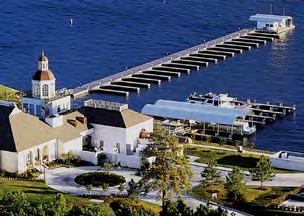

















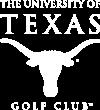



YELENA G. VILK
Yelena G. Vilk is a senior immigration attorney at Green and Spiegel LLC and focuses her practice on seasonal worker visas. She can be reached at yvilk@gands-us.com and (215) 876-5376.
Clubs earn their reputation and increase their memberships by maintaining flawless grounds.
Golf courses and country clubs spend millions on property renovations because the return on investment is proven and members demand the upkeep when renewing enrollment.
Immaculate grounds flourish into legacy memberships, promote invitationals and encourage bookings for corporate outings on the golf course and weddings at lakefront clubhouses. The golfer wants the brochure when he steps on the grounds.
The look of prominence keeps members coming back year after year with their families to enjoy the warm-weather days outdoors. Many Distinguished Clubs thus hire seasonal workers for this level of landscaping excellence.
From the design process through the daily preservation, club managers rely on the work of exceptional seasonal workers hired through the H-2B visa program. Seasonal, temporary workers are experienced and recommended. In addition, they pass private background checks and extreme vetting by the US government before their arrival.
They are expert team members welcomed back each year because they maintain a property’s reputation and ensure its longevity. They are architectural craftsmen, arborists, golf course maintenance workers, sod installers, conservation workers, green roof maintenance technicians, gardeners and landscape superintendents—just a few of the possible positions regularly filled through the H-2B visa program.
What are the costs involved? Against the greater issue of continued labor shortages in the hospitality industry, the H-2B seasonal worker program costs are reasonable. The main expenses include government filing fees (Homeland Security requires $2,110 per position), legal fees (estimated $5,000 per position), possible recruitment fees (vary by recruiter/agent, but typically $350 to $500 per worker), consulate visa processing fees (Department of State requires $190 per worker) and transportation costs (vary, but employers must cover the most economical cost of transportation as well as subsistence costs of no less than $15.46 per worker per day).
Wages are also a factor. The Department of Labor sets the wages for each position, the mean wage for a particular county, which, of course, varies by area. In 2023, an arborist employed by a club in Grand Rapids, MI, requires a wage of $24.80 per hour, a golf course maintenance worker in Raleigh, NC, requires $15.42 per hour, and an architectural craftsman in Los Angeles, CA, is at $18 per hour. And once a club employs H-2B workers, US workers require the same wages by law, which can impact a budget.
How do clubs recruit seasonal workers? Human resources recruiters and trainers, talent acquisition specialists, directors of human resources and general managers hire H-2B attorneys for guidance, but the active recruitment remains with HR staff.
Attorneys are not recruiters and often refer the task to government-verified agents/recruiters. Recruiters have pools of seasonal worker applicants in the US who bounce from a summer employer up in Maine down to a winter employer in Florida and then back again for up to three years.
Another great recruitment strategy is to partner with an opposite-season club. Talent managers from the north often travel to states such as Colorado for in-person recruitment. Workers can also be recruited directly from abroad, but there is a limit on the number of H-2B visas approved each year from outside the US (66,000 per fiscal year).
Recruiters/agents can get costly, but luckily some foreign governments have developed free recruitment programs recently. El Salvador, in particular, through a partnership with the US Agency for International Development (USAID), works directly with hospitality employers, charging no recruitment fees, ensuring hard-working and highly vetted seasonal workers, and assisting through the entire visa processing step abroad.
“Our program last year placed an approximate 5,000 workers around the US with industries, including landscaping, maintenance/construction/painting, housekeeping, chefs, line cooks, stewards, waiters, convention room bussers, telecommunication maintenance, manufacturing and many more,” Francisco Avelar, an outreach consultant with the H-2 visa program from El Salvador, confirmed in reflection of the 2022 H-2B season.



“When it rains, it pours” was the Morton Salt Company slogan when we were growing up in Manistee, MI, during the last century.
Our father, Donald, worked at Morton Salt and Chemical for over 40 years. The slogan meant the salt was free-flowing because of the anticaking ingredients, even on rainy days.
Leaders in private clubs know that salt, when used properly, enhances the flavor of food. But how many of us have thought about how SALT may serve as a way to enhance our leadership practices?
The essence of effective leadership then might be the use of the acronym SALT: Strength, Action, Listening and Teamwork.
Strength: A leader must show strength in conviction for pursuing the implementation of the purpose and mission. As leaders, the fundamental reason for our existence is to meet the needs of our club members. Therefore, team members can articulate how what they do every day results in achieving their personal goals, connected to the club’s mission. Leaders must have the strength of conviction to ensure that they stay the course in pursuing and meeting the articulated goals for the club. This should happen all the time, not just when it is convenient. Through proper training, education, development and empowerment at all levels, the purpose and mission will be what drives actions to achieve results.
Action is the second element of SALT.
Ernest Hemingway, an American author and journalist, wrote: “Never confuse movement with action.”
Movement is all about undertaking a direction. We might need to figure out how pursuing a given direction will drive us toward a positive outcome. It might be movement for the sake of movement with the hope that something good will come of it. Movement without empowerment-based action (EBA) seldom accomplishes anything worthwhile for any club.
EBA is all about achievement and accomplishment. In short, continuous improvement. Through the act of effective empowerment, leaders can achieve positive results. Effective empowerment involves responsibility, authority and accountability. An effective leader knows that team members must first understand and be clear about their primary tasks or responsibilities. Leaders must also explore how they can help team members align with understanding their key responsibilities.
These are the club’s mission and SMARTER goals. Finally, the team must have the authority to take action.
Engage the team to ensure that it is accountable for planning and carrying out necessary actions toward the purpose and mission.
Listening is the third SALT element. Undertake the act of listening with the intent of truly understanding. Dr. Stephen Covey, the author of “The 7 Habits of Highly Effective People,” wrote about empathic listening. It involves reflecting what a person feels and says in your own words to their satisfaction so they feel listened to and understood. It means listening with your whole being — ears, eyes and heart.
Effective leaders listen with an empathy mindset. Empathy occurs when you share experiences and feelings. Empathy is not sympathy. Sympathy overdone can cloud a leader’s judgment. It is not enough to listen empathically. What we do (action) with our understanding is the key. And, “listening to” not only engages our team members but our member-owners as well.
Teamwork is the final word of the acronym SALT. At its foundation, teamwork involves cooperating with team members while accommodating their needs and interests. The leader must respect the ideas and opinions of team members while collecting their feedback as part of the decision-making process.
Wherever teams are operational, you are likely to have conflict. Wise leaders know that they can minimize conflict and make progress. Dr. Covey wrote about the elements of a winwin agreement that enable leaders to pursue positive action through teamwork. The elements are:
1. Desired results
2. Guidelines
3. Resources identification and utilization
4. Accountability
5.Consequences of results achieved/not achieved.
Do we desire to enhance the effectiveness of our leadership practices using SALT? Select a few practices to try, then evaluate the outcomes. When it rains, it pours. Pour your leadership into your club. BR
Dr. Jack D. Cichy, C.M., professor emeritus of sustainability/ management, Davenport University, and Dr. Ronald F. Cichy, O.M., professor emeritus, Michigan State University


Students have long been an important member segment for the Club Management Association of America.
More than 40 student chapters and colonies exist at colleges and universities across the country. By joining during college, these students are taking steps to further their professional and career development through meetings, events, practical experiences, internships, education and conferences.
Over the past several years, CMAA has worked to expand its engagement, investment and outreach with current and potential student members, helping to drive more talent into the club management industry. As a result, students today have many choices in the hospitality landscape and may not be aware of the wealth of outstanding career opportunities in the club industry.
Verified Club Internship Program: CMAA has developed a Verified Internship Program to elevate and streamline club internship offerings. Because clubs differ widely in membership size, culture and offerings, it may be difficult for students to know what to expect from their internship experience. This verified internship criteria helps manage the expectations of students, faculty and managers and holistically showcases what a career in the club industry can look like.
For a club to qualify for designation as a CMAA Verified Internship Program, it must meet the following criteria and submit it to CMAA for review annually.
1. Must be a paid internship, meeting all applicable state and federal wage and hour requirements.
2. Must encompass at least 300 hours (inclusive of time worked, education programming, etc.).
3. Must offer at least 10 hours of educational programming opportunities. Offerings must be completed from at least two of the following categories:
• Department rotations
• Club orientation
• Leadership
• General manager meeting
• CMAA education
• Purveyor education/tours
• Résumé review
• Interviewing practice.
4. Must provide ongoing feedback to program interns.
• One-on-one meetings with the direct supervisor or internship program facilitator must be held no less frequently than twice a month.
5. Must complete an end-of-internship exit interview/program evaluation.
• Student/intern reflection – How are you better from this experience? What did you learn?
• This evaluation must be submitted within one month of completing the program.
If you are interested in having your club’s internship program recognized as a CMAA Verified Internship, you can access the program criteria and learn more online at cmaa.org.
During the recent 2023 World Conference and Club Business Expo, CMAA officially launched its #ChooseClubs campaign with the unveiling of an educational recruitment video. It is the first piece of the full campaign on #ChooseClubs that CMAA will launch for current students, hospitality faculty and others interested in the field.
The video showcases how clubs are not just a great place to belong; they offer outstanding employment opportunities. The club industry has more than 2,600 clubs with more than 200,000 full-time employees.
The club industry is diverse in the job opportunities available to workers. Most think of food and beverage when they think of hospitality, but clubs go much further than that. There are positions available in events; accounting and administration; human resources, membership, marketing and communications; golf; racquet sports; spa, fitness and wellness; culinary; and aquatics.
Clubs are encouraged to share the video in their recruitment efforts. Access the video via CMAA’s website at cmaa.org. To learn more about these initiatives, please visit cmaa.org. BR
Founded in 1927, the Club Management Association of America is the largest professional association for managers of membership clubs with 7,000 members throughout the US and internationally. CMAA members contribute to the success of more than 2,500 country, golf, athletic, city, faculty, military, town and yacht clubs. The objectives of the Association are to promote relationships between club management professionals and other similar professions; to encourage the education and advancement of members; and to provide the resources needed for efficient and successful club operations. Under the covenants of professionalism, education, leadership, and community, CMAA continues to extend its reach as the leader in the club management practice. CMAA is headquartered in Alexandria, VA, with more than 40 professional chapters and more than 40 student chapters and colonies. Learn more at cmaa.org.



Technology adoption is an extensive process that requires care ful planning to provide programs that support everyone from different backgrounds and age ranges.
When new technology is adopted, it allows members to manage how they interact with their club more conveniently while allowing clubs to optimize operations and be more ef ficient with their resources.
Therefore, clubs need to invest in technology to thrive. However, not all members are always comfortable with new technology. Member onboarding takes time and requires precise planning because it is about educating members. The diversity of members’ demographics at a club can make this challenge complicated.
One can only handle such a challenge with devotion, own ership and accountability. Jordan Meserole, the director of marketing, communications and membership at Doylestown Country Club in Doylestown, PA, took a creative approach to onboard members to the club’s new mobile app. His approach to technology adoption sets a great example for other clubs.
Meserole considers himself a “tech-forward-thinking per son.” As a member of the club’s decision-making committee, he vouched for adopting a new mobile app and took leader ship to onboard members. The club’s goal of adopting a new mobile was to make it easy for members to book tee times.
Onboarding process: The membership of Doylestown Country Club ranges in age from 22 to 89, which makes new technology onboarding complicated. When the club rolled out the mobile app, some members admired it and some complained.
Those in their 20s and 30s were excited about it. However, most members in their 60s, 70s and 80s didn’t see the value in this solution. They didn’t adapt easily. This is where Mese role stepped in.
He created a comprehensive onboarding plan to educate and support everyone during the onboarding process. Due to the different reactions of the membership, Meserole knew he needed to create customized training programs for dif ferent demographics.
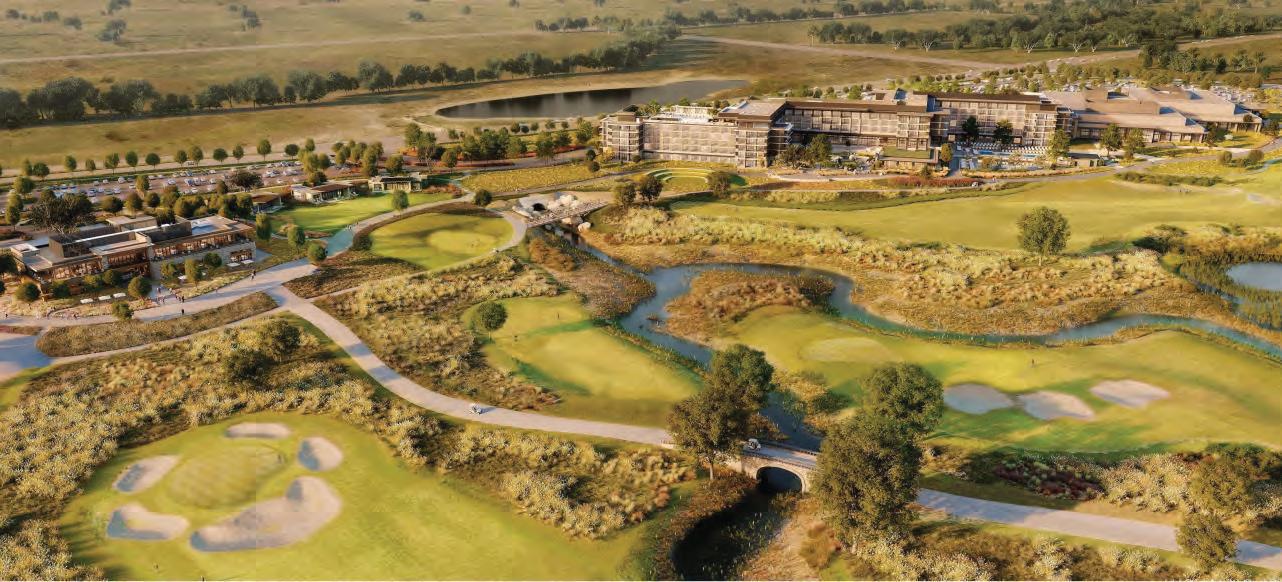
Providing centralized support for members: The first step the club took was to centralize support. Meserole re-
Now, the club can do more with less. BR






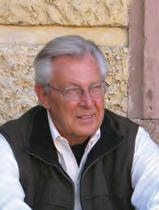
DAVE DOHERTY
Dave Doherty is CEO and founder of the International Sports Turf Research Center, Inc. (ISTRC) and holds three patents regarding the testing of sand and soil-based greens.
Dave Doherty is the 2022 recipient of the Dave White Excellence in Achievement Editorial Award. He can be reached at (913) 706-6635 or via email: daveistrc@hotmail.com
Golf courses, because of their vast acreage, are under increased scrutiny from water and chemical conservation agencies, and this scrutiny is more than justified because of the pristine conditions demanded by golf enthusiasts.
The majority of golf courses constructed since the advent of the USGA specifications [1953] requiring sand-based golf greens with drain tiles have been built with sand as the base with some type of organic material added to provide water retention, [CEC] for nutrient retention, and a food supply for microbes.
The sand provides stability, but the porous material allows water to pass through and into the drain system, which is installed in gravel trenches under each green.
Our lab, the International Sports Turf Research Center, specializes in physical property testing with the ability to test ph levels but leaves the chemical analysis of soils and water in the hands of labs specializing in that area.
I do spend many hours of my free time taking care of it because it’s something that I thoroughly enjoy.
No chemicals other than fertilizer in the spring and fall have ever been applied to my turf. I am able to achieve these results as a result of having very healthy turf that requires a minimum of water and no usage of weed, insect, or disease control chemicals. You see, healthy turf, by itself, will reduce the need for many harmful chemicals. Healthy turf is like healthy people who feed themselves healthy food that help fight off disease.
Golf greens that have balanced physical properties in line with the original USGA specifications produce healthy turf, which requires fewer chemicals that could be harmful to the environment. Golf course superintendents are professionals and care very much for the environment that they are entrusted with.
Studies have shown that the contamination in our lakes, streams and wetlands is more the result of homeowner and commercial property runoff than any other source.
Going green is everyone’s responsibility, the farmer, the homeowner, the business owner, the landscaper, the golf course superintendent…all of us.
The golf course industry is doing its part, I assure you and I’m proud that my company is doing its best to do our part. I hope that you and your company or private club are doing the same.
Although we do not personally test for the chemical percentages contained in the water that runs off or through golf greens, we do get involved with projects where the discharge water is tested. It has been reported that in some cases, the discharge/runoff water is cleaner than that of the water entering the greens, especially in cases where effluent water is being used for irrigation.
How is this possible, you ask? Well, sand has been used as a water filter system throughout the world for centuries.
The sports turf industry has probably done as much or more than any industry to police itself over the years and takes great pains in keeping track of its chemical usage.
I have a rather large yard at my home in the Midwest and am told that my yard is one of the best in the neighborhood.

Farmers are and have been coming under more intense scrutiny over chemical usage and runoff than probably any other industry in North America. This scrutiny has resulted in one of the largest chemical companies in the world recently changing its formulation of one of its best-selling products.
Going green is everyone’s responsibility, the farmer, the homeowner, the business owner, the landscaper, the golf course superintendent… all of us.
The golf course industry is doing its part, I assure you and I’m proud that my company is doing its best to do our part. I hope that you and your company or private club are doing the same.
BR


Every private club has its own unique identity and we want to help your club maintain yours. Of course, that requires a different approach than the status quo of self-management, which is why Troon Privé® continues to grow. As Troon’s dedicated private club division, we are a proven professional services organization that provides best-in-class systems, processes and resources to the private clubs we serve. Visit TheTroonApproach.com to learn more about who we are and why our clients partner with us.


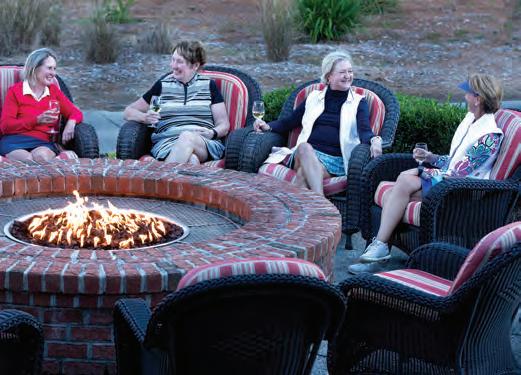


PAUL JACOBS
Paul Jacobs is an agronomist, Central Region, with USGA.
Published with permission of the USGA.
Trees can be a highly controversial topic on a golf course and their impact on turf health and playability are significant.
Managing and removing trees are often two of the most contentious topics at many facilities.
To help guide tree management decisions and create consensus amongst decision-makers, it is valuable to seek input from outside experts, such as golf course architects and USGA agronomists. Many courses find working with an agronomist to develop a tree management plan extremely helpful. One of the key components of a successful tree management plan is having well-defined criteria for how trees are evaluated. Some key questions to ask are outlined below.
Does the tree negatively impact the turfgrass growing environment?
Shade, limited air movement, root competition and traffic problems are all things to evaluate when it comes to trees and turf. Keep in mind that the sun’s path varies during the year and different grasses are impacted differently by shade. It’s no coincidence that the worst turf quality is often found near trees.

Is the tree healthy? Unhealthy trees are unsafe, unsightly, drop debris and become more challenging to remove as they continue to decline. Some species are more susceptible to pests and should be avoided as new plantings.
What impact does the tree have on playability? The wrong tree in the wrong location can penalize high-handicap players unduly, cause playing corridors to shrink over time and alter the design intent of a hole.
Would removing the tree expose a great view or highlight other surrounding specimen trees? You would be surprised how often great views of natural features such as streams, rock outcroppings or horizons are blocked by trees. Also, if you are fortunate enough to have large specimen trees throughout the property, take a look to see if smaller, less-desirable trees are negatively affecting them.
What species of trees are best suited for your golf course? Some trees are inherently flawed with undesirable characteristics such as surface rooting, weak or low-hanging branches, or the production of debris that requires regular cleanup. These are just a few questions to ask as you evaluate trees throughout your golf course. Hopefully, answering these questions helps create consensus amongst decision-makers at your facility. If you would like additional assistance developing a tree management plan, do not hesitate to contact your local USGA agronomist. BR


Forbes Travel Guide is the authority on hospitality excellence. We work with the best luxury hotel brands globally. Let us help you elevate your service to improve member satisfaction and retention.



Forbes Travel Guide worked with our leadership team to create custom standards and tailored training which have been implemented throughout the club. We value our partnership with Forbes Travel Guide.
Jeffrey P. McFadden Chief Executive Officer/General Manager The



CHRISTINE KANE
Christine Kane joined Audubon International in 2016. As the organization’s chief executive officer, she is responsible for all aspects of the nonprofit organization’s operations, including its core certification programs, member services, conservation initiatives, and human and financial resources. In addition, Ms. Kane is vice president of the board of trustees for The FairWays Foundation, which provides grants for conservation-based projects around the world. She can be reached via email: Christine@auduboninternational.org
As Audubon International continues its 35-year effort to help golf courses be at their environmentally sustainable best, I realize that what we do is in line with what a majority of young people – including your future members – seek.
They want recreation and lifestyle partners who truly value stewardship of our fragile and beautiful planet. They want to contribute to and enjoy entities that put sustainable practices at the center of their cultures, both day-to-day and long-term.
In short, investing in Audubon Cooperative Sanctuary certification today will help private golf clubs ensure a healthy and growing membership tomorrow.
Yes, there’s a bit of patience involved on the part of members and boards when it comes to turning their stewardship efforts into membership gains.
Although the Audubon Cooperative Sanctuary Program for Golf certification process takes several months or longer, clubs nurture a golf product that’s ahead of the sustainability curve and better their bottom line. Most of our certified members report savings in overall maintenance costs.
And, of course, there’s the traditional problem when it comes to attracting a younger demographic to private golf courses. The money to join doesn’t always come when you’re young, though that’s changing in places like California, where there’s a lot of tech money and more younger people looking to join clubs or upgrade their lifestyles.
According to recent statistics, Millennials – and Gen Zers, though they haven’t yet reached their earning potential –have come to expect environmentally minded management

or sustainable responsibility in the products they buy, the places they join and their activities.
For example, a study by GGA Partners showed that 73 percent of Millennials would pay more for excellent social and environmental practices.
Another study found that 50 percent of consumers want sustainable or environmentally responsible brands. And the GreenPrint Business of Sustainability Index for 2022 said that 78 percent of people are more likely to buy a product labeled as environmentally friendly.
Finally, a 2019 Forbes story based on research from Australia’s Southern Cross University found that 93 percent of consumers indicated general concern for the environment.
Then there are continuing effects of the lingering but largely controlled COVID-19 pandemic, including the desire of many families to create a “safety bubble” lifestyle. While in the depths of lockdown that meant hunkering down at home, that mindset has now morphed into folks simply looking for ways to protect themselves and their kids.
With clubs, families will be looking at, among other things, how clubs treat their pools, what clubs spray on the grass, and clubhouse HVAC systems. Sustainability will play a part in their decisions.
Most likely, clubs will transition to these stewardship-minded folks in two ways: on the forward-facing membership growth side and the interior face of employees. Your future employees are more than likely going to be Gen Zers, but some Millennials too.
Your club achieving certification that proves its devotion to the environment could be the deciding factor in whether somebody works for you or somebody else, and it will help you retain employees.
ACSP-certified clubs actively include sustainable practices in their training programs. For instance, Fairview Country Club in Greenwich, CT, brings interns from US colleges to learn turf maintenance sustainability best practices at the ground level.
“We have always had a great partnership with Audubon International, and the internship program has helped enhance it by training young future turf managers on


Our club is now debt-free, all of our ‘wish list’ capital projects are being completed and we will never again have assessments. Members don’t want to be managers; they just want to enjoy the club. Frankly, this is the best thing that could have happened for our club.
- Joe Donato, Club President “ ”
By Chryssoula Filippakopoulos
Now in its 15th year, BoardRoom magazine annually recognizes the world’s top private club presidents, captains and chairs as Private Club Presidents of the Year, for their outstanding work, their understanding of the industry, and role and responsibilities of the club’s board of directors. In this continuing series, BoardRoom introduces four more of its top 24 presidents for 2022. The Distinguished Club President was featured in the November/December 2022 issue. Private club board presidents play a huge role in professional operations of their clubs as a volunteer working diligently with their board of directors and general managers, striving for well informed, but not emotional decisions. This recognition by BoardRoom magazine has attracted board president nominations from clubs and other nominators around the world. These outstanding presidents exemplify the focus on the leadership responsibilities, the accountability and the management of the board providing a healthy respect for the club’s macro management. They are cognizant of the importance of working, effectively and efficiently, with their volunteer boards and the dedication required from everyone with whom they work. Key elements of a “good” board include commitment, competence, diversity, collective decision making, openness, transparency, effective communication with the management and the membership, fiscal responsibility, development and establishment of the clubs’ mission, vision and policy direction, especially through establishment of a strategic plan. A successful board president draws upon the expertise of other board members, the club’s institutional memory and stewardship of the club’s resources. As well the board president provides new board members and future board presidents with information they need to perform effectively as board members.
Congratulations to these outstanding private club board presidents. See pages 57, 58 & 59.
Private Club Presidents of the Year Major Sponsors



Mark Gallaudet would follow Bob Kline into battle.
“Name the time and place,” Gallaudet, general manager/chief operating officer of the Country Club at DC Ranch, said about his president.
“Bob is upfront and honest, leads by example while caring deeply for the club, its members and staff. His approach to complex issues is always level-headed, and he truly understands that the needs of the many outweigh the needs of the few. This is not to say that he doesn’t listen to both sides and collect invaluable input from all in the process.”

When the Country Club at DC Ranch was without a GM/COO in 2022, Kline jumped in and took the helm. He guided the busy operation during a national search for a new general manager and a summer full of capital and beautification projects, and he led the executive team through a robust budget cycle.
Over six months, Kline worked closer than ever with the senior leadership team and got to know every member on a more personal level.
“The time that I spent with our senior leadership team was invaluable and most certainly contributed to our successes at the club,” Kline said.
“I will forever value that special time.”
Along with getting the president’s perspective, Kline saw things from operational management’s side.
This helped Kline and the senior leadership team identify future opportunities and better understand where they needed to address issues that moved the needle and improved the overall member experience.
At the Country Club at DC Ranch, governance begins and ends with a strong, flexible relationship between the board, committees and the general manager. The club approaches its governance model with openness, respect and transparency.
This is something that takes work and due diligence.
Kline is a commercial banker with over 35 years of commercial real estate banking experience, over $12 billion in debt placement and over $9 billion in restructuring. His specialties include finance and restructuring in commercial real estate, including capital markets debt and equity placement. He was previously a senior managing director for global commercial real estate firms JLL, Cushman Wakefield and Colliers International, where he focused on debt and equity nationally. BR


“Brian Maxwell could teach a master class on leadership.”
One sentence Three Carpenter, general manager at Edina Country Club, used to describe the club president.
Carpenter also said about Maxwell: “Through the interview process, the transition from my previous club to Edina, Brian has done an amazing job of providing background without bias so that I could create my own opinions of how the club is operating.”
Maxwell learned that Carpenter’s predecessor was leaving while he was taking over as president in early 2022.
“For any club president who enjoys working with their GM, this news never comes at the right time,” Maxwell said.

“Thankfully, the club’s outgoing president, Mike Laukka, the executive committee, the board and the senior staff came together and acted quickly to engage KK&W to find our next GM.
“During this process, the club did not miss a beat and our new GM, Three Carpenter, was hired and has been able to quickly acclimate to the club due to the strength of our team and leadership at the club.
“Without this group of member volunteers and staff, this seemingly daunting task of finding our next GM while maintaining the excellent experience at our club would not have been possible.”
Kim Delaney, director of business operations and finance, worked closely with Maxwell through the general manager transition.
“In my 35 years at the club, I don’t know that I have ever seen a better example of club leadership,” Delaney said.
“He was supportive of the executive management team and always available should we need him, all while allowing us to continue leading the operations.”
Senior staff did an excellent job managing the club during the transition. The previous general manager prepared senior staff and the board to manage adversity and improve the member experience.
They established a budget and increased staffing levels at four restaurants, the pool deck, the golf course and other club amenities. Member satisfaction, as measured through comment cards, has increased since the beginning of the fiscal year 2022.
Maxwell received his undergraduate and graduate degrees from the University of St. Thomas in St. Paul, MN. He has worked in community banking for over 25 years and is the market president for Gateway Bank in Edina. He coaches his children’s sports teams and is the treasurer of Abbey’s Hope Charitable Foundation. BR


Paul Mihailides’ quest for perfection is infectious.
It trickles down the ranks to create the most incredible member experiences and lifelong memories at The Preserve Sporting Club and Residences.
His employees also believe that “no task is left unfinished.” Although pretty close, the team is not perfect and is always striving for perfection in order to perform at the highest level with best-in-class amenities.
“Working for ‘your teammate’ whose personal bar is at the highest level imaginable is empowering to all of us,” said Philip Santomaro, general manager of The Preserve.
“No task is too small for our president, and he sets the tone by leading by example. Shall you maintain the responsibility of performing at your highest level and representing the brand in the highest regard, you become family. Such leadership follows us throughout life; strive for the best, while failure is not an option.”
Because the club is nestled in 3,500 acres of open land, conservation is paramount in every development decision Mihailides makes, from water management to protecting natural plant habitats for indigenous species to being an integral part of The Aquifer Watershed Protection District.
Mihailides often says to guests: “For every hour you spend enjoying the outdoors, you should spend two hours trying to conserve it.”
The club implements a ratio of 2-to-1 approach through resort activities. This concept is especially important for younger guests, who refer to Mihailides as Uncle Paul.
For Mihailides, the club must encourage this mindset from an early age so that younger guests can pass it down to their children.
Non-traditional club governance sets The Preserve apart from other clubs.
The board of directors leads with strategic master planning, future development, rules and regulations, and policies/procedures.
Management from the club industry and professionals from all aspects of the operation are part of the executive committee. This allows the best in the business to train and lead the club’s greatest asset, “our staff family,” and for the board to provide bestin-class human resources.
Mihailides, a developer, owner and member of several clubs throughout his career who loves the outdoors and an active lifestyle, took from the best of his experiences to create The Preserve.
He wanted people of all ages to build memories with their families and friends.
Mihailides often greets guests when they arrive and joins in their activities as time permits. BR


Elizabeth Mullan embodies effective leadership and club involvement.
The 2021-2022 president of the Bel-Air Bay Club would attend every function to welcome members, listen to them and make them feel comfortable.
She attended committee meetings to show her gratitude to members and staff meetings to show her appreciation to employees. As members’ concerns grew with ever-changing COVID-19 regulations, Mullan met with each member to hear what they had to say.
“Elizabeth cares deeply about members and staff, and it is felt through every single interaction,” said Barrett Eiselman, the club’s general manager.

“She recognizes the positive accomplishments of others and has trust in the expertise of the board and management. She also possesses superb communication skills through collaboration with the general manager. Elizabeth is an intelligent, confident, and respected leader.”
Before becoming president, Mullan was chairperson of the strategic planning committee and had a huge hand in developing the strategic plan. She met with the board to describe the goals and attended every committee meeting to communicate those goals, one of which was to maintain the club’s assets to benefit members for years to come.
A major undertaking for the club in 2022 was hiring a new general manager.
“For 21 years, Bill Howard served as our successful GM and replacing him was a daunting task,” Mullan said. “After inviting the best club leadership onto the GM search committee, and with board support throughout the process, we began our journey. First, we researched six recruiting firms, interviewed three of those firms, and chose Kopplin Kuebler and Wallace.
“Kurt Kuebler guided us to five qualified and talented candidates. In addition, he provided us with a tremendous amount of reading material on each candidate, including articles each candidate had written, reference letters, resumes, financial reports from various clubs, and Profile XTs. In the end, we unanimously selected Barrett Eiselman.”
Mullan graduated from Villanova University in Villanova, PA, and earned her JD from Vermont Law School in South Royalton, VT. She started her legal career in Grumman Corporation’s law department and later worked in New York City at the Wall Street law firm of Emmet, Marvin & Martin. Mullan has also been a docent at the Getty Villa and the Getty Center in Pacific Palisades, CA. Mullan and her husband, John, have been members of the Bel-Air Bay Club for 21 years. BR


For the first time in the history of Terminal City Club, with Marian Robson as president and Julia Yan as vice president, women occupied the two most senior seats on the board in 2022.
“Marian, as a strategic leader, has been instrumental in shaping TCC into the top-notch club it is today,” said Peter Jackman, the club’s general manager/chief executive officer.
“She led the club with a forward-thinking mindset, constantly striving for growth and improvement.”
Robson and her board have created an environment where members feel they belong. Her vision has made Terminal City Club a hub for lifestyle and opportunity
for the traditional business community, for families and for thriving cultural and economic influences in Vancouver, BC.
Her leadership has been critical in the ability of the club to retain its history and traditions while staying open to change and growth. Her unwavering focus on the member experience and staff wellbeing, even in the face of adversity, has been a key driving force behind continued growth and success.
Robson was on the leadership team when the Canadian Society of Club Managers named Terminal City Club the Club of the Year in 2020. This was particularly meaningful given the challenges the club and the hospitality industry faced during the COVID-19 pandemic.
About last year, Robson said: “2022 was a huge success due to the early lifting of COVID restrictions, the strong engagement of the board, the enthusiastic return of our members, and the creative leadership of our GM/CEO and his team.”
One meaningful improvement was the reopening of the renovated Grill restaurant.
The club’s governance model has a “strategy first, execution second” approach. The board focuses on long-term strategy with a five-year plan, and staff manages day-today operations.
Over the past 10 years, staff has taken ownership of the club and delivered exceptional results. For example, the membership graph shows a net gain of more than 400 members.
Robson hails from Biggar, SK. She has more than 40 years of public and private sector transportation experience. She has worked for the Canadian government, the Canadian National Railway and BC Railway. Robson was chair of the Vancouver Port Corporation and served as chair/chief executive officer of the Canadian Transportation Agency from 1996-2006. She attended the University of Saskatchewan in Saskatoon, SK, where she earned a Bachelor of Arts in English and did graduate studies in political science. BR

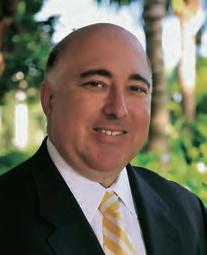
During Brad Schreier’s tenure as president, Grey Oaks Country Club created its first strategic financial guidelines and a five-year capital plan based on those guidelines.
Schreier not only supported the newly founded strategic pillars but also helped conceive and develop them.
“Our goal was to create a model that strategically endures for the future,” Schreier said. “We have also worked diligently to create a governance model that clarifies the role of the board and that of club management.”
Clearly outlining the roles and responsibilities of the board and management has allowed the management team to excel without micromanagement and interference from the board.
The management team focuses on improving everyday interactions with members and implements out-of-the-box experiences. These include transforming an unused space into a bistro-style restaurant – creating a third revenue-producing restaurant for the club – and adding InRange to the golf performance center, with a pergola, al fresco dining and an entertainment area.
“Mr. Schreier exemplifies the best traits in a board chair: vision, clear communication skills, a willingness to learn, and a passion for the club, its members and employees,” said Don Emery, general manager of Grey Oaks.
“His focus on proper club governance, the education and advancement of our staff, and documented systems and protocols has created an improved club environment for everyone.”
Schreier finalized the club’s accountability matrix, which sets responsibilities, outlines parameters, and enforces accountability for financial propositions and strategies, personnel policies and actions, club service scope and day-to-day operations, board goals, bylaws, grievances, and legal and strategic planning.
A graduate of Minnesota State University in Mankato, MN, Schreier received a degree in social studies with an economics concentration. He was a founding partner of Taylor Corporation. He worked for over 30 years in senior management and helped to build the small, privately held printing company into a multimillion-dollar holding company with 40,000 customers and more than 10,000 workers. Schreier and his wife of 52 years, Marge, have two sons, Ryan and Kyle. BR
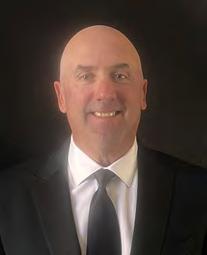

Passionate. Transparent. Inclusive. Visionary.
Four words with which Salil S. Bokil, general manager of Hollywood Golf Club, defined the leadership of Steven Schultz, Hollywood’s president.
“He has made himself and the board collaborative and transparent. He is committed to leading by example and has been instrumental in setting clear goals between the board, committees and management,” Bokil said.
“Steven attributes his success to his love and passion for Hollywood.”
Schultz was born and raised on the Jersey Shore and is a lifelong club member, as were his parents and

grandparents. Growing up in Hollywood’s environment gave him a powerful sense of the club’s values.
He took on the role of president in 2020, during the early days of the COVID-19 pandemic. With Schultz at the helm, the club offered members a safe and welcoming home away from home in uncertain times.
Hollywood not only endured the pandemic, but it thrived.
Schultz credits his experience in real estate advisory, development and construction, his longevity as a Hollywood member and the team of people who work collaboratively with the same mindset when making decisions in the club’s best interests.
From the onset of his term, Schultz has communicated the governance model to the membership to ensure that members encourage, respect and trust the management team’s capabilities.
He started an overall plan process for the club that features a new clubhouse, golf shop and irrigation system. The plan received approval from 94 percent of the membership.
Enhancing member experience year after year is a top priority for the club. Recent surveys show that member satisfaction has never been higher.
Hollywood has elevated all aspects of food and beverage, golf and tennis. Pickleball is a recent addition to the club’s offerings.
Hollywood is a Distinguished Club. The golf course is one of the Top 10 courses in New Jersey and one of the Top 100 in the country.
Schultz, the first “40 and under” board member, is executive managing director with Newmark. He and his wife, Jaime, spend the winter in Boca Raton, FL. BR

The letters after our author’s name Michael Crandal, CNG stand for Certified Nice Guy. Self-certified, by the way. But a nice guy nonetheless. Michael is co-author with Gabriel Aluisy of the groundbreaking book “The ABC’s of Plutonium Private Club Leadership.” www.plutonium.club He can be reached directly at (760) 464-6103.



In parallel with societal and economic developments, the private club industry also undergoes changes.
Although staying on top of trends can be challenging, being aware of what is cur rently happening will allow you to be adequately prepared and to take action when needed. Keeping an eye on these trends this year will be crucial.
Digital solutions play an important role in delivering a seamless experience to customers. The implementation of intuitive mobile apps, easy and secure login solu tions, and effective digital marketing tools can all help private golf clubs achieve this. At Clubessential, we have helped countless clients create and improve their own dig ital footprint, which has proven to boost new member rates and retention at scale. Going digital does not mean losing that personal relationship with the clients. On the contrary, digitization allows for a more tailored customer journey, which again forges more intimate relationships.
2.
People are eager to take up new hobbies, or continue with old ones. The demo graphic is also changing, with a higher percentage of new players being women and non-Caucasian. With that increase in demand, as well as the changes in client demographics, comes a greater need for club owners to understand their customers and their unique needs. This requires better, and more customized solutions. Any

club that fails to service their clients according to their needs, will struggle when faced with competitors who have succeeded in adapting to the modern era. Higher demand also means more managerial tasks. To keep up with the demand, without sacrificing quality, clubs should aim to streamline their business operation as much as possible. Having access to club management software has become vital for many private clubs, enabling them to manage their accounting, membership, billing, inventory, and financial reporting.
New and innovative solutions are developed at speed across most industries, and the private club industry is no exception. The client is leading the way more than ever, and it is up to the clubs to deliver according to their expectations. Yet, it is important to take into account the individual needs and wants of each client. Solutions that can help you track member habits are essential. Clubessential’s Member Analytics Predictor (MAP) solution helps clubs take action rapidly when members are displaying low engagement levels. With easy access to data such as money and time spent at the club, you can make informed decisions that will benefit your club long-term.
Our commitment to keeping our clients abreast of emerging trends is what allows us to stay ahead of the curve and to continue providing quality services to the private club industry. Today, we tackle known problems, and we implement effective strategies for handling new ones - even before they emerge.
For more information about Clubessential or if you have questions about how our solutions can help prepare you for emerging trends, please visit Clubessential.com. BR


See how you can accelerate your club experience from essential to extraordinary
Clubessential’s Essential Suite is the comprehensive, fully-integrated answer to streamlining your operations and informing your long-term strategy. Pave the path to success this spring and beyond with improved member experiences, ease of use for members and sta , advanced reporting and analytics and noticeably increased sta e iciency.
MOBILE POS
Increase your speed and security with cloud-based services.
MOBILE APP
Our club-branded app – now with geofencing, in-app messaging and communities.
Streamline your kitchen and improve your services with data-driven insights into dining trends.
Use predictive analytics and robust engagement scores to better serve your members.
Enable quick check-ins, streamlined member processing and billing, and e ortless mobile booking.


SET YOUR CLUB UP FOR AN EXTRAORDINARY SPRING WITH CLUBESSENTIAL!
Lawrence T. McFadden, CMC, ECM is joining as a
Kopplin Kuebler & Wallace continues to methodically add the brightest and most accomplished industry executive talent to the team. We would like to welcome the esteemed Lawrence T. McFadden, CMC, ECM as a Search & Consulting Executive.
McFadden comes to the Kopplin Kuebler & Wallace team with 30 years of luxury hotel and club experience. His impressive career includes leadership roles with iconic brands such as The Ritz-Carlton, MGM Resorts and Casinos, The Greenbrier Hotel and Spa, The Waldorf Astoria, and Shangri La Hotels and Resorts of Hong Kong.
He held key corporate level positions that required keen partnership with various ownership groups, boards of trustee’s as well as celebrity chef brands. In these roles, he was instrumental in the growth of both The Ritz-Carlton and Shangri-la Hotel groups’ global expansions. His division was
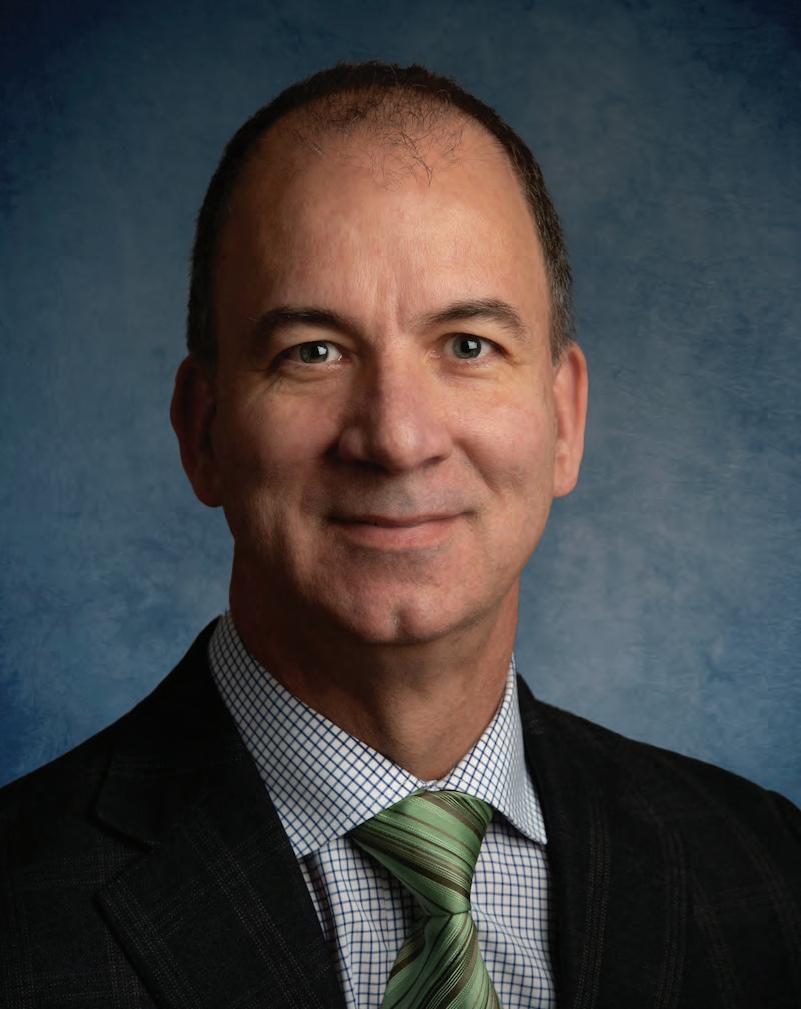
responsible for over two hundred restaurant concepts opening over various continents.
Starting as an executive chef he was promoted to and assumed key food and beverage roles, eventually ascending to GM/COO of luxury club and resort properties. Most recently he was the GM/COO of the 151-year-old Union Club of Cleveland. These roles have positioned him as a strong advocate for key stakeholders of ownership, guests/members, and operators.
McFadden’s extensive career in high-end luxury hospitality markets has provided him with the knowledge and expertise to fine tune our clients’ hospitality offerings in all areas. He can now put that knowledge to work for you.
“What an incredible addition to KK&W. Lawrence represents a hospitality leader in complete alignment with our core values. He has such a broad, impressive, and celebrated background only surpassed by the superior skills, experiences, and knowledge he adds to our team. He immediately elevates our firm on many fronts both in executive search capabilities and with his extensive hospitality consulting credentials,” expressed the partners.
“The privilege to join a best-in-class organization impacting our industry is a true inspiration. The team of professionals KK&W has assembled secures that our firm’s mission is defined by the respect we have for our partners. This respect is steeped in trust adding value in a mutual mission of excellence. I am honored to be part of KK&W’s effort to provide unparalleled service offerings to their clients,” McFadden responded.
McFadden developed a great understanding of global hospitality habits when living in Hong Kong, Singapore, and various cities in the United States. His restaurant concepts stretch the globe touching on various cuisines, service styles, and business atmospheres.
An accomplished Certified Master Chef, as well an Honoree Doctorate from Johnson and Wales, allowed for culinary understanding and influence as a GM/COO. While in the role he was honored with the Excellence in Club Management Mel Rex Award as top General Manager Nationally in the non-country club category. He can be contacted at: lawrence@kkandw.com or (239) 963-6888. BR
“Throughout our Director of Culinary search process, both Chef McFadden and Ms. Whittley maintained open lines of communication, provided regular updates, and addressed any concerns or questions promptly. They exhibited a high level of professionalism, integrity and discretion. Lawrence’s intensity and Annette’s charm made this a very enjoyable process. I firmly believe KK&W are leaders in the field of executive search and their commitment to excellence sets them apart. Thank you for your outstanding service.”
Timothy Bakels, CCM, CCE, General Manager/COO Colleton River Club, Bluffton, SC


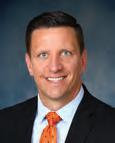













Serving The Industry Since 1996 SCAN TO BROWSE OUR ACTIVE CAREER OPPORTUNITIES



Specializing in GM/COO, CEO, AGM, Clubhouse Manager, Food & Beverage, Financial, Golf, Culinary, Agronomy, Racquets, Human Resources, Fitness & Wellness, Membership/Marketing Searches.


Julie Hawbaker and Jason Herring, co-founders of SYZYGY Global.
For more information, please visit syzygyglobal.com
The world of golf is undergoing a remarkable transformation, thanks to advancements in technology.
Traditional driving ranges are giving way to a new concept that caters to the evolving needs of golf enthusiasts. In an era where members seek novel ways to entertain themselves, golf clubs are focusing on creating golf bays that seamlessly integrate both function and fun through the incorporation of cutting-edge technology.
One prime example of this paradigm shift can be seen at Boca West Country Club, where significant enhancements have been made to their golf bays. Utilizing the award-winning louvered pergola from SYZYGY Global, they have created perfect 10x15 bays that truly stand out. This innovative solution has raised the bar for golf bay design and has become a benchmark for other clubs to follow.
However, amidst this technological revolution, a problem has emerged. Golf clubs, eager to embrace golf technology, face the challenge of aligning the desires of three distinct committees: the golf committee, the aesthetics committee, and the technology committee. These committees have struggled to find common ground, particularly in terms of aesthetics, preventing the golf bays from seamlessly blending with the existing club facades.
The golf committee is primarily concerned with enhancing golf functionality, while the technology committee seeks to integrate technology such as Top Tracer and Inrange golf systems to elevate the golfing experience. Meanwhile, the aesthetics committee strives to ensure that the design of the bays harmoniously complements the club’s overall appearance. Up until

now, golf bays have consisted of green canvas and thin, transportable aluminum structures that fail to meet the standards of these committees.
SYZYGY, having received feedback from numerous award-winning clubs, has successfully found the solution to the challenge at hand.
Leveraging our already award-winning product, which has also been honored as the Outdoor Structure Company of the Year by BoardRoom magazine for two consecutive years, SYZYGY has perfectly redeveloped and redesigned 10x15 ft golf bays. These bays are available in modular configurations of 6, 12, 18, and 24 units. By incorporating SYZYGY’s expertise and renowned outdoor structures, golf clubs can now offer aesthetically pleasing golf bays that seamlessly integrate golf functionality while accommodating the latest golf technologies from leading companies in the industry.
These new golf bays not only fulfill the functional needs of golfers but also incorporate the latest technology seamlessly. SYZYGY has partnered with leading companies in the golf industry to integrate their cutting-edge technologies into the existing system, offering an all-encompassing experience.
The evolution of golf bays is set to revolutionize the way we approach golfing. The marriage of technology and aesthetics in these redesigned bays represents a significant breakthrough for golf clubs worldwide. SYZYGY’s innovative solution has bridged the gap between the desires of multiple committees, finally providing a common ground where functionality, aesthetics, and technology can coexist harmoniously. As golf enthusiasts embrace these advancements, the future of golfing looks brighter than ever. BR
Jason Herring and Julie Hawbaker, the co-founders of SYZYGY Global, are the visionary minds behind this remarkable innovation. They have propelled the company to become the largest designer and installer for residential and commercial outdoor living structures in Florida. Their expertise and dedication to creating exceptional outdoor experiences have been instrumental in the success of SYZYGY Global.


BONNIE J. KNUTSON
Bonnie J. Knutson Ph.D. is a people watcher. A professor in The School of Hospitality Business, Broad College of Business, Michigan State University, Dr. Knutson is a member of the Country Club of Lansing and the Michigan Athletic Club. She can be reached via e-mail: drbonnie@msu.edu
From the time I was in kindergarten, I could not wait for report card day.
I loved seeing all those stars in the categories that got measured back then: coloring, knowing my numbers and letters, and following directions (I was never too good at that.)
In grade school, it became all the check marks in the Outstanding category, which morphed into A+s in high school and 4.0s in college.
Part of my excitement probably stemmed from my parents’ high expectations and the importance they placed on learning, which they instilled in me; I wanted them to be proud. However, part of it also probably stemmed from my naturally competitive nature.
But most of all, the marks on my report cards were important to me because they were a measure of my success at reaching the goals I had set for myself.
places where research showed the members were going. The prices were basically the same – from pasta to prime rib, there was not a significant difference in menu prices.
Second, a member survey found that menu prices were not what was keeping members away. Instead, it was the feeling that they had to “get dressed up more” to go to their club. At the other restaurants, they could stay in their more comfortable and casual clothes.
Discovering this, the club made a slight adjustment to the dress code, designed a more informal table setting, renamed menu items, re-wrote their descriptions and incorporated a more relaxed uniform for servers. The club also launched an innovative promotional campaign introducing the changes to the membership.
The club got the results it was looking for without changing prices. More reservations. More revenues. More satisfied
Not everyone wants to be or can be a member of your club. Elliot Schreiber, PhD, summed it up best by saying, “Relevance is more important than differentiation. Business strategists, marketers and brand managers have been fixated on differentiation. Customers, however, are drawn to relevance – the things that connect with them emotionally.
This is akin to two old truisms: (1) You cannot manage what you cannot measure, and (2) It is the WIITY (What Is Important to You) principle in action. The second maxim is called relevancy. Put in the context of your club, what is important to your members and how can you measure your club’s success in managing what’s important?
The closer the club is to offering members what is important to them, the more likely members will be engaged. The key, then, is identifying those essential requirements. And sometimes, they are not what you assume or expect.
Take the case of the club that, like many of yours, was trying to increase weeknight reservations. Management assumed that menu prices were too high for a weekday grab-a-bite replacement dinner. So, it took a two-pronged approach to the relevancy question.
First, it compared the club’s menu prices to those of popular, competitive and more casual restaurants in the area. The
members. All because the changes made the club’s experience more relevant to members.
So how can you know how relevant your club is to your members? For this, we can turn to the brand asset valuator developed by Y&R, the iconic brand strategy agency. The model is built on years of research that found that the longterm success of a brand is the result of the brand progressing through four stages. The first is differentiation and the second is relevance. Together, they reflect the strength of the brand, which is the focus of this article.
Differentiation is the starting point for every brand – including clubs. What uniquely defines your club? How is your club distinct from other clubs in your area? If you cannot offer your membership something they cannot get anywhere else, why should they belong to your club?
There are many amusement parks, but only one Disneyland. There are many quick-service restaurants, but only one
Chick-fil-A. There are many hotels, but only one Graduate. There are many clubs, but only one of you. What is your differentiation? Your uniqueness? That thing that members can only get at your club?
But that was then, and this is now.
For a long time, clubs were told that it is all about being different. Unique doesn’t cut it with members anymore. It is necessary, but not sufficient. Members and prospective members tell us that their club must be relevant to them, too. How important or meaningful is that point of difference to them? Taken together, Y&R calls it brand strength. So, the question is: Taken together, how strong is your club?
By its very nature, a club stands apart from its competitors. But this difference must also be unique in some aspect. It must offer something that members cannot get anywhere else. Relevancy, of course, relates to how closely the club meets the needs, wants and requirements of its members.
But how do you start determining the brand strength of your club? You begin with really understanding what your members require not only to be members, but to be engaged members. To put together a table for the annual New Year’s gala. To hold their company’s charity golf outing at your club. To book the ballroom for their son’s or daughter’s wedding. To grab a bite on a weekday night. But most of all, it determines whether they stay loyal, active members who are also advocates for their club.
As Marshall Field, of department store fame, purportedly said when asked why his retail store was so successful, ”I ask the lady what she wants and then I sell it to her.” His truism is still valid today. And it requires the right asking strategy, of course, conducted by an outside entity that understands the club industry and the best methodology to use to get you the information you need for the next phase.
Once you understand members’ requirements, construct a four-quadrant square, much like is used for menu engineering. Label the horizontal uniqueness and the vertical relevant. Now, position your club and your competitors in their respective squares. Is yours a plow horse, a puzzle, a dog or a star? This simple graphic exercise will give you valuable insights into how strong your club’s brand is in your market area and what you can do to become or remain a star.
We all know that we can’t be all things to all people. Not everyone wants to be or can be a member of your club. Elliot Schreiber, PhD, summed it up best by saying, “Relevance is more important than differentiation. Business strategists, marketers and brand managers have been fixated on differentiation. Customers, however, are drawn to relevance – the things that connect with them emotionally. As I explain to my students, differentiation is all the people you date; relevance is the one you marry because you cannot live without them. It is emotional and irrational, but the bond is strong.”
Your bottom line will thank you. BR


LARRY HIRSH
Larry Hirsh, CRE, MAI, SGA, FRICS, is the president of Golf Property Analysts (www.golfprop.com), a leading golf and club property consulting, appraisal and brokerage firm based in Philadelphia. He blogs on a variety of club and appraisal issues at http://blog.golfprop.com. In addition, he is the author of “The Culture of Golf - Isn’t It Just a Game?” available at: https://golfprop.com/the-culture-of-golf/.
A few months ago, I introduced the concept of a club culture analysis. I’ve been asked what’s entailed and how it can help a private club plan for the future.
In a nutshell, there are five areas on which to focus when evaluating club culture.
• Atmosphere
• Formal
• Casual
• Membership
• Owners
• Customers
• Club usage
• Family
• Business
• Sports
• Social
• Type of club
• Primary
• Secondary
• Destination
• Residential
• Resort
• Level of activity
• Number of golf rounds
• Dining (capacity, hours, use)
• Sports (racquets, swimming, fitness, etc.)
With a focus on these five areas, a club culture profile is an immersive and rigorous look at key elements of a club’s culture to develop a better understanding of that club’s economic potential.
It’s imperative in assessing membership attrition risk and member alignment on club priorities, use and long-term stability. Qualitative in-depth interviews and survey research with current, former and prospective members will yield a comprehensive assessment of member sustainability and the attractiveness of the club relative to its competitive set both in the present and future.
Summary measures from supply/demand analysis and consumer research can be compared to a normative database to help evaluate critical issues and points of differentiation.
You can use a club culture analysis to, among other things, respond to the needs and desires of your membership and look forward to the club’s future generational evolution. What will the membership look like in five, 10 or 20 years? What changes
might sustain or enhance your club’s allure as membership evolves? How can your club plan accordingly?
Present and future member perceptions of the club’s physical assets and characteristics change over time, along with the attitudes of the cost/value relationship and the atmosphere and motivations for joining. Many clubs strive to preserve traditions that are contrary to their long-term best interests. Planning for the future with an understanding of the club’s present and future culture is essential for long-term stability and success.
Historically, clubs have often relied on comparison to those considered “peer clubs” in making planning decisions rather than projecting how their existing and future members might react to those plans.
While reinvestment in club facilities is necessary, how funds are invested, fiscal responsibility and the impact on the club’s future are sometimes overlooked in favor of either leadership overspending to leave a legacy or underspending to keep dues artificially low. Each risks the club’s stability and future. Unfortunately, I’ve seen clubs fail both ways.
Identifying and understanding a club’s culture objectively and realistically can be a real asset to future planning and provide valuable insight into the decision-making process. BR


• Candidate selection and acquisition • Onsite and virtual interview recruiting • In and out of country placement and extensions • Full legal services
• Housing acquisition and management • Air and ground transportation • Health insurance available
David Crandell, CCM (561) 531-0861 | David@mtlint.com
Bia Molina (305) 926-6908 | Bia@mtlint.com

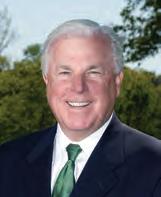
PHILIP J. HARVEY
Phil Harvey is president, Preferred Club, a Venture Programs company. He can be reached via email: pharvey@ventureprograms.com
How can the club industry prepare for the resultant risk of climate change?
Historically, the club industry relied on an abundance of supply in selecting fully insured portfolios to meet its needs. This required little out-of-pocket exposure and further liability to their profit and loss.
Much has changed over the past two years in considering the options available through the traditional markets. Today, there are few suppliers and limited coverage options. Much of the appetite has changed because of severe loss experience in property and liability lines of coverage. The insurance industry no longer wants to be in the risk business and looks to the insureds as co-insurers in the risk paradigm.
Today, we are experiencing firsthand a world of change. The last quarter of 2022 and the first quarter of 2023 stood for the largest dollar loss experienced by primary and reinsurance ability than any quarter in history because of weather extremes.
Climate change and the results for the past two quarters are turning up the heat on insurers and insureds, including the club industry. The carrier base has pared down to a limited number of quality suppliers. Many well-known brands have exited the club industry due to severe loss experience over the last five to 10 years.
Many losses were driven by climate events not considered or accounted for in the actuarial process. For example, flooding, freezing, and large losses in outdoor property caused by microburst events.
Insurers and reinsurers committed to going forward require insureds to participate in larger positions on deductibles or self-insured retentions, mostly affecting property and professional liability lines of coverage. Changes in customary purchasing decisions have become more complicated.
Going forward, if triggered, changes create further financial liabilities for the club and its membership. To complicate matters, many of these exposures – hurricanes, floods,
Insurance going forward will encompass more of a financial decision than in the past. It will be more common to experience curtailment of coverages and higher financial participation because of adverse events. This will require more vigilance as to increased potential liabilities to the club and its membership. What has been the norm for areas with high exposure, such as Florida and the southwest, will be more commonplace in most of the country due to climate irregularities.
This included the wildfires in the West, flooding in the South and the record-breaking low temperatures of the Midwest and Northeast regions. Climate change and its effects are now a major consideration as to what carriers will be willing to provide and with what limitations their offerings will stipulate.
wildfires, and freezing with a weight of snow – are on a perevent basis.
Insurance providers going forward are modeling and posturing their offerings to protect them. Acting as excess players to higher insureds participation, they expect better outcomes in generating underwriting profits. This also
places more emphasis on clubs supplying better facilities management. This is a major issue since many clubhouse facilities do not meet today’s rigid construction standards.
Insurance going forward will encompass more of a financial decision than in the past. It will be more common to experience curtailment of coverages and higher financial participation because of adverse events.
This will require more vigilance as to increased potential liabilities to the club and its membership. What has been the norm for areas with high exposure, such as Florida and the southwest, will be more commonplace in most of the country due to climate irregularities.
Named event deductibles per exposure, such as named storms, will be the norm. In some cases, based on severity, it may be difficult or impossible to secure coverage from the providers to the club marketplace.
Although the effects of adverse climate and unusual events clearly are out of your control, it is best to have a game plan to help your club and board make critical decisions.
Review the state of your facilities. It is invaluable to share with your broker and insurance provider that facilities have had a comprehensive review and are up to and above building codes.


Some of the areas to pay close attention to involve roof and heating systems to avoid water damage, which is prevalent and costly. Ensure you have the proper flow control on your main water supply to end leaks within your clubhouse.
Have a certified engineer inspect your sprinkler system every year. This is invaluable since sprinkler heads installed in past years no longer meet the code.
This gives your profile more credibility in the eyes of the insurer since the insurer now has a third-party certification. This also supports the ability to subrogate a claim.
Have your grounds and maintenance supervisors supply a comprehensive plan addressing exterior issues such as tree removal and course maintenance and how to deal with flooding and freezing temperatures.
Have a third-party attorney or advisor review the contracts for new construction or modifications to existing facilities. In particular, the indemnification agreements and project insurance requirements. Do not use the services of a board member.
Although these pointers seem redundant, it is vital that in the future, clubs realize that they will be taking on more financial liability and must minimize any exposure to balance sheet losses.
Better yet, think like an insurer. BR



By Jim Cardemone

Ryan Doerr has spent his entire career in the hospitality industry, with over 25 years in clubs. His passion for developing and educating others to help them grow and succeed has always been an area where he has excelled.
Ryan, principal with Strategic Club Solutions, is being recognized this year as one of two recipients of the Gary Player Educator of the Year Award for 2022.

He has consulted with over 548 clubs, authored manuals, books and whitepapers, hosted various presentations and led countless workshops and educational programs to empower managers and leaders to achieve their goals and reach their full potential. He truly makes a difference in the lives of everyone with whom he connects.
When I asked Ryan to reflect on his journey to this moment, he shared that he has always been passionate about serving others. This passion led him to pursue hospitality, starting in restaurants and resorts and then club management. Ryan took his corporate hospitality knowledge and experience into private clubs and produced systems, processes and training programs and achieved excellence in service and financial health.
Ryan advanced quickly through the ranks, becoming a general manager before the age of 30. He worked tirelessly to make his clubs successful, focusing on developing the people around him and becoming highly sought after and recruited for the results he was producing at his clubs.
Even with his quick success, Ryan felt he could do more. He saw the challenges other club managers and leaders faced, and knew he could help them overcome their challenges with the right knowledge and tools.
After several years of being recruited across the country and several side consulting projects, Ryan decided to get certified as a business coach and founded Strategic Club Solutions. The company’s goal is to make a difference, provide a fresh approach to private club consulting and develop and deliver proven solutions, educational resources and programs to boards and managers in the private club and community industry.
People began to notice Ryan’s expertise and success as he strengthened his reputation as a leader in the industry. As his profile grew, Ryan began to develop more educational resources and programs. Through it all, Ryan remained committed to educating and empowering club managers and leaders. He witnessed the impact of his work as people began implementing the lessons he and his team at SCS were teaching and seeing results in their clubs and communities.
Laura Leszczynski soon became Ryan’s partner in crime. They began combining his operational expertise and acumen with her 30 years of experience in marketing, branding and neuroscience to shake things up. Together, they continue to develop fresh new content and perspectives for managers and boards, separating the quality and context of their approach.
While they were always humbled by the positive feedback they received, Ryan and Laura never lost sight of the fact that there was more work to be done. In January, they published their first book, “Clubology: The Science and Strategy of Being in the People Business.” Ryan and Laura hit the Amazon bestseller list on their first day.
Ryan and his team continue to provide immense value and positive disruption in the private club and community space. The expectations of members at private clubs has changed dramatically over the last five years and will continue to change as they age and as their experiences and overall expectations continue to evolve. I know we will continue to see exciting and transformative changes from Ryan and his team of trailblazers and thought leaders over the next decade.
This award is well-deserved for a wonderful leader in the club industry, Ryan Doerr. He gives all the credit to the support of his family and team members, particularly his wife, Heidi, and his co-author, Laura Leszczynski, who is equally deserving of this recognition.
If you haven’t met or worked with Ryan and the SCS team, you are missing out. As a friend, colleague and client, I am proud to have worked with Ryan on many occasions and proud to call him a great friend. BR
Jim Cardemone, CCM, CCE, is general manager/COO at Glen Oak Country Club, Glen Ellyn, IL. Jim is a former peer, client and friend. Jim and Ryan came up the ranks. Jim also serves on the Greater Chicago chapter CMAA Board and several national CMAA committees.
A distinguished club deserves a distinguished private bank. Discover how MidFirst Private Bank can assist with all of your financing needs. Whether you are renovating the clubhouse or re-designing the golf course, MidFirst Private Bank is here to provide concierge-style banking service every step of the way.

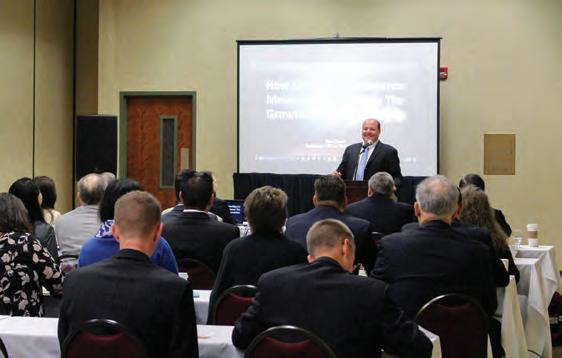

602.801.5325
tanner.detro@midfirst.com midfirstprivatebank.com

By Rick Ladendorf

FOCUS
Private club leaders and board members face unique challenges in today’s fast-paced world. Maintaining healthy and sustainable cultures while navigating the complexities of managing membership and operations can be overwhelming. But what if there was a way to tackle these challenges with grace, clarity and purpose?

Enter Craig Marshall, known as “The Monk,” and our partnership. Six years ago, we joined forces to develop a revolutionary leadership development program based on Craig’s 35 years as a yoga monk and my 35 years as an influential business leader and entrepreneur.
The result? Craig is one of two recipients of the Gary Player Educator of the Year Award for 2022.
When I first met Craig, I had a limited understanding of health and wellness. My focus was primarily on physical fitness and nutrition. However, my perspective changed dramatically after spending time with Craig and conducting thousands of interviews with club leaders. I came to realize how important mental health is in our overall well-being.
Craig opened my eyes to the importance of a healthy mindset and its impact on our lives. That’s why we created Mindful “U,” a platform that promotes mental health and well-being through mindfulness, self-reflection, learning and unlearning.
Introducing Craig Marshall
Craig’s approach to leadership development is rooted in mindfulness and a deep understanding of the root causes of life’s challenges. He combines ancient wisdom with modern best practices to create a holistic approach to leadership that is powerful and effective.
As a child actor in Hollywood, Craig’s mentors included Ronald Reagan, Shirley Temple and Donna Reed. He has also had close friendships with Stephen Covey, Zig Zigler, Deepak Chopra, Don Miguel Ruiz and other thought leaders. In addition, many well-known figures, including Steve Jobs and George Harrison, have felt his impact.
Craig was a monk with Self-Realization Fellowship and lived in a monastery for 35 years. He studied and lectured worldwide thousands of people. For 15 years, Craig trained the newest monks. He was respected for his wit, wisdom, and passion for presenting a modern approach to timeless principles. Mindful “U” is the result of our vision to bring mindfulness tools, practices and certification to the forefront of the club industry. The 26-week Leadership Development Certification Program has helped hundreds of general managers and their management teams develop strong inner foundations, allowing them to lead with purpose, reduce stress, gain clarity and confidence and experience greater success.
The cost of recruiting, training and retaining employees, particularly in leadership roles, can be high for private clubs. Investing in leadership development programs and key employees can help reduce turnover and promote from within, positively impacting the member experience, employee morale and productivity.
“When speaking at the BoardRoom Distinguished Club Summit, Craig’s presentation to high-level executives got to the core of what really matters,” explained John Fornaro, publisher and CEO of BoardRoom magazine.
The impact of Craig’s teachings is evident in the testimonials of those who have participated in Mindful “U.”
“I’m so excited by the education Mindful “U” provides. If everybody in the world was taking these classes, we wouldn’t need to fight each other,” said Crystal Thomas, managing director of the CMAA Golden State chapter.
Craig conducts a series of online leadership masterclasses for general managers, aspiring general managers and club professionals. The classes cover various topics, including career development, stress management, leadership development, sleep, family and home, communications, relationships, life changes, health and wellness, financial challenges, work-life balance and emotional intelligence.
Craig has said, “Mindfulness is no longer just a buzzword; it is a proven method for improving mental and physical well-being and creating a healthy and sustainable culture.”
A key component of Craig’s teachings is the importance of work-life balance. He believes that an effective leader must have balance in all areas of life, including work, family and personal pursuits. By taking a holistic approach to leadership, Craig helps club leaders and board members develop the skills they need to achieve this balance, leading to greater happiness, success and fulfillment. BR
Rick Ladendorf is co-founder of Mindful U, a platform that promotes mental health and well-being through mindfulness, self-reflection, learning and unlearning.




and

member amenities. Tradition with a twist.
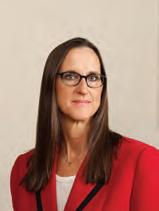
ROBYN STOWELL
Robyn Nordin Stowell is a partner in the law firm of Spencer Fane LLP in Phoenix, AZ. Robyn may be reached at (602) 333-5467 or at rstowell@spencerfane.com.
In this the third part, the questions and answers focus on member-owned clubs, consideration of local laws – statutes and court-made law – as well as their bylaws to decide how to apply this information.
Can the club move all of its voting to ballot or electronic voting before the actual meeting?
That depends on what your bylaws say. In addition, if allowed, it is important that the vote be properly structured. For example, if your bylaws say that the directors will be elected at the annual meeting, you would proceed differently from bylaws that say the directors will be elected by ballot prior to and announced at the annual meeting.
In most cases, the statute will allow the club to have a meeting by written ballot without a physical meeting unless your bylaws provide otherwise. Potentially a club can structure its voting as a “meeting by ballot” before the annual meeting and then announce the results at the annual meeting. To determine the answer for the specific voting question for your club, you should identify the voting question and review your bylaws and applicable statutes.
Can members vote on literally any subject or issue?
No, there is a limit to topics and issues suitable for member votes. First, the board has certain legal and fiduciary duties. Second, the bylaws typically provide certain express authority to the board. In addition, there are questions that should never be decided by the members.
Operational decisions and any fundamental legal and fiduciary decisions must be made by the board. The fundamental way that members

control decisions that are within the board’s purview is to elect the board they want, not by voting on individual decisions.
Must we allow members to vote by proxy?
It depends. Most state statutes say that members may vote by proxy unless the bylaws expressly provide otherwise. You need to know what your statute provides and what your bylaws provide. I have reviewed many bylaws that prohibit voting by proxy.
If a club is allowing voting by proxy, it could include in its bylaws certain limitations or specify the board’s ability to impose requirements for proxies. That allows the board to utilize proxies in an efficient and effective way for that particular club and particular vote.
Can the board control who gets to act as a proxy for a member?
The statutory and bylaw review described above may provide information on this question. When I provide a form proxy, I usually provide the option for the member to name a specific voting member in good standing (fill in the blank) or a club officer (named after the blank). Members sometimes forget that the proxy holder must be at the meeting to vote. There is higher certainty that board members will be in person to vote than any given member in general.
A directed proxy is a proxy that directs the proxy holder how to vote. For example, it might say “I hereby name ________________ as my proxy to vote as follows: ______________.” This means the proxy holder is being told to vote for these board candidates or to vote yes or no on this voting question.
If your club is considering a bylaw update, voting processes should be reviewed. For any member vote, the club should consider its options for how to allow members to vote and what notice is required for that to be effective. BR





JOHN R. EMBREE
John Embree is CEO at the United States Professional Tennis Association and can be reached via email: john.embree@uspta.org.
Over the past several years, I’ve had the pleasure of speaking at the CMAA Business Management Institute, which is dedicated to non-golf activities at clubs.
This five-day workshop is usually held in early January in Scottsdale, AZ.
Even as COVID-19 ravaged our country starting in March of 2020, the BMI had already occurred in January. We returned to the normal schedule in 2022; this past January was my fourth appearance.
Scottsdale is the perfect destination for this event because of the plethora of fabulous clubs that play host throughout the week. Desert Highlands, DC Ranch, Desert Mountain, Arizona Country Club, Mirabel Golf Club and others go out of their way to roll out the red carpet for attendees.
These host sites and their staff put their best foot forward and impress attendees with food and swag that are over the top.
The agenda is chock full of education. The sessions cover cutting-edge programming that clubs offer their members to



encourage club usage beyond the usual golf, tennis, dining and swimming.
Topics such as youth programming, kids camps, aquatics operations, fitness and wellness, yachting, nutrition, adaptive sports, winter sports, bocce and croquet and, of course, spa services are some of the subjects covered.
For these BMI sessions, I’ve been fortunate to serve as the racquet sports representative. Sure, I talk about the state of tennis and what is happening in the market today, but when I delve into alternative racquet sports, that always gets the most interest.
With the explosive growth of pickleball across the country, with the importance of platform tennis in the northern and midwestern climes, with the introduction of padel and, finally, the ability to use existing tennis courts with blended lines to introduce pop tennis as a part of the racquet sports menu, there is a ton of information that the audience craves to hear.
The four “Ps,” as the industry affectionately calls them, are becoming a bigger piece of the club landscape. These family-friendly activities are driving rapid change in the club industry and the racquet sports world. Consumers are flocking to them. As a result, clubs and tennis teaching professionals must be prepared to deliver programming in activities that are vibrant and comprehensive because that is what the customer wants.
Typically, the audience for this BMI is not the general manager but food and beverage, clubhouse managers, membership/activities directors and even financial staff. Through no fault of their own, they may not be familiar with the latest trends in our industry. They may have heard about these nontraditional sports or perhaps their club has added one of them. During this specific BMI, they get a closer look into what is driving their popularity.
I was energized by the audience interaction and genuine curiosity. Tennis continues to be a cornerstone of most clubs’ offerings, but there is more and more enthusiasm for these new pursuits. It’s wonderful to see. Club members see the added benefit that these alternative racquet sports offer. They will keep families coming back to the club more frequently, which is what any facility hopes to achieve.
If this article piques your interest, recommend the workshop to your staff. They will benefit from networking with like-minded club professionals and bring back a host of new ideas that you can add at your club. BR

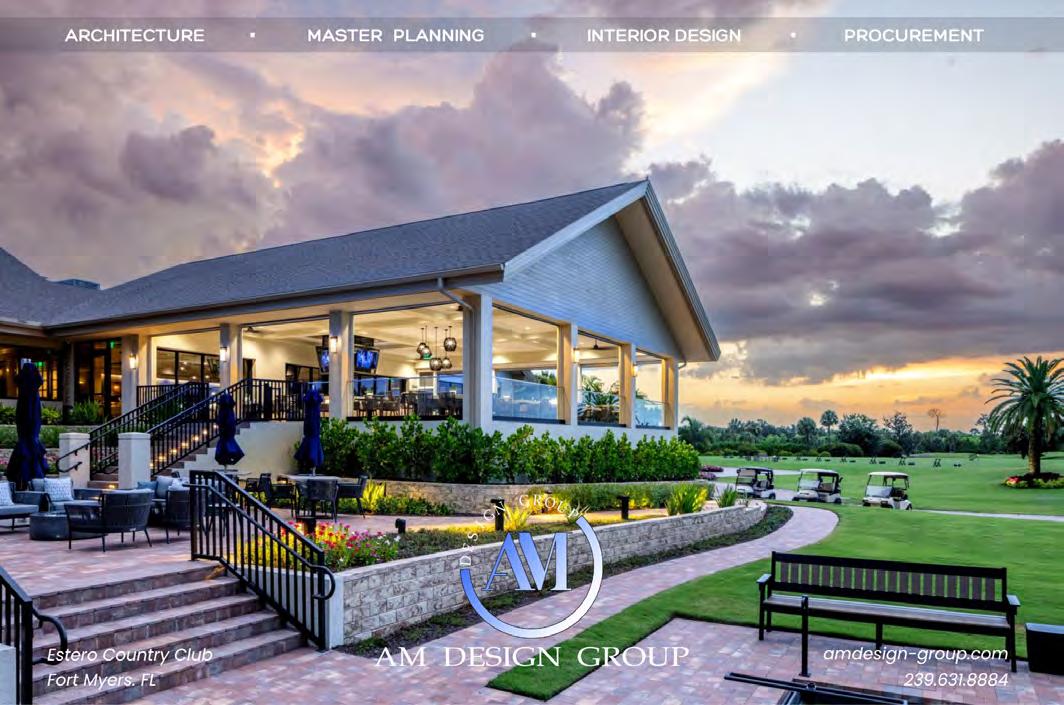

“When you see the natural beauty and pure splendor of this area, it is easy to see that these courses are absolutely magical.”
– Arnold Palmer
The Las Vegas area is home to spectacular golf courses. The natural desert environment is a beautiful contrast to the green fairways and greens of many respected golf course architects.
Red Rock Country Club and the Arroyo Golf Club are proud to be Distinguished Golf Destinations. These Arnold Palmer-designed courses are famous for the views of the strip and the mountains lit up at night.
Arroyo Golf Club is in the master-planned community of Summerlin in Las Vegas. The 6,883-yard, par-72 golf course ribbons seamlessly through the rugged terrain and is nestled between the spectacular landscapes of Red Rock Canyon, one of Las Vegas’s most revered natural landmarks. Panoramic views of the Las Vegas cityscape are stunning from the seventh hole.
Red Rock Country Club features rolling fairways, dramatic water features and multi-tiered greens. This 7001-yard, par-72 private mountain course has a minimum of five tee placements per hole.
Both golf courses provide a tranquil environment to escape from a busy lifestyle. Yet, at the same time, they are close enough for one to enjoy the city’s entertainment. With such a perfect balance of tranquility and city life, these Las Vegas golf clubs are the best of both worlds.
The clubs have one owner. Thom Blinkinsop, general manager for both Red Rock and Arroyo, and his long-tenured, dynamic management team have developed a number of distinguished ideas which enhance the golfing experience.
For example, while the golf course is closed for overseeding every September (17 days) and golf is at a standstill, they do a car show featuring 500 cars on the fairways and driveways. This event includes a music concert on the driving range. The property will host 2,500 to

3,000 people for the car show. Proceeds from the event benefit a different charity each year.
Blinkinsop is not a micromanager. He hires people smarter than him, and he has good advice for his management colleagues. “Respect your team and they will work hard and make the job easier,” Blinkinsop says. “Listen to your employees and members. Let your employees run with ideas. It is always easier to pull a rope than to push a rope.”
As mentioned earlier, giving back to the community is important. For more than 10 years, Blinkinsop and his team have hosted an annual fundraising golf tournament at Red Rock that has raised more than $1 million for Operation Homefront, whose mission is to build strong, stable, and secure military families so they can thrive — not simply struggle to get by — in the communities they have worked so hard to protect.
Having fun is another big part of this community. Red Rock hosts an annual roast of the members. This tradition is heading into its eighth year and continues to grow each year. The roast is similar to the old TV roasts, with a panel and a Dean Martin-type mediator named Rick Recania.
After playing golf at Red Rock or Arroyo or coming in for a social dinner, the dining experience at both clubs includes a la carte and a three-course meal experience (with waived corkage fee) and a fabulous and loved happy hour.
Blinkinsop and his management team understand the importance of a quality F&B experience (consistency and quality) and incorporate it into all avenues of Red Rock and Arroyo, knowing it is the hub of both clubs. The F&B experience draws in people, and people draw in more people.
Also, they do not believe in canceling events and recognize the importance of their members’ trust in them to execute their loved events.
Blinkinsop summarizes his feelings about being a Distinguished Golf Destination by stating, “It shows all our hard work has been rewarded. Now we need to push for more.” BR


It is important to note that only some clubs qualify as a BoardRoom Distinguished Club This is because even after being nominated by the nomination committee, some clubs lack the high level of member service to be a Distinguished Club.
The Cat Cay Yacht Club is not one of these. This Distinguished Club is in the Bahamas, 50 miles east of Miami. It is a private member-owned island.
The Duke of Windsor, while governor of the Bahamas, used to play golf on the island and gave his name to the golf course (Windsor Downs). That was after Louis and Rae Wasey bought the island in 1931.
These visionaries enlarged the Manor House (built by the previous owners, the Strongs) and built English-style cottages for their friends and clients. After four generous years with their guests, they finally converted the island to a private club in 1935.
Before the Strongs, Captain Arthur Haigh was the owner; before him, Queen Victoria granted the original deed for Cat Cay in 1874 to Captain William Henry Stuart, a lighthouse keeper.
During the Rockwell years of the 1960s-1980s, rigid guidelines were abandoned in favor of a more relaxed approach to club membership.
John McCranie has been the CEO of Cat Cay Yacht Club since 2012. He has led the board to invest in infrastructure improvements. The roads, runway, electrical infrastructure and some houses in the village have been renovated. Cat Cay Island has an airport, immigration and customs, a marina, a market, a clinic, a fire station, a fire truck, and a fashionable clothing boutique.
More improvements are coming. Kevin Brown, the director of golf, is renovating the Windsor Downs golf course (nine holes), and a new clubhouse, gym/spa and swimming pool will be built.
McCranie has passionately implemented the best of values for the club, and he has helped the community become a genuine family with happy members and employees.

RONALD BANASZAK
Ronald Banaszak, CCM, CCE, BoardRoom Distinguished Club Executive Vice President of International Business Development. Ron may be contacted at (415) 420-5183 or ronbanaszak@gmail.com.

McCranie set a clear direction from day one: respectful relationships, trust and high standards.
“The staff needed to master the functions, as well as know their purpose,” McCranie says. The number one purpose is to create happy members.
McCranie has the talent to detect each employee’s unique strengths. He says it best: “What is really magic is to find the right person for the right position and see this person growing and blooming.”
Ellorece William is one of these success stories. She is the human resource manager and retail manager.
“When John arrived, we learned how to function as a club and create a culture in the team,” William said. “We have exceptional service with true personal delivery.”
Cat Cay is an amazing club with a magic symbiosis, like in a balanced and happy family. Members and employees care for each other. Members recognize the sacrifices and efforts of employees, especially those who live on the island.
They pray, party, fish and even clean their fish together. But, for the members, the staff is the club’s most valuable asset. The village for the employees has been renovated; they have their own workout room and a renovated clubhouse is under construction.
“It’s a beautiful place with beautiful people,” says Marvette Rolle, the housekeeping manager.
One of the key factors in the success of the island is the strong sense of community. Over the years, members and employees have come together to support one another and work toward a common goal of building a better future. As a result, their symbiotic relationships are nurtured and celebrated.
In addition to being a paradise, Cat Cay is a uniquely sustainable and autonomous island, able to provide ample water, solar electricity (1.5 MW), wastewater management, a waste incinerator and a robust recycling area.
With its innovative approach to waste management and an autonomous power system, Cat Cay is setting an example for other communities. BR


Larry Savvides is chief operating officer and general manager at Hunters Run Country Club in Boynton Beach, FL. He can be reached via email: Hunters Run Country Club
If you ask 10 people to define branding, you will get 10 different responses.
I prefer the American Marketing Association definition: “A brand is a name, term, design, symbol, or any other feature that identifies one seller’s good or service as distinct from those of other sellers.”
A critical tenet of branding is to attract new audiences while becoming more appealing to your target audience. As club managers, we are keenly aware of our brand’s importance. After all, we wear our brand on our sleeve every day.
But being aware of our brand is not enough. We must consider how we got here, where we were, where we are now and, more importantly, where we are going. A club’s brand is the culmination of years of operation and change.
For instance, when I was hired as chief operating officer and general manager at Hunters Run Country Club in Boynton Beach, FL, a year ago, I first reviewed the history of this 40-year-old country club community.
There are 1,650 residences, and it’s in a prime location less than five miles from downtown Delray Beach and the ocean. There are various home styles in 23 subdivisions,
from condominiums and villas to estate homes. Unlike many local clubs in the area, the club also offers 17 lodge rooms to accommodate members’ guests.
The critical element is that Hunters Run is well-known for its three 18-hole championship golf courses and special interest activities that appeal to all categories of memberships.
Next, I needed to understand how the outside world perceived us and what others thought about our brand and image. What was in their mind when thinking of Hunters Run?
We conducted a brand audit: research on how potential buyers, realtors and the public perceived the club. Besides critical word-of-mouth references, we attained feedback when they viewed our website and our logo. While many changes had taken place throughout our history to modernize both the club and our community, Hunters Run was still perceived as a senior club that was somewhat outdated.
While Hunters Run’s name recognition was top of mind, we knew we needed a rebrand. We knew where we came from, and our research confirmed what we faced—time to move forward.
In our rebranding efforts, it is critical to note that success was not only on the club management but also on the mem-

bers. We could not change the impression of the club if our board of directors had not already taken steps towards upgrading and modernizing themselves.
Rebranding does not mean starting from scratch. The positive attributes of our club, its longstanding history, amenities, warmth and friendliness of the membership, and the caring attitudes of our employees are all strong benefits that we wanted our brand to represent. These are the club’s unique points in the market.
We began building our rebranding efforts by inspiring the members of our management team so that they could excite their teams. With their assistance, we started making subtle operational changes to improve our brand.
The most significant visual change was our logo. Forbes notes, “Your company logo is one of the most important things people will notice when they discover your brand for the first time—and it’s something they’ll continue to see and notice every time they encounter your brand in the future. Your logo must tell the right story about your company. You want it to convey your personality and be immediately recognizable as unique to your company.”
We recognized that after 40 years, we needed a change. We enlisted the board’s input and a logo sub-committee to expand buy-in. Together, we explored various visual options to capture the essence of the club now and our outlook for the future. We created a new brand that is clean, fresh and modern and still represents our club’s warm, friendly members.
The logo coincides with the release of the club’s updated website and social media platforms. All these directly dispel the perceptions of the past and focus on our future, emphasizing the commandery of the members and the employees— all proud to be Hunters Run.
Our first indication that we were on the right track was an email we received soon after our new website went live. It was from the executive vice president of a large realty firm we have dealt with for years. It read: “I commend you for the great job done with your new site. It is clean, well-organized, and provides great content to potential buyers. It is what consumers are looking for when using the internet for their searches. Great job!”
As we now look around the club, every detail is being addressed with different eyes on how it represents our image. As a result, significant enhancements have been made to our sports and dining programs, including 12 new pickleball courts, new logoed tournament goods, a wine society, and onboarding key positions in management—all representative of moving forward.
Rebranding is part of every strong brand, as we continually need to shape our perception. To stay current. To stand out from the competition. And to represent a personality that resonates with potential buyers. You always want to communicate your story, not let others do it for you. To ensure success, be aware of the importance of branding to reflect the present and the future and to protect your members’ investments. BR


Excellence in governance is key to success for private clubs. BoardRoom magazine is featuring a series of articles written by Henry DeLozier, a partner with GGA Partners, an international consulting firm and trusted advisor to private clubs, golf clubs and residential communities around the world.
This issue features What Governance Trends Can We Expect in 2023? Most relevant trends are external and not subject to the club’s control, economic projections, demographic shifts, fluctuating interest in golf, etc. However, speaking to club governance in 2023, we believe an internal trend will have a greater impact than any external trend. Read more on page 88.
Governing Better. Private club boards are improving in many cases and failing miserably in a few. So what is the difference for the boards creating great success? Boards that are improving their primary performance metrics accomplish three mission-critical priorities. Read more on page 89.
Paul Dank is board certified expert at investigations and background checks as well as a Certified Fraud Examiner. He serves as the President of Kennis.

One thing that is certain about club membership is the belief that the club is a safe place, and that the members are honest people with shared values.
There is a strong expectation that the other members are part of the club for the experience and the comradery. Regrettably, sometimes new members prove to be a bad fit who actually diminish the club experience and even alienate and repel their fellow members. Sadly, others join a club intentionally seeking access to existing members, often with the hope of reaping some financial gain. In worse circumstances, a new member reveals their true identity and becomes a real problem or even a threat to their fellow members, or the staff and endanger the club’s reputation. What
makes matter worse yet is that these people often have predictive information of this type of behavior in their background that would have changed the club’s decision to admit them if it were known, but no one was looking.
With the advancements in information technology, the world has never had more information about people and their actions available to be used for fact checking and to find important character-based information that the applicant didn’t disclose. Kennis is in the business of finding this information, which, importantly, is simply available and waiting to be found, not stored in some secret private locations.
The only barrier to having access to real, meaningful background data about your applicants is that collecting this information requires both specialized skills and tools. This means that a club is unlikely to be successful in finding this type of information by having an employee search for it and it is also well outside the capability of nearly all employee screening firms. The great news is that a firm like Kennis specializes in providing this exact type of information for private clubs. BR
the applicant vetting process.
Implementing fact-based applicant vetting into your current approach is new to many clubs, but has quickly become the industry best practice. For the first time, clubs can make fully educated membership decisions.


The dictionary defines a trend as “a general direction in which something is developing or changing.”
As clubs engage in strategic planning, they invariably look at the trends that will shape the social and economic landscape over the planning horizon.
Most relevant trends are external and not subject to the club’s control, economic projections, demographic shifts, fluctuating interest in golf, etc. However, speaking to club governance in 2023, we believe an internal trend will have a greater impact than any external trend.
Over the past year, we have conducted dozens of member focus groups, surveyed thousands of club members and interviewed general managers and board members from a wide variety of clubs. Of the concerns brought up in these interactions, none has been raised or emphasized more often than the lack of members’ trust in their boards of directors.
For good reason, therefore, we see a trend in clubs planning specific actions designed to gain and maintain member trust in their boards. In addition to my relating some of these actions, I asked my GGA colleagues Stephen Johnston, Liz McDowell and Fred Laughlin to share their observations on how clubs are addressing the lack of member trust in their boards.
Stephen Johnston, Partner: Member trust in their board starts with their trust in the process of electing directors. Their trust in the process turns on their trust in the club’s most important committee- the nominating committee.
Club members want to see their board members elected on their ability to govern. In addition, they want board members who are strategic in thinking and not acting on their own agendas. As such, the election process must be based upon appropriate evaluation criteria, which the nominating committee is required to use in preparing its slate of candidates.
Further, nominating committee members must be independent and objective and will vet candidates based on the evaluation criteria. For example, if an election is viewed as a “beauty contest” or a political process, it can be divisive and reduce the pool of potential candidates simply because some of them don’t want to be part of a contentious election.
To increase the pool of potential candidates, it is best to rely on the nominating committee to conduct its due diligence, evaluate potential candidates on their ability to govern and present a slate of nominees equal to the number of board positions to be filled. Some members may perceive this approach as denying them a choice, but if the nominating committee is trusted to nominate candidates based on clearly documented criteria, the club can avoid the political process, elect quality board members and benefit from a high-performing board.
Henry DeLozier, Partner: I agree with Stephen that member trust starts with their trust in the integrity of the election process. The next item in building member trust is for the board to intentionally commit to best practices in club
governance, adopt sound policies, and document them in a board policies manual. Members often complain about a lack of transparency in board processes and decision-making. A BPM not only can provide structure for the board, but it can also communicate clearly to the members how the board will carry out its fiduciary duties in a professional manner.
One area where member trust can be particularly gained or lost is with the board’s enforcement of rules governing member behavior. The recent pandemic put additional pressure on boards to define rules for member behavior. In the future, we see the willingness of boards to communicate the rules and rigorously enforce them as critical to gaining member trust. An erosion of member trust is practically guaranteed if they see the board giving special treatment or applying rules inconsistently.
Liz McDowell, Director: Picking up on the need to be transparent, members want to know how the club is doing. It is, therefore, important for the board to establish metrics that will communicate the health of the club, publish the metrics, and periodically share performance against them.
Whether monitoring membership attrition levels, amenity utilization, food and beverage cost of sales margins, or wait-list timelines, it is essential that boards understand which metrics are most critical and how to gauge performance towards them. These metrics will also serve to keep members aware of issues as they arise and how the board is addressing them. Members hate surprises, and boards that hide problems until they can no longer be hidden can guarantee that distrust will ensue.
Fred Laughlin, Director: Much of the progress in club governance has come from boards taking the actions recommended above by Stephen, Henry and Liz. Some clubs, however, have bylaws that restrict the board’s flexibility to adopt and implement best practices. For example, a club’s bylaws may prescribe an election process that differs from what Stephen recom-

HENRY DELOZIER
Henry DeLozier is a partner at GGA Partners. He can be reached via at henry.delozier@ggapartners.com
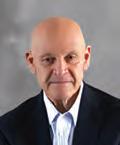
Club leaders need not do everything right. But they must do the right things right.
Private club boards are improving in many cases and failing miserably in a few. So what is the difference for the boards creating great success? Boards that are improving their primary performance metrics accomplish three mission-critical priorities.
1. Proactive change management – Albert Einstein, the noted physicist best known for developing the theory of relativity, observed: “The measure of intelligence is the ability to change.” Top-performing boards are comprised mostly of directors who understand that one of their responsibilities to fellow members is to enable the club to change … to evolve … and to improve.
Boards that demonstrate the willingness to change share three characteristics:
• Sound governing practices that enable thoughtful discussion. Boards that outperform the norm are equipped with the necessary tools of sound governance, such as a board policies manual (BPM), which is an intentional and comprehensive statement of the board’s values about everything for which the board is accountable. Boards relying on a BPM seldom lose their way and wander into tactical and operational territory.
Fred Laughlin, the governance leader at GGA Partners, observes that the BPM tells all members what to expect from their board.
• Agreeable disagreement. Boards should disagree from time to time. That is the board doing its job. The best boards discuss matters vigorously and sometimes spiritedly. And when the discussion is completed, board members have done their jobs. And they leave their differences in the boardroom.
Laughlin notes, “The board deliberates as many and governs as one.” There are no back-channel follow-ups, and whatever viewpoints were held were addressed in the presence of all board members
• Aggressive information outreach. Top boards are constantly gathering information from proven and trusted sources of expertise. Members of top boards recognize the significance of verifiable data and information. Boards that make decisions tied to facts – rather than hearsay or misinformation – have a higher ‘win-percentage’ because they had better information.
Well-informed boards outperform the norm.
2. Personal accountability – The best boards – those whose clubs post respected results under a trusted brand
and with an eye for innovation – are served by members who hold themselves –and one another – accountable.
Here are three behaviors of personally accountable boards:
• Annual board self-evaluation. These boards evaluate their own performance for boardroom conduct and preparedness. They ask themselves, “Have we conformed to all of our fiduciary duties?”
• Net promoter score (NPS) evaluation. Do fellow members admire their clubs enough to speak well of them? Or do they shake their heads at certain board members’ conduct? The NPS is a respected measure of word-of-mouth credibility.
• Member evaluation scores. Clubs that take their members seriously survey their members regularly. And the big question: Do you respect and trust the board? Boards at top-performing clubs enjoy broad respect and trust … because they earn it.
3. The courage to change – Socrates wrote, “The secret of change is to focus all of your energy not on fighting the old, but on building the new.” Many lesser boards cling desperately to the past for proven formulae and popular wisdom. Top-performing boards demonstrate bold and, sometimes, innovative thinking to find new solutions to unprecedented challenges.
In post-pandemic circumstances, many clubs are catching up on decades-old deferred capital maintenance by updating and upgrading their clubs. And yet in such skeptical times as these, many boards and board members are paralyzed with the fear of “making someone mad.”
In a time producing winners and losers, the winner’s circle is occupied by those willing to undertake new ideas and recognize historically weak standards for inclusion, sound governance and responsible fiscal policy. What steps are the top-performing boards taking now?
• Reviewing and fortifying the club’s balance sheet. Now is the time to make your club’s balance sheet more durable while enabling agility for future boards. Many poorly performing boards are preoccupied with rising interest rates and inflation. The top performers are putting their financial “house” on a solid foundation.
• Building a succession pipeline for leadership in the boardroom. Servant leadership is the variable quality in most clubs. Clubs with boards full of servant leaders – those who put the needs of others ahead of their own preferences – are separating from the clubs where members squabble over the petty issues of the day.
• Securing operational talent. The coronavirus pandemic created tremendous erosion among experienced and proven club management professionals. Some are burned out while some are simply disillusioned. Therefore, it is essential for club boards to identify and secure long-term engagement with the best management talent.
It was club managers who stood tall during the worst of COVID times. These professionals protected their clubs and club members while navigating the tricky waters of uncertainty. One can thank their manager if the club is now on solid footing.
Dr. Martin Luther King Jr., a superior servant leader, offered the enduring advice for other servant leaders: “If you can’t fly, then run. If you can’t run, then walk. If you can’t walk, then crawl. But whatever you do, you have to keep moving forward.”
The best boards are moving their clubs forward. BR

MICHAEL GUTENPLAN
Michael Gutenplan can be reached at (322) 688-6721 or via email: michael@themembersonlyshow.com www.themembersonlyshow.com or www.mentalist.show. My club event planning blog can be found at www.mentalist.show/resources
With over 350 private club shows over the past five years, Michael Gutenplan is a well-known figure in the club world.
His mind-reading show, The Members Only Show, has quickly become a ‘must have’ event for clubs that present member events and his schedule proves that he’s not slowing down any time soon.
Because of his professionalism, fantastic reputation, excellent show and decision to specialize in private club performances, he has been named BoardRoom magazine’s Club Entertainment Company of the Year two years in a row.
Michael has been very vocal about his desire to raise the bar on the member experience. He has lectured to CMAA chapters as part of continuing education, helped countless social planners with their club’s event marketing, and writes a blog about issues relating to club events. He believes it’s a group effort from both sides, vendors and managers, and that working together will create more successful and enjoyable member events.
So, what’s his advice to create better member events and why did he create The Members Only Show?
“When I first started performing at private clubs, I noticed a unified concern among the event planners and managers. It was a worry that I’d say or do something to make a member uncomfortable. Because of past experiences with other performers, it seemed to be a concern everywhere,” he explained.
“I quickly realized that the club industry didn’t have a standard of excellence for entertainers and I wanted to do something to change that.”
This led to Gutenplan creating a show specifically for private clubs. “I spoke with various managers, club professionals and members, asked what they wanted in a special member event, problems they’ve experienced, and what would make their life easier when working with talent. Finally, I understood what was needed and created The Members Only Show. It’s now the top-rated member event in the club world,” he added.
What sets him apart from other performers?
“Delivering a high-energy flawless performance is what I’m paid to do. But, while I’m fantastic at it, it doesn’t set me apart from other great performers…every performer should present a great show.
“It’s being the easiest person to work with that sets me apart. I understand what I need to do to make the show a success. My success is your success, so I want to do everything possible to help make it a great event. In addition to providing all marketing material and doing whatever the club asks, I also come prepared with everything I need, except for the speakers.
“For example, I’ve discovered that many clubs may not have the best microphones, so I come with my own system to make sure that my vocals are crisp and clear. Little things like this set me apart and give your members the best experience possible,” Gutenplan said.
How do you handle a demanding club audience?
“I love club shows because I’m performing for friends in their homeaway-from-home. This atmosphere can be challenging for some inexperienced performers. I come in with the mentality that if I weren’t on stage, I’d be sitting next to the members...one of them.
“So, I create rapport with the members that becomes an instant friendship so they want to watch and participate in the show. I make it my mission to captivate them and blow away their expectations, which is somewhat easy because often, the expectations are very low based on previous events. Ultimately, my experience allows me to effortlessly handle all types of audiences with grace and pizzaz,” he stressed.
What can clubs do to create better member events?
“The first thing clubs should do is hire a professional entertainer with club experience. The local performer may be great and save you some money,
but there’s no substitute for experience and that’s the premium you’re paying for.
“There are a few club-specific entertainers, and I’ve partnered with magician Denny Corby (who also recently re-started the Private Club Radio Podcast – you should listen!) to work together to provide clubs with top quality entertainment options geared towards their members,” he commented.
“The second thing clubs can do is take more risks with their events. I often talk to managers who say, ‘This won’t work at our club’ or ‘Our members won’t like this.’ That’s a defeatist mentality.
“Your members are special, but they are not different and will enjoy new events. Talk to your peers at other clubs and see what has worked for them. You should also look at the CMAA’s Idea Fair and sign up for Boardroom’s Distinguished Ideas Summit,” Gutenplan added.
What’s your advice to get more members to come to events?
“If you have younger members (20-40s), offer daycare during the event. You’ll be amazed at how many more people will come to an event if they can drop their kids off down the hall at the kids’ room. Market your event often and in bold ways – if they don’t know about it, they won’t come (a notice in the newsletter or via email is not enough!). Use social media in all its forms,” he emphasized.
Showcase past events so your members know that they’re worth their time. For example, for dinner and a show, offer just the show for those who don’t want to sit through dinner too! And another piece of advice is to make sure you don’t overbook events. Put in some time between dates so members want to come back. Too much is not a good thing in this case (this doesn’t apply to residential clubs where you need something almost every week!).
What is the most challenging hurdle to overcome?
“Committees and boards. I’m amazed how many general managers tell me they wish they could book me but their head of the entertainment committee, for whatever reason, doesn’t want to. My advice? Take charge. Don’t let your board run the operations – that’s your job.
“If you want to give your members an incredible experience, book this show or whatever event you want. Yes, you’ll have to sit back as the committee that said no takes the praise for an amazing event. But know that your leadership is what made this experience happen. Make your next member event more memorable… it’s a team effort, and I’m happy to offer my advice,” Gutenplan concluded. BR










www.TheACCP.com | Lynne LaFond DeLuca | Lynne@TheACCP.com

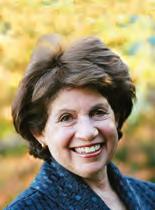
NANCY BERKLEY
Nancy Berkley is an expert on women’s golf and junior girls golf in the U.S. Nancy is a member of the World Golf Foundation Women’s Committee, and a member of the National Golf Foundation. She shares news about women’s golf – along with her opinions on www.nancyberkleygolf.com. Nancy has served on the governing boards of two golf clubs and currently is on the green committee and marketing committee at Frenchman’s Creek Beach & Country Club. She is a contributing writer for LPGA publications.
The articles in BoardRoommagazine generally present and discuss a specific issue or topic. I welcome the editorial direction as inspiration for the articles I write for “Nancy’s Corner.”
However, I found myself struggling with this issue’s theme of “Sustainability.”
After six decades of playing golf, thoughts and messages about sustainability should have jumped off my keyboard onto the computer screen, but nothing was happening. My screen remained empty.
For inspiration, I decided to move away from the computer and tackle the problem differently. I had been delaying cleaning my storage locker. Now may be the time, I thought.
Perhaps some book or magazine from a decade ago would inspire me for this “Nancy’s Corner” message. So, I drove to my storage locker facility about a mile away, which was loaded with decades of boxes of files, old computer disks, carpet samples and lunch boxes from my children’s school days. Then, I climbed back to the shelves reserved for old golf magazines.
On top of the old magazines was the treasure: a 2005 USGA magazine with a picture of Morgan Pressel, the caption “The Now Generation’’ and the subtitle “A Triumphant Morgan Pressel at the U.S. Women’s Amateur.” I called Mike Whan, the
CEO of the USGA, to confirm that I could use this 2005 cover in this article – permission granted. My memories of Morgan begin 18 years ago, in 2005. Morgan and her father were members of Banyan Golf Club in West Palm Beach, FL. My husband and I were also members, and I was on the governing board. Most members knew about that young girl hitting balls on the practice range for hours. Morgan experienced tragedy as a young teenager when her mother died of breast cancer. Her father resigned from the club for financial reasons and his expanded role as both mother and father to Morgan and her sister.

Banyan Golf Club played an important role at a critical time in Morgan’s life. The club granted Morgan a complimentary membership to use the course, teaching pros and driving ranges after school and on weekends. I recall watching her on the tee, amazed at her talented swing.
The club and its board also recognized her personal, family and financial challenges. For example, the travel expenses to a junior tournament put a financial strain on the family. I specifically recall a Banyan meeting where the Board voted to purchase an appropriate tournament golf bag for her first important tournament.
Tucked inside that 2005 USGA magazine in my locker, I found Morgan’s handwritten note thanking the club’s president for the roses sent to honor her first tournament, adding: “It always helps to have a beautiful, quiet and friendly place to practice.”
As a side note, in memory of her mother’s death from breast cancer, Morgan has financed and promoted breast cancer awareness through her traveling van equipped with mammogram equipment. Many lives have been saved as a result of Morgan’s personal tragedy and generosity. In addition, she continues to improve the lives of young girls by promoting golf. She is also among the greatest promoters of women’s golf. “Thank you, Morgan” for all you have done and for being a model of personal sustainability.
Morgan remains a role model for “sustainability.” As she grew, her talent grew. She participated in over 300 LPGA tournaments. She finished in the top 10 in 66 tournaments. Golf is a lifetime sport. The handicap system enables a level playing field for competition; however, golf is still enjoyed at a non-competitive level. Golf also reinforces humility. Not every shot is what we hoped for.
This year, the sustainability award goes to Morgan with a special notation. She will be the assistant captain of the 2023 US Solheim Cup Team of the top 12 American female golfers at the Solheim Cup, which will take place Sept. 22-24 at the Finca Cortesin course in Spain.
Morgan will work alongside captain Stacy Lewis as Team USA plays against Team Europe using three different formats: best ball of partners, alternate shot and singles. So don’t miss it in Spain or on your local television network. Take it one step further. Make the Solheim a fun event for your women golfers: Have a “pick the winner” contest or guess how many “birdies” will be made. Also, use the team formats at your course. Try an alternate shot tournament to prepare your members for watching the Solheim. Skill is important, but “chance” always has a place in golf.
Watch how players demonstrate personal stability as they play three days of serious competition. Keep your eye on Morgan. Set up a TV in a large room so members can watch the matches and invite your golf professionals. This is a great opportunity to use televised golf for lessons. BR
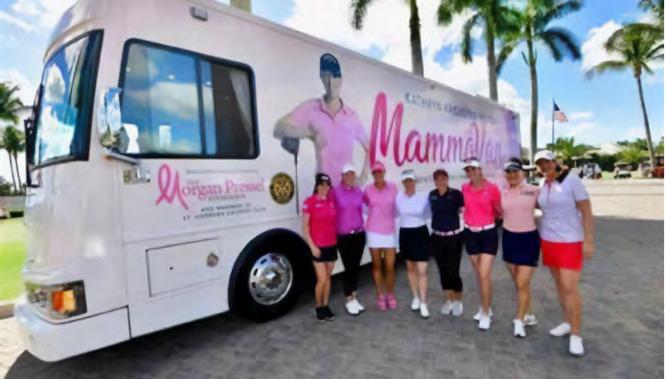
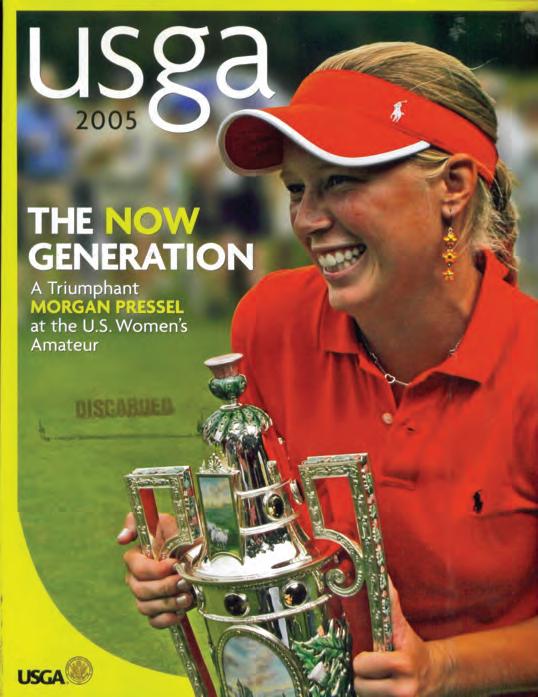
Ensuring the health and safety of your club members, employees, and guests is more critical than ever.
While standard disinfection services are necessary, their effectiveness remains uncertain, and surfaces are prone to immediate recontamination. The truth is you never really know how clean or contaminated your facility is. It’s time for a gamechanging solution – introducing Peak Health Advantage™ by Everest Microbial Defense®.
Our comprehensive system goes beyond traditional cleaning methods, targeting the three main modes of microbe transmission: surfaces, hands, and air. With Peak Health Advantage™, we transform the invisible threats in your club into visible, controllable solutions, providing 90-day protection and peace of mind.
Enhanced Safety: Our advanced antimicrobial solutions compliment your club’s existing disinfection services by providing an ongoing reduction of future contamination. This is enhanced through facility testing, verification and tracking to not only prove our system’s effectiveness, but your commitment to your members’ health and safety.
Measurable Results: Our ability to test surfaces for microbial activity allows us to provide ongoing analytics which illuminate how well our system is maintaining a clean and healthy environment. This unmatched level of accountability also allows us to address any problem areas which may require special attention.
Credibility and Confidence: Our certification badge, complete with a QR code, can be marketed prominently at your club.
Scanning the code allows members, guests, and employees to see that your facility is protected by the Peak Health Advantage™ – a powerful marketing opportunity showcasing your commitment to providing a healthy environment.
Tailored Solutions: We understand that every club has unique needs and requirements. Our team of experts will work closely with you to create a customized plan that fits your club’s specific demands, ensuring seamless integration with your existing operations.
By investing in the Peak Health Advantage™, you demonstrate your dedication to the well-being of everyone who walks through your doors. Give your club members the confidence they deserve and offer this signature membership amenity.
Take the first step with a complimentary consultation. Visit our website and fill out a contact form at peakhealthadvantage.com to get started today. BR

Entry matting plays a significant role improving cleanliness, safety, club branding, and aesthetic appeal.
Country club general managers understand the importance of creating an inviting and pristine environment for their members and guests.
Country clubs typically experience a high volume of foot traffic, with members and guests frequently entering and exiting the premises. This constant flow of people brings along dirt, debris, and moisture from the outdoors. Without proper entry matting, these elements can quickly accumulate on interior floors, leading to a less appealing environment and increased maintenance costs.
General managers of country clubs recognize the need for effective entry matting solutions to tackle these challenges. Proform can help you choose the right mats that can efficiently trap dirt, debris, and moisture at the entrance, preventing them from being tracked throughout the facility. This not only keeps the floors clean but also reduces the risk of slips and falls, ensuring the safety of members and guests.
When selecting entry mats for a country club, general managers need to assess the volume of foot traffic at various entrances and select mats that can withstand heavy use.
Second, general managers should choose mats that are appropriate for the club’s indoor and outdoor areas. Outdoor mats should be weather-resistant and capable of handling rain, snow, or other environmental conditions. Indoor mats should effectively scrape off dirt and debris while providing a non-slip surface.
Third, the climate of the club’s location should be considered. Clubs situated in regions with heavy precipitation need mats that excel at moisture absorption and preventing slips. Mats made of absorbent materials like nylon or polyester are ideal for such conditions.
Lastly, general managers should consider the size of the mats to ensure they fit the entrance area properly. Mats that are too small may not effectively capture dirt and moisture and can appear too insignificant at club entries. . Finding the right balance is crucial for both functionality and aesthetics.
General managers with assistance from Proform play a key role in ensuring the selection of appropriate mats. Proform considers factors such as foot traffic, indoor/outdoor use, climate, branding, and size. Proform is available to help GMs choose entry matting solutions that effectively maintain cleanliness, enhance safety, and contribute to the overall ambiance of the club. With the right entry mats in place, country clubs can create an inviting and pristine environment for their members and guests. BR


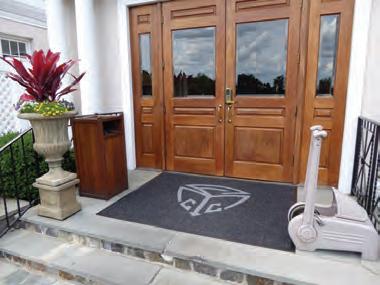

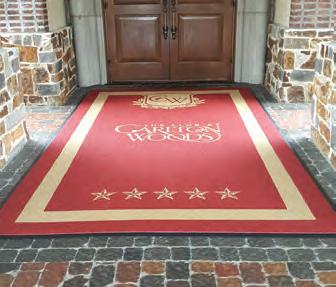


The Creative Summit inspires and empowers club employees to create exciting content to help their clubs communicate with members more effectively.
“They go back to their clubs with a ton of creative ideas and the skills to create cool content,” said Ben Lorenzen, who organizes and hosts the hands-on conference, now in its fourth year.
Lorenzen is the creative director at Champions Run in Omaha, NE. He is also a public speaker and talks about Champions Run at his speaking engagements.
He works on the Creative Summit as a side gig, with support from club management and staff at Champions Run, where the conference takes place.
The first Creative Summit took place in August 2020. Lorenzen had planned a small-scale, intimate conference with no more than 20 participants, but most people who had signed up canceled because of the COVID-19 pandemic. Four people attended.
“The easy thing would have been to cancel the conference,” Lorenzen said.
“But we thought, ‘Let’s go with it. We’re on to something.’ ”
The Creative Summit is for club staff, including youth directors, membership marketing people and club professionals.
It started as a two-day event, but participants requested more days.
They learn from experts about graphic design, video production, video editing, social media, photography, drone photography, content creation, storytelling, analytics, marketing and promotion, and digital communication.
“They need an opportunity to learn,” Lorenzen said about the skills and knowledge, tips and tricks participants acquire at the conference.
“A lot (of the participants) have never flown drones,” he said. “The first time they do is here. They see how easy it is.”
Conference participants also take part in fun activities, such as goat yoga.
The Creative Summit, which this year takes place from July 28-Aug. 1, has changed over time.
“We keep tweaking it,” Lorenzen said. “Some components stay the same, and we eliminate what participants are not interested in.”
Lorenzen and his team also add new topics.
At the 2023 edition of the Creative Summit, for example, conference participants will learn from an Apple employee how to get the most out of their iPhones.

The Savannah Bananas baseball team, known for its hijinks on the field (think basketball’s Harlem Globetrotters), is bringing its marketing team.
Inspiration and sparks of creativity for bringing clubs to the next level also come from experiencing the culture and energy of Champions Run, Lorenzen said.
With activities such as water wars, a member-run event.
During water wars, the pool closes for 20 minutes while staff, members and conference participants have a squirt gun fight.
Lorenzen said about the Creative Summit: “It inspires people to be better than they thought.” BR



CHRYSSOULA FILIPPAKOPOULOS
Chryssoula Filippakopoulos is the copy editor and Innovative Ideas editor with BoardRoom magazine. She was a newspaper reporter for more than eight years and worked as a marketing and communications specialist for 16 years. She is a graduate of the School of Journalism at Toronto Metropolitan University (formerly Ryerson University) in Toronto, ON.
If you have an Innovative Idea you’d like to submit, please send them to boardroom@studiodelmar.net
Mixologists at El Niguel Country Club are shaking things up with craft cocktails that leave members wanting more.
Matthew Salinas, Marcelo Benitez and Lily Felix, chefs of the beverage industry, are serving a menu of custom cocktails that reflects seasonal changes and the latest trends in mixology – the art and craft of mixing drinks.
“Our staff’s custom cocktails showcase their creative mixology skills while educating our members on the art of mixology, with unique ingredients and techniques, which creates a deeper appreciation for the craft,” said Ruthie Sheffield, past president and member at El Niguel, in Laguna Niguel, CA.
“Our mixology program truly adds an extra level of upscale sophistication, excitement, and atmosphere to our club, enhancing our overall member experience.”
Jimmy Whalen, an equity member and chief executive officer of a technology company, hosts business events at the club.
“The mixology experiences are especially memorable,” Whalen said. “My guests learn about the craft of mixing specialty cocktails and then enjoy tasting the results. This makes for a unique, interactive evening that goes far beyond a simple cocktail party.”
Lori LeBard, assistant general manager at El Niguel, met with Salinas, Benitez and Felix in 2021 to discuss adding craft cocktails to the beverage offerings.
The trio trained for almost two years.
First, with a mixology consultant who spent eight weeks at the club. Over six months, a mixologist and educator coached the team to make syrups from scratch, dehydrate fruit and create the perfect concoction.
Team members completed a mixology certification program online and acquired WSET Level 1 Wines and WSET Level 2 Spirits certifications.
“Since participating in the mixology program, I’ve discovered a newfound sense of skills that has given me the confidence to validate my potential,” Salinas said.





“It has not only honed my ability to create contemporary and sublime concoctions for our members but also has empowered me to create an infectious energy that contributes significantly to the club’s success. In addition, the program has truly been transformative in creating a culture that fosters a sense of camaraderie among my colleagues, allowing us to flourish and grow as a team.”
The team displayed its expertise and creativity at the club’s first speakeasy event on March 11.
About 100 members attended an event that featured handcrafted cocktails, lounge seating, live entertainment and a reverse happy hour menu.
Exquisite cocktails and an air of mystery and intrigue made the event a success, LeBard said.
Members did not know the date, location or other details until registration opened four weeks before event day. They used a code to enter through a secret door.
“The ENCC team did it again with this incredible event that transformed the club into an actual speakeasy,” said member Lauren Turcutto. The club plans to hold three more speakeasy events this year. BR



You’re a what???
Managers ask about titles—lots.
GREGG PATTERSON
Gregg Patterson is founder and president of Tribal Magic. He can be reached via email: GJPAir@aol.com
What title should I put on my business card that’ll let others know who I am and what I do? What title would provide a deeper understanding of the hats I wear—and stimulate a discussion to explain what I do? What badge could be worn, what title could be used that announces to the membership, the staff, the board and the world that this is my job, I wear lots of hats and my job is a biggie?
What title should be used to educate the unknowing?
Club manager?
General manager?
General manager/MBA?
General manager/COO?
General manager/COO/CEO?
CEO?
And what do managers say when The Innocents ask them to explain the title they’ve chosen?
Club managers wear many hats, do many things and struggle to give themselves a title that “says it all” in a word or two. It’s tough to explain “who they are” and “what they do” in a way that the MBAs, captains of industry, billionaires, headhunters, the board, committees, members and staff can understand, appreciate and accept. The right title and the right explanation are critical in the boardroom, during committee meetings, hallway discussions, staff orientations and while negotiating The Big Buck-Benefit Heavy compensation package during review time.
A new title’s needed that captures what managers do, are responsible for, oversee and have mastered. A title that’ll stimulate questions and provide understanding.
Maybe a manager’s business card should simply say that they’re The Club Umbrella. Huh???
Many jobs and lots of “must do’s” are gathered together beneath and protected by The Umbrella. Those who “do” Umbrella are responsible for doing many things with competence at different times, with different people, in different places and in different ways. They’re “deep generalists” who know a little about lots and “deep specialists” who know lots about a couple of things.
Consider these “I do’s” beneath The Big Umbrella.
GM—the general manager. They deliver the hospitality experience and The Warm Embrace to members and staff.
They’re the head cheerleader generating Big Happy for the entire club community.
COO—the chief operating officer. They handle the business side of the operation. Efficiency. Metrics. Numbers. Financials. Bank loans. Insurance policies. The logistics side of the club equation. They monitor the numbers and efficiently deliver The Club Experience with the least expenditure of time, money and resources.
CEO—the chief executive officer. They think deeply about the future, identify strategies, smell out trends in the marketplace, research the needs, wants and expectations of the members and determine how to better align the club culture with what’s happening now and will be happening in the future.
Team builder—the manager defines the team needed, finds and hires the right people, orients them to the club culture, establishes meaningful goals, provides tools and tactics, finds opportunities for staff-to-staff bonding, generates continuous improvements and stimulates “long time-big time” team loyalty.
Wave rider—waves are the norms, paradigms, values, guiding principles and unique characteristics of a national culture at a given time and place. A wave rider is a “historian” who understands past waves and how they were ridden, a “manager” who appreciates the current wave and how it should be ridden and a “futurist” who’s trying to identify the wave that’ll be ridden in the future.
Flag carrier—the symbol of the club, the example of the good, the highly visible someone who’s leading the charge, trumpeting the message and living the example.
Internal consultant—who has a Template of The Good to use while auditing the club. An internal consultant has the eyes to see “what is” and “what isn’t” during the audit, can provide a checklist for getting from “here” to “there” and has the critical eye to see if what needs doing is being done in a timely fashion.
Professor—providing continuous education to the staff, the members, the committees and the board. They do the research, write the papers, give the lectures, inspire curiosity and energize the pursuit for “knowing more.”
Mender of holes—identifying what’s missing, flawed or under-developed in staff, boards and committees and then, like a good repairman, will mentor and coach Those-With-Holes to fill the gaps and strengthen the fabric.
Trench diggers—helping The Team do the stuff that needs doing when crunch time arrives. Park the cars. Seat members. Ride the mowers, file the papers, stock the shelves, pour the drinks and cook the eggs when there’s an unexpected event, COVID strikes, a hurricane arrives, or a flood of business overwhelms the employee team.
Medicine man—by identifying the holes in their own umbrella and by initiating improvements with the help of a professional paid coach, an unsentimental mentor or a Meyers-Briggs/Lumina Spark-type test, the one in charge can see what needs doing, starts working on what’s wrong and begins the self-help healing journey.
Friendship generator—clubs, teams and communities are built on relationships, relationships are built on friendship and the club manager is the example of and the engine for friendship generation. The manager gives friendship, invites friendship and generates friendship by giving everyone within the club community—members, staff and guests—The Warm Embrace. Club management is a big job with lots of “I do’s” that need doing. The manager’s title should say it all.
The Umbrella.
Most managers are already doing The Umbrella. They short-change themselves when their business card says club manager—or GM—or GM/COO—or GM/COO/ CEO—or simply CEO. They’re all these things, and the sum of it all is lots more than any one of these titles.
Club managers who do club management right do it all. They wear many hats. They’re a jack-of-all-trades.
If you’re a club manager, you are The Umbrella. Shout it to the world. Be proud. And enjoy the journey. BR



GORDON WELCH
Gordon Welch, president of the Association of Private Club Directors, has over 20 years’ experience in private clubs and 12 years of experience as an association executive and registered lobbyist. For more information or to discuss your orientation, you can reach me at gordon@boardroominstitute.com or (918) 914-9050
As a club leader, boardroom behavior is your responsibility; it is everyone’s responsibility. As president, you set the tone, and as a board or committee member, you enforce a business character.
Whether your business is a Fortune 500 or a private one, you set the attitude in your boardroom. When you lead meetings, do you enjoy or allow liquor, side conversations or cell phones? I’m guessing your company’s boardroom is much different than the meetings at your club.
One of my pet peeves is the “sidebar” discussion. You know the person I’m talking about. They have an opinion, and even if the discussion has concluded and the president is speaking, they need someone to hear their final say. Or the board member who has a conflict with another person and likes to sideline chat while others are talking.
This behavior is rude and has no place at the board table. As a board member, you need to listen carefully to your fellow board members, carefully consider and respect the opinions of others and fully participate in the discussion. It is not time to criticize others or their opinions or talk over one another.
It may be a touchy subject for some of you, but let me say out loud: “No booze in the boardroom!”
Your private club is an institution – a multimillion-dollar business, and it should be treated like a business when you are governing, don’t you think?
I recently worked with a club that had no boardroom guidelines – none. Most board members would gather in the bar or men’s grill before a meeting and socialize, drink and have a “meeting before the meeting.”
A few of the individuals would drink in excess before the meeting. One individual had two drinks before the meeting and three to-go cups full of whiskey during the meeting. This person was not only a board member but the club’s attorney. As the meeting continued, the person slurred their words and tension grew as the discussion became sidetracked.
The president was embarrassed and mumbled something about the board member (attorney), who only had three more meetings until the end of his term. Again, would you
allow anyone on your corporate board to make financial or governance decisions while so inebriated? I would hope not.
Alcohol can make it difficult to think clearly and make good decisions. It can make it more likely that you will get into potentially harmful or dangerous situations you will regret the next day. Alcohol changes brain chemistry, which impacts mood, behaviors, thinking, memory, physical movement and bodily functions, which may have costly side effects.
Alcohol also decreases the activity of the prefrontal cortex. This part of the brain helps you think clearly and rationally and make decisions. When you drink, alcohol makes it harder for the prefrontal cortex to work as it should, disrupting decision-making and rational thought. In this way, alcohol prompts you to act without thinking about your actions.
Alcohol reduces the functions of the behavioral inhibitory centers in the brain, Forbes reports. It also slows down how the brain processes information. For example, when you see, hear, taste or smell something, your brain processes this information and then tells you how to think or feel. Alcohol interferes with this process, making it harder for you to work out what you are feeling and making you less likely to be able to think through potential consequences.
When you drink, you may be less able to control your emotions, speak and act without thinking and situations may get out of hand faster than they would if you weren’t drinking.
I recommended that boards wait until after the meeting to eat and drink. An even better idea is to have breakfast meetings. Most everyone will need to go to work after the meeting, and your board will get down to business.
Board meetings are the “business of the club,” and business should be done in a business atmosphere. So don’t let your board, members or yourself down with poor decisions in the boardroom. BR



The thank-you letter is a powerful marketing tool you can use to position yourself above the competition. Interviewers have short memories. Some may say there is nothing more effective than the written word to etch yourself into your interviewer’s mind. Your note should accomplish the following:
• Thank the person for the opportunity to interview.
• Recap some of the conversational highlights.
from HR Committee Vilk | 42
As Avelar mentioned, the H-2B program is not limited to landscaping experts, and hospitality employers fill various positions using seasonal visa workers. Avelar can be reached at h2visas@escpvisas.com for more information on hiring El Salvadorian seasonal workers.
What are the seasonal worker program requirements? Demonstrating a seasonal need for the number of workers requested gets approval from the government. The need cannot be year-round, which makes some clubs better positioned for proving seasonality.
from Green Committee | 54
sustainable practices that they will follow and improve on throughout their careers,” says Jim Pavonetti, Fairview’s lead superintendent.
“Most student interns have limited experience, but they have great ideas and can add different perspectives that generate some great sustainable practices or changes to our programs. I always tell them that I hope to learn as much from them as they will learn from us.”
For the healthy club of the not-too-distant future, that mindset carries through from staff to management to board and members. And as golf continues to grow as a possible
from Club Governance | 88
mends or limit what policies the board may adopt in the BPM that Henry recommends.
Since club bylaws require member approval for any amendments, lifting a restriction on a board’s flexibility is solely dependent on the trust members have in the board. So, this brings to full circle the matter of member trust. How can a board implement some of these ideas if the members will not amend the bylaws that restrict the board’s authority to do so?
The answer, we believe, lies in first educating the board to ensure it understands the principles and best practices of club governance.
• Clarify any information you needed to check on for the interviewer.
• Overcome any objections: demonstrate that the concerns are not an obstacle but an opportunity and you’re fully prepared to meet the challenge.
• Reiterate your expertise: demonstrate in your thankyou letter how you can meet any needs, issues or challenges communicated in the interview.
• And, most importantly, sell your skills. “My experience in…makes me the best choice because…” BR
Country clubs in Massachusetts typically request garden maintenance workers from April through October, whereas golf courses in Arizona need landscape laborers/greenskeepers from October through June before the highest heat off-peak months.
Payroll records, revenues, golf rounds and calendars show seasonality. Application timing is also critical. Seasonal need applications are submitted with the Department of Labor 90 days before a start date, but please leave the filing logistics up to your trusted US immigration attorney. BR
pastime among younger people discovering it through Big Shots or Top Golf, getting them onto the course is the logical next step.
Demonstrating environmental commitment could tip the scales to “Let’s go, we need to go play a round of golf, and if we’re gonna do that, let’s play it at this place that’s doing the right thing.”
So, it’s clear that the next generation of potential club members is pre-wired for sustainable living, joining, working and playing. With ACSP for Golf certification in your pocket, you can meet them where they are and give them ample reason to become part of your family. BR
The board can then adopt those policies that are within the authority given to the board in the bylaws and publish them in a BPM. The BPM can then serve as a reference to demonstrate to the members how a change in the bylaws could allow the board to be more efficient and effective. Finally, by displaying its commitment to good governance, the board is more likely to convince the members to approve amending a restriction in the bylaws. BR
Henry DeLozier and Stephen Johnston are partners at GGA Partners. Liz McDowell and Fred Laughlin are directors at GGA Partners.
tions. Identifying priorities in advance and communicating them effectively keeps everyone on the same page and ensures expectations are in line.
While the above recommendations are important, the key to ensuring a smooth and successful transition for a new general manager/chief operating officer is a transition committee. This ad-hoc committee of three or four members serves as a sounding board, a source of club history and a foundation for support, questions and knowledge.
Committee members should be past or current board members who understand the club business model, are highly regarded by their peers and offer a fair and balanced representation of the membership. In addition, they should be demographically diverse, and their families should participate in club programs/amenities.
When looking at how to organize this group of members, start with one or two members of the search committee, a strong past president and one or two representatives from important constituencies at the club.
This committee acts as a filter beyond the board with the ability to highlight topics members are talking loudly about that are different from what the board or president directed. Made up of no more than four people, the transition committee can also help identify any blind spots the board may not know about.
Kopplin Kuebler & Wallace believes the transition committee can shorten the learning curve and ease the discomfort of being new for the general manager/chief operating officer.
“It’s the board’s job to work with the new leader to agree on three or four areas of focus and then communicate those priorities to everyone. Then, the transition committee can help filter through what everyone else feels is important,” said Tom Wallace, a partner with KK&W.
“This way if an issue arises, the group can help the GM/ COO identify whether it’s just one person’s complaint or if the board has blind spots because they aren’t in the know or not well in tune.”
The transition committee can also clarify why things are done the way they are and talk candidly about the state of the club, curmudgeon members and successes or failures.
Meeting with the new general manager/chief operating officer weekly for the first six months and then monthly for the next six months, this group provides consistent, confidential support for the first year. After one year, the general manager/chief operating officer may call the group together whenever a need arises.
“We’ve found this committee to be tremendously helpful for GM/COOs to ask questions and gain insight beyond just the board,” Kurt Kuebler, a partner with KK&W, explained.
“Instead of the new leader constantly going to the club president, it spreads the workload between several people and provides deeper insight and understanding. In addition,
this committee smooths the transition, especially in situations where a long-tenured predecessor retired or there was a difficult set of circumstances with the person previously in the role.”
The transition committee can also help the general manager/chief operating officer determine how to best disagree with the board or club president, and they can work through that process together. This eases some of the stress and frustration for the new general manager/chief operating officer and creates a better onboarding experience.
KK&W suggests the transition committee initiate an employee survey of at least the key leadership team shortly before the new general manager/chief operating officer begins so both the employees and the new leader understand the expectations and culture of key team members. This survey could be conducted with all employees to provide a deeper understanding.
“This whole process is intended to create a more positive onboarding experience for the new GM/COO and make it much more effective,” Wallace explained.
“Few clubs have transition plans or written orientation/ onboarding programs for this position. All too often, new leaders spend weeks looking for information themselves, being overwhelmed with questions and feeling frustrated as they learn the details of the club and their role. If we can provide new GM/COOs with the information, resources and the continuous support they need right from the beginning, it creates a better situation for everyone involved.”
Introducing the QR code (boxed)
The first 100 days lay a foundation for the long-term success of a new private club chief executive. Recognizing the care that should be taken during this time of great opportunity, we have compiled a list of action items to proactively support onboarding and acclimation. BR
Richard Kopplin, Kurt D. Kuebler, CCM & Thomas B. Wallace III, CCM, CCE, ECM are principals with Kopplin Kuebler & Wallace. https://kopplinandkuebler.com

aged to arrive at a clear and unified vision that meets the needs of all members,” Butler explained.
“Our friends at Kopplin, Kuebler and Wallace have developed a great industry benchmark for club governance. The tool is given to each board member and the board rates itself on 31 measures of success. The results benchmarked against the industry, serve as a great discussion point in board retreats focusing on what KK&W refers to as the five dysfunctions of a team.

“Without a doubt, the number one issue of a dysfunctional board is the absence of trust. Paraphrasing the author Steven Covey, in a low-trust relationship, almost anything that’s said will be misinterpreted because of a lack of trust.
“In a high-trust environment, you can say the wrong thing, but people will still get your meaning. We see lack of trust as a common characteristic of dysfunctional boards,” Butler articulated.
How, then, does a club measure the long-term effect of a dysfunctional board? Rapid turnover of general managers is one measurement.
“If the club has a GM leaving every one to three years, then the board is most likely dysfunctional,” expressed Banaszak. “The GM is blamed for the issues the board has most likely created. What is scary about a dysfunctional board is that the club becomes used to numb, negative symptoms of a bad board, and the club continues into a downward spiral of chaos,” he added.
GM Bado agrees.
“The long-term effects of a dysfunctional board include management turnover because, with a dysfunctional board, an employee lacks assurance that initiatives will be fulfilled and that employees have strong support for their club plans and careers. There’s a lack of consistency in programming and services, stagnancy in advancing the club into new endeavors and challenges, and a void of trust and confidence in the board and its decisions from the membership and management team,” Bado said.
“One very notable sign of club board instability is high turnover in key management positions. The hiring process is often led by recruitment and comparing talents and skillsets to the past rather than the future,” said Phil Harvey, principal of the Preferred Club insurance program.
“Today’s general managers are light years ahead of their predecessors because of educational and advancement opportunities in the industry. However, many of the
signals of overzealous boards are obvious in over-managing the staff and not fulfilling promises made up front in the hiring process.
“This lack of direction, consistency and understanding further emanates in their boardroom. Not allowing the general manager to perform their duties will stymie and ultimately diminish the club’s ability to capitalize on potential opportunities,” he added.
“Who are the private club stakeholders that suffer from dysfunction? The members and staff. Slow movement or indecision on the part of the club boards and their communities leads to disenchantment and severe financial loss to the organization.
“Most in the club industry relate liability to outside issues that are normally not in the hands of the board, such as third-party litigation. Today, the concerns of professional liability carriers connect directly to the behavior in the boardroom. Most issues that rise to the top are related to employment practices and discrimination.
“These areas of concern normally are a direct result of the board’s lack of communication and their indecisiveness in carrying out policy. Unfortunately, many boards would rather work around bylaws rather than change or modify them for the benefit of the club,” Harvey commented.
“A clear communication structure between the general manager and the staff, the club president and the board committees is essential. Effective communication is essential to promote cohesiveness and a resulting clarity among the rank and file,” he emphasized.
“There are a lot of key performance indicators (KPIs) to measure the long-term effect of a dysfunctional board. One would be the net growth over time as far as the reinvestment back into the club,” indicated KK&W’s Wallace.
“Dysfunctional boards don’t typically reinvest in the club to the level they should. High turnover rates of members and employees indicate the
presence of a dysfunctional board. I’d also speculate the club would have a harder time populating the board with positive, strong leaders because they aren’t going to want to get involved with a dysfunctional board,” he added.
“From a financial standpoint, a dysfunctional board is operationally focused as opposed to strategically focused,” stressed Club Benchmarking’s Butler.
“The most important financial metric is the club’s compound annual growth rate (CAGR), which measures members’ equity over time. A dysfunctional board cannot grow the club, which is seen in a flat or declining CAGR. A functional board is increasing the CAGR at a rate higher than the median in the industry and greater than inflation.
“From a member-experience standpoint, the member satisfaction score and the net promoter score are the measurements that are the best indicators of success. Those are two different measures – the membership satisfaction score measures satisfaction, and loyalty is measured by the net promoter score. The median in the industry is 5.8 out of seven for satisfaction and 46 for the net promoter scores,” he added.
“From an employee engagement perspective, the net promoter score is the best measure. Before COVID, the industry median was a dismal seven. With government stimulus and payroll protection money, pay increases, work-life balance adjustments, and other measures in the last two years, the industry has moved that score up to 21 at the median.
“In those three buckets – finance, member experience and employee experience – scores above the industry median towards the 75th percentile would indicate that the board is adding value. Scores at the median and below would indicate the board should be reconsidering their actions and processes,” Butler continued.
So, what is the road to a successful board? There’s agreement on several points.
“Strong leadership on the board, with a written and agreed-on vision for the club. The board must hire a strong GM and allow that person to build a strong executive management team focused on the club’s vision,” stressed Banaszak.
“An understanding of a committee’s role as advisory only because committees don’t take action. An understanding at the board level that dues will increase by at least three to six percent per year, based on the current economic situation. Any successful club also needs adequate funding for capital projects, i.e., capital dues or initiation fees available for capital only.
“Successful boards hold themselves accountable. A best practice is to have quarterly updates by the GM on the status of the strategic plan’s goals,” Banaszak maintained.
“The ingredients to a smooth road to a successful board consist of many elements,” said GM Bado.
TURN YOUR VISION INTO YOUR REALITY Leadership At A Higher Level...

“He knows the club business. He knows what people like us have gone through, particularly in recent years. Our work together was flexible and we had the opportunity to go off in different directions, which was really helpful.”
Chris Girardi, GM/COO Wayzata Country Club

Ted Gillary, CCM, CCE, ECM, CMAA Fellow Consultant & Search Executive 313-220-6140 | ted@kkandw.com
Effective club leadership in today’s complex operating environment requires a mindset of growth...
“Over the past year, our partnership with Chris has been a tremendous resource for our team. He has provided our leaders continuous mentorship and ensured implementation of a holistic leadership training and development program. These best practices have truly enhanced our club’s mission, employee culture, and member experience.”

Chris DeChillo
Mike Mainhart, PGA, GM Laredo Country Club
Hospitality Trainer & Leadership Coach 720-258-5937 | chris@kkandw.com
“Among the key ingredients are a general manager as a strong leader who can act as a conductor of the entire management team, including the board. Communication is also key, along with establishing a mission, strategic plan, and vision. These must then be communicated to the board and continually revisited throughout the board’s tenure.
“Developing a responsibility matrix with defined parameters that the volunteer board can follow and constantly reinforce helps create a successful board. In addition, resources such as a board policy manual that reflects the roles and responsibilities of the board help reinforce and guide the board’s mission and purpose,” Bado added.
“Board retreats, bringing in outsider experts, and oneon-one sessions with board members also help educate the board members on best practices. With the guidance of these reference materials, the board can maximize its focus on strategic items and minimize time spent on operational items.
“Identifying good candidates for board positions also is vital and can begin as early as the committee level because many times, it’s from the committee members that board members are identified.
“Experience is the key in each board position, whether it be house, membership, finance or greens, with each standing committee led by a second or third-year member of a three-year term. This allows a new member to be mentored by a tenured experienced head.
“Members would be elected by the nominating committee, not the membership. Thus, eliminating the potential of a popularity contest, since in today’s world, we are running a business that requires sound advice and experience,” Harvey added.
“Through my many years of providing professional liability to thousands of private club management teams, those with deep-seated skill sets operate most efficiently. Likewise, each committee head is suited by background and knowledge base to offer their fellow board members and management teams the most well-rounded leadership.
“There is a pre-defined, clear-cut mission statement on how the board will achieve the business plan for the current and future years. However, committee chairs should look at the big picture and allow their capable management to carry out their mission,” Harvey stated.
A dysfunctional board of directors can result in a decline in the club’s financial performance. For example, a board that’s unable to agree on a budget may result in overspending or underspending, leading to financial instability. Similarly, a board that’s unable to make decisions on capital expenditures may result in deferred maintenance or missed opportunities to improve the club’s facilities.
“Having a diverse board representative of the entire membership – male and female, older and younger, golf and social members – also helps create a board that can fully represent the entire membership and work on programming and decisions that benefit the majority of the club members, its staff, its programming and its membership,” Bado emphasized.
“Several elements make up a successful board. First, it begins with a great board orientation. Secondly, a great strategic plan. Third, a strong board policy manual. Fourth, a great GM that can be a thought partner and administer support to ensure the board stays on track,” Wallace accentuated.
“There should be clarity to the nominating and election process, resulting in good governance. Professionally speaking, the most difficult coverage to place because of an event is Directors and Officers Liability,” explained Preferred Club’s Harvey.
“True success is ‘build the board from the bottom up.’ It requires a savvy nominating committee that recognizes talent sets to meet the various committees’ needs in the future.
As Club Benchmarking’s Director of Governance & Leadership, Steve Mona discusses this issue in his work with boards and GMs.
“Based on annual data from more than 1,000 private clubs and direct interaction with hundreds of private club boards, the following are key characteristics of highly effective boards:
1. They rely on objective data in decision-making.
2. They have a clear understanding of roles/accountability between GM/COO, board and committees.
3. They ensure that the club’s current vision, mission, core values and strategic plan permeate the club’s culture.
4. They develop realistic operating and capital budgets that connect directly to the strategic plan.
5. They regularly survey membership on the components of member loyalty – and they act on the results.
6. They develop annual business plans that connect directly to the member loyalty survey, and
7. They develop, continuously enhance, and live by a strategic governance model embraced by the club.
As a publisher who has been associated directly with several and visited hundreds of private clubs, I understand and advocate the importance of a functional board of directors in maintaining the smooth functioning of a private club. The board of directors plays a critical role in shaping the club’s strategic direction and ensuring its financial well-being. On the other hand, a dysfunctional board of directors can cause a wide range of issues that can have significant financial and reputational consequences.
As our contributors have indicated, the cost of a dysfunctional board of directors of a private club can be measured in various ways. Firstly, there is the cost of poor decision-making. A dysfunctional board of directors is often characterized by a lack of cohesion and a failure to agree on important matters.
This can result in poor decision-making, which can have severe consequences for the club. For example, a board that cannot agree on a new membership policy may result in lost opportunities to attract new members, leading to a decline in revenue.
Secondly, a dysfunctional board of directors can result in high turnover rates of staff members. A board that’s unable to function cohesively often leads to conflicts with the club’s management. This can result in high turnover rates among staff members. High turnover rates can be expensive for a club in terms of recruitment and training costs and the impact on the quality of service provided to club members.
A high staff turnover rate can also result in a loss of institutional knowledge and a lack of continuity, which can negatively impact the club’s reputation.
Thirdly, a dysfunctional board of directors can lead to declining member satisfaction. Private clubs rely on member satisfaction to maintain their reputation and attract new members. A dysfunctional board of directors can lead to a decline in member satisfaction because members may feel their concerns are not being heard or that the club is not being run efficiently. This can result in members leaving the club,
leading to a decline in revenue and, again, a negative impact on the club’s reputation.
Fourthly, a dysfunctional board of directors can result in a decline in the club’s financial performance. The board of directors plays a critical role in shaping the club’s strategic direction, and a dysfunctional board can result in poor financial performance. For example, a board that’s unable to agree on a budget may result in overspending or underspending, leading to financial instability. Similarly, a board that’s unable to make decisions on capital expenditures may result in deferred maintenance or missed opportunities to improve the club’s facilities.
Finally, a dysfunctional board of directors can damage the club’s reputation. Private clubs rely on their reputation to attract and retain members, and a dysfunctional board can damage that reputation. For example, disputes between board members can become public, damaging the club’s image in the eyes of members and the wider community. Similarly, poor financial performance or declining member satisfaction can lead to negative publicity, further damaging the club’s reputation.
So, as we see, the cost of a dysfunctional board of directors of a private club can be significant. Poor decision-making, high staff turnover rates, declining member satisfaction, poor financial performance and damage to the club’s reputation are all potential consequences of a dysfunctional board.
Private clubs should ensure that their board of directors functions cohesively, with a clear strategic vision and a commitment to effective decision-making. This will help ensure the club’s long-term success and protect its reputation and financial well-being.
At least, that’s the way I see it. BR
John G. Fornaro, publisher

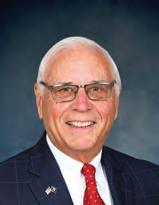
DICK KOPPLIN
Richard (Dick) M. Kopplin, CMAA Fellow, is a partner with Kopplin, Kuebler and Wallace, a private club industry executive search and consulting firm. You can reach Dick via email: dickopplin@aol.com
If only I had engaged the “Pilot’s Pause” before firing this employee, it might have saved me from making perhaps the worst management decision in my club management career. And one that I still think about to this day.
I often refer to the “Pilot’s Pause” when talking to club general managers and always encourage them to wait for 24 hours before making an emotionally charged decision.
The airlines have a rule that pilots cannot drink alcohol for eight hours before flying, but they suggest to their flight crews that 24 hours is a better and recommended protocol.
I began to engage this suggested practice in my club management career shortly after reading about it. Waiting 24 hours or more to respond to a “hot button issue” allows you to “respond” to a problem and not “react” to it.
Webster’s Dictionary defines react as a negative way to address an issue and conversely defines respond as a positive way to handle a problem. Unfortunately, I learned of this tactic after making what I consider one of the worst management decisions of my career.
Jason was the very best caddie we had at the club and consistently received the highest ratings from the members for whom he caddied. The club had sponsored him for the Evans Scholarship, an all-encompassing four-year college, highly sought-after scholarship. He was very likely going to be awarded that valued scholarship. And then it happened.
Not only did Jason caddie for us, but he also worked as a bus person on our banquet staff to earn extra money. He would often caddie in the morning and work with our banquet team in the afternoon. The club was hosting a wedding reception on our outside patio lawn, and I was casually viewing the function from a second-story window. The bartender had stepped away from the service bar and that is when I observed Jason pour himself a vodka and coke in a plastic cup.
One of my unbreakable rules at the club was that I didn’t allow any employee to drink while on duty. I set the example and our employee team knew that not only did I personally adhere to that standard, but I would terminate any employee caught drinking on the first offense.
I took it that seriously. I walked down to the function patio and confronted Jason, who had the plastic cup in his hand. He admitted to what he had done and I told him he could go home as his employment with the club was finished. The termination of Jason resulted in his becoming ineligible for the Evans Scholarship since the club withdrew its sponsorship. Jason was devasted by the news and his father came to visit me at the club. He explained that he would never have the money to pay for four years of tuition and this termination would probably end Jason’s dream of going to college. He was in tears as he asked me to reconsider.
I called a meeting of our club department managers and asked them for their opinions. They unanimously supported my decision because they truly believed in our employee policies and standards and did not believe there should be an exception.
I also called our club president and after a thorough discussion, he concurred with my action. My next call was to Jason’s father, where I sadly informed him that I was standing by my decision, as gut-wrenching as it was for me. And quite frankly, it still is today.
Upon reflection, I have often thought that had I engaged the “Pilot’s Pause”, I would have suspended Jason until I had a little time to process the situation. I would have had time to respond rather than react.
I sense that my decision would have been different. I would have terminated his employment in the clubhouse, but I would have allowed him to continue to caddie, and that probably would have ensured his receiving the Evans Scholarship.
I don’t know if Jason ever went to college. I do know that he did not receive the Evans as another caddie from our club was awarded that scholarship. I’ve struggled with this judgment for many years and if I have learned anything, it is that emotionally charged actions and life-changing decisions need at least 24 hours for an appropriate response. This much I know for sure! BR
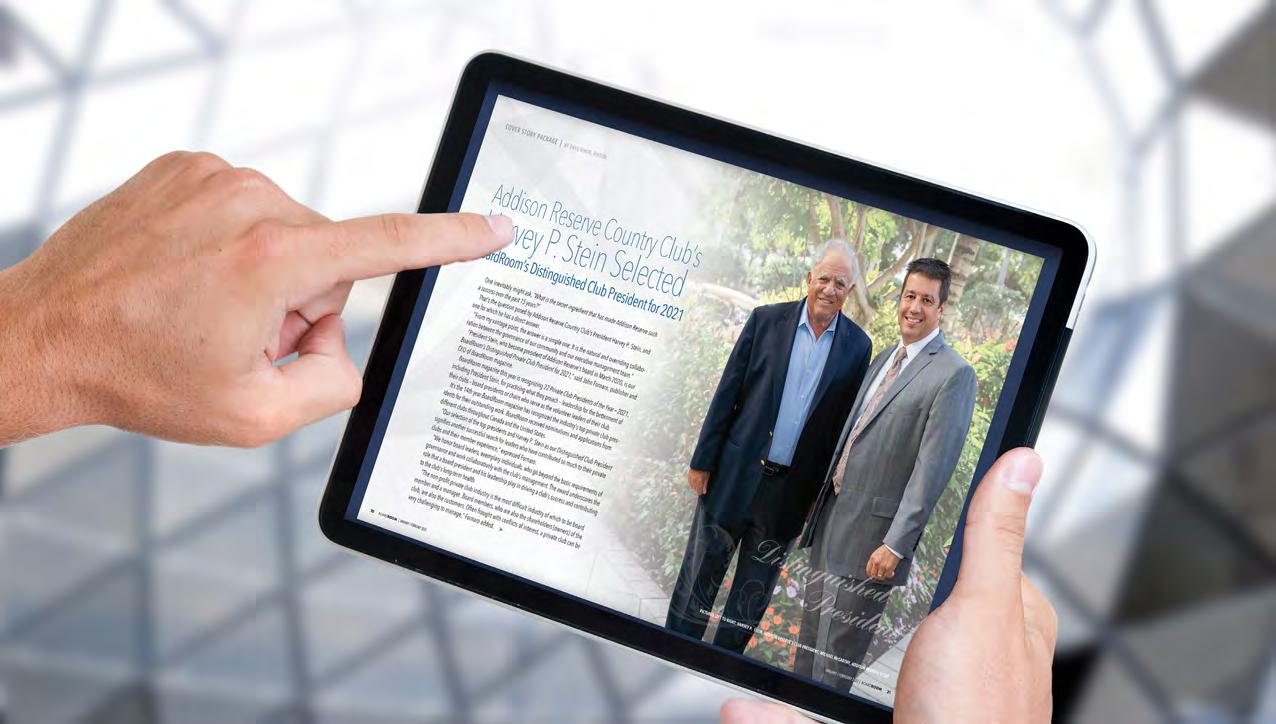


























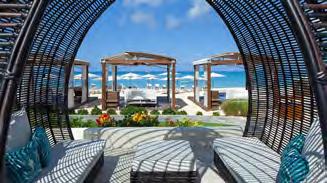


Salil S. Bokil, GM, Hollywood Golf Club, Deal, NJ
Marcelo Benitez, mixologist, El Niguel Country Club, Laguna Niguel, CA
Kris Butterfield, director of membership, communications & public relations, Bethesda Country Club and president of PCMA.
Three Carpenter, GM, Edina Country Club, Edina, MN
Barrett Eiselman, GM, Bel-Air Club, Pacific Palisades, CA
Don Emery, GM, Grey Oaks Country Club,Naples, FL
Lily Felix, mixologist, El Niguel Country Club, Laguna Niguel, CA
Mark Gallaudet, GM/COO the Country Club at DC Ranch, Scottsdale, AZ
Peter Jackman, GM, Terminal City Club, Vancouver, BC, Canada
Dr. Bonnie Knutson, the Country Club of Lansing and the Michigan Athletic Club
Bob Kline, president, Country Club at DC Ranch, Scottsdale, AZ
Lori LeBard, assistant GM, El Niguel Country Club, Laguna Niguel, CA
Nancy Levenburg, member, Spring Lake Country Club, Spring Lake, MI
Ben Lorenzen, creative director, Champions Run, Omaha, NE
Brian Maxwell, president, Edina Country Club, Edina, MN
Paul Mihailides, president, The Preserve Sporting Club and Residences, Richmond, RI
Elizabeth Mullen, president, Bel-Air Club, Pacific Palisades, CA
Jim Pavonetti , lead superintendent, Fairview Country Club, Greenwich, Connecticut
Pamela Radcliff, SHRM-SCP, CAM, director of human resources, Hideaway Beach Club, Marco Island, FL
Marian Robson, president, Terminal City Club, Vancouver, BC, Canada
Matthew Salinas, mixologist, El Niguel Country Club, Laguna Niguel, CA
Philip Santomaro, GM, The Preserve, Richmond, RI
Larry Savvides, CCM, CCE, CAM is COO/GMHunters Run Country Club, Boynton, Beach, FL
Brad Schreier, president, Grey Oaks Country Club, Naples, FL
Steven Schultz, president, Hollywood Golf Club, Deal, NJ
Ruthie Sheffield, past president and member, El Niguel Country Club, Laguna Niguel, CA
Rosie Slocum, director of membership and marketing, BallenIsles Country Club, Palm Beach Gardens, FL
Lauren Turcutto, member, El Niguel Country Club, Laguna Niguel, CA



Seamlessly Integrated and Embedded within Northstar Application
Purpose built dashboards - Improves operational efficiency and offers world class member experience
Easy data driven decision making Powerful analysis, reporting and visualization tools